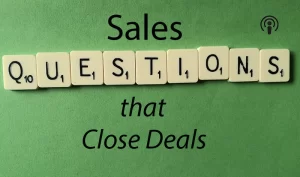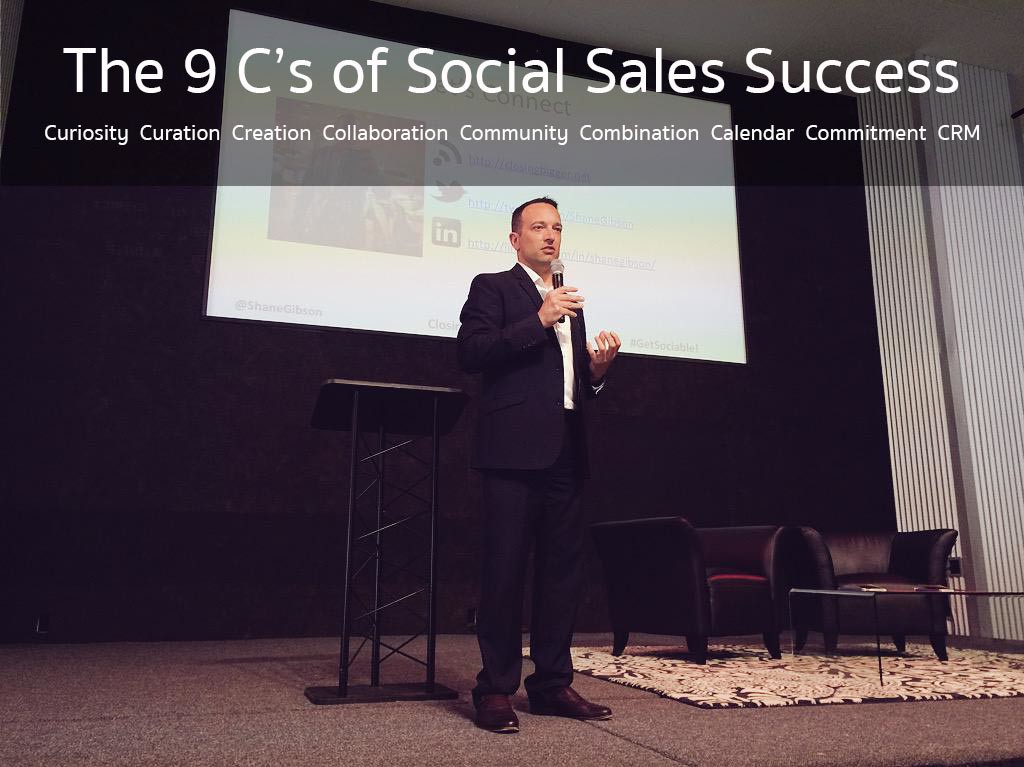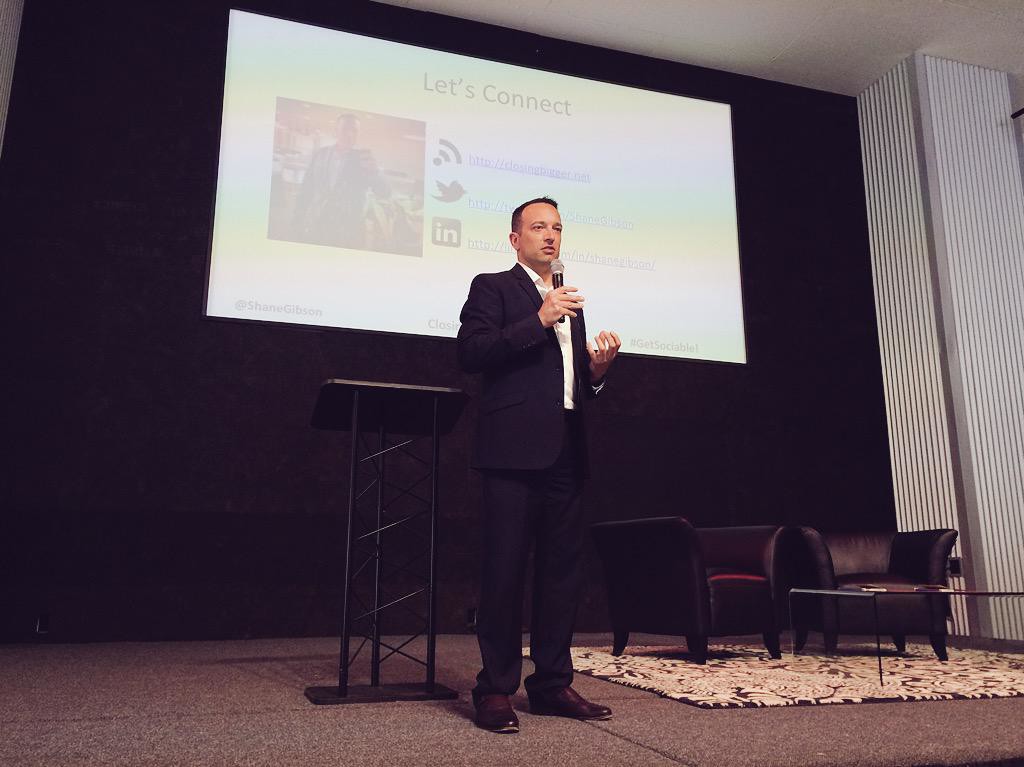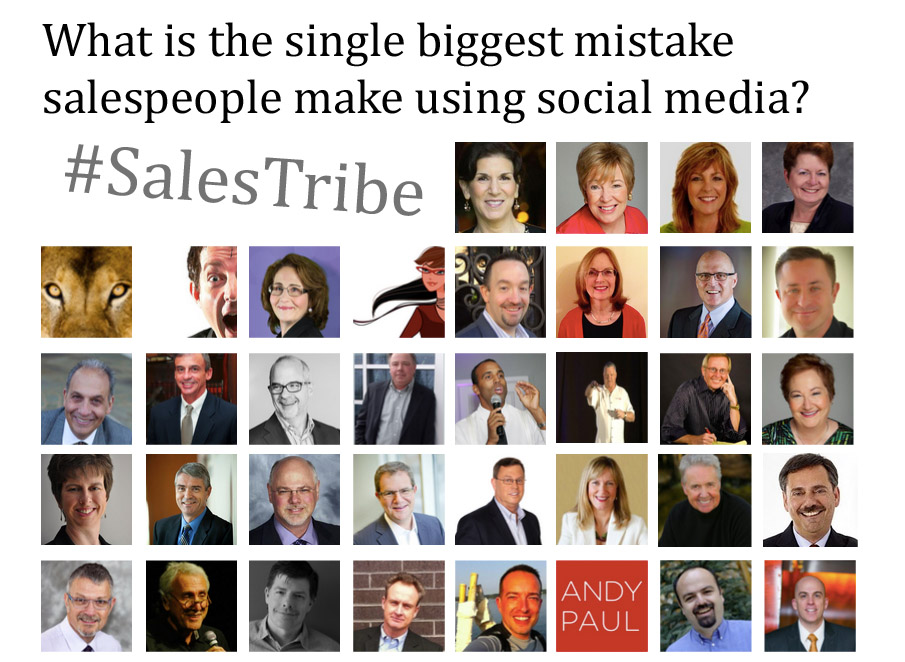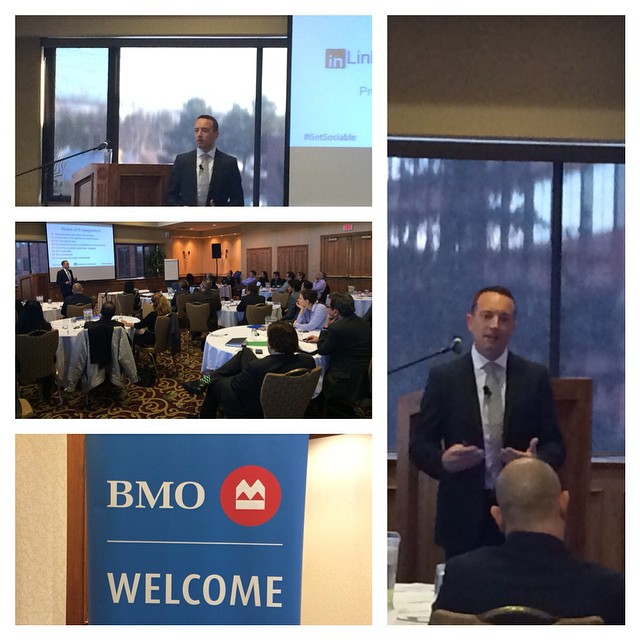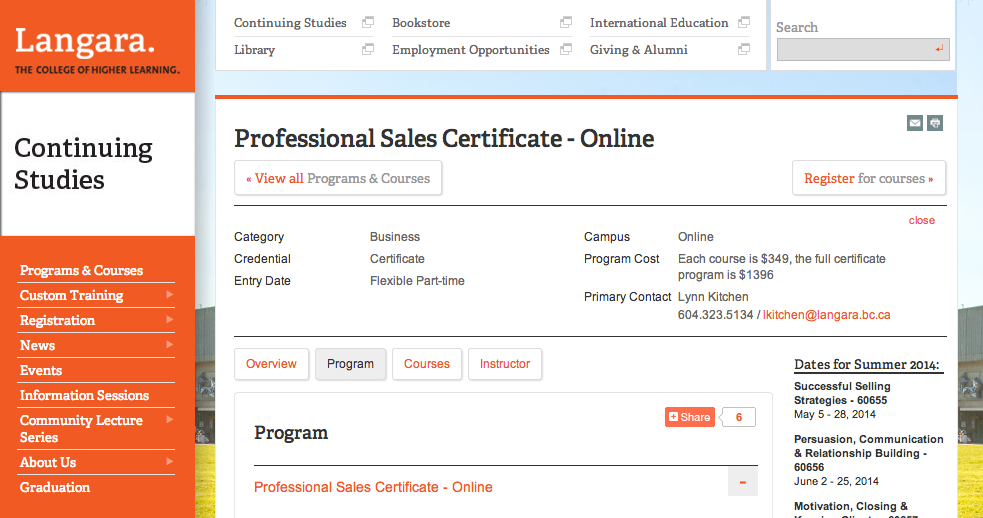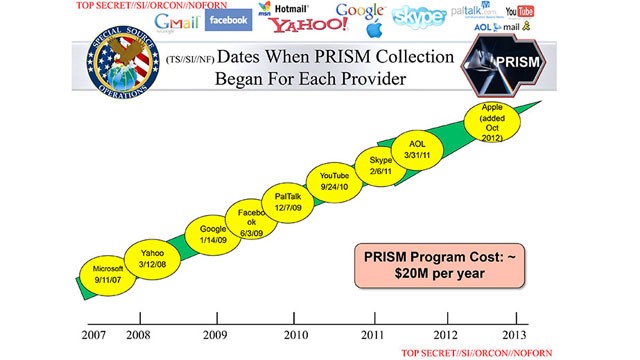Sales Leadership Versus Sales Management – Podcast 10 Feb 6:25 PM (2 months ago)
Sales Leadership Podcast Summary with Mike Curliss, President of Maximizer, and Shane Gibson Keynote Sales Speaker and CEO of Professional Sales Academy. This is part 2 of our series with Mike Curliss – you can listen to Part 1 on AI for Sales here.
(Please note this post was written by humans and augmented with AI) Here’s the podcast summary:
The debate between sales leadership and sales management has been ongoing for decades. Which is more important? Which drives results? The reality is, it’s not an “either or scenario.” Success in sales leadership requires a balance of both. I recently sat down with Mike Curliss, President at Maximizer, to break down the nuances between these two roles, and how top-performing sales organizations leverage both effectively.
The Core Differences Between Sales Leadership and Sales Management
Sales managers focus on systems, process, and daily execution. They build and maintain structure, keep teams accountable, and drive short-term results. Their world is the next 90 days. They’re the front line, ensuring every rep stays on track.
Sales leaders, on the other hand, are visionaries. They look beyond the immediate quarter and set a strategic course for the future. They develop people, influence product direction, and anticipate market shifts. Leadership is about crafting and communicating a vision that inspires and aligns the team with the company’s long-term objectives.
The best sales leaders operate in both modes and have the competency tool kit to survive and thrive. Whether you have a formal leadership title or not, balancing management and leadership is crucial.
Why You Can’t Choose One Over the Other
Organizations that over-index on sales management often create a culture of micromanagement. Reps check boxes, follow rigid scripts, and focus solely on KPIs, but lack inspiration. They meet quotas, but they don’t innovate or push boundaries.
On the flip side, organizations that lean too heavily into sales leadership without strong management systems often struggle with execution. There’s vision, but no roadmap and no sales playbook. Great ideas fizzle without action.
The winning formula? A blend of both. As Mike Curliss put it, “As a manager, you build the process box. As a leader, you shape the vision and ensure that box fits into the bigger picture.”
The Role of CRM and AI in Bridging Leadership and Management
Technology, when used correctly, can enhance both sales management and leadership. CRMs provide structure, consistency, and visibility into key performance metrics, helping managers keep the team accountable. But AI-driven tools like Gong, Fathom, and Maximizer go a step further—they provide insights that empower leaders to make informed strategic decisions.
For example, in the Maximizer CRM AI can surface patterns in lost deals, highlight underutilized opportunities, and identify coaching moments. With the right data, a sales leader can proactively pivot strategies rather than react to missed targets.
People work for the managers they like and trust, not AI. – Mike Curliss, President – Maximizer
Why Many Sales Leaders Feel Overwhelmed (And What to Do About It)
Many sales leaders today wear too many hats. They need to input on product roadmaps, collaborate with marketing, coach their teams, and hit aggressive revenue targets—all with fewer resources.
What’s the solution? Either add people or optimize process. In today’s economy, adding headcount isn’t always an option. This is why leveraging sales technology effectively becomes a game-changer. Leaders must drive efficiency through AI-driven CRM systems and automation while ensuring they invest in the right coaching and development for their people.
Should Top Salespeople Be Promoted to Managers?
One of the most controversial topics in sales leadership is whether high-performing sales reps should be promoted into management. The assumption is that if they can sell, they can teach others to do the same.
The reality? Many top salespeople excel because they are self-motivated, competitive, and independent—qualities that don’t always translate into being great managers. Effective sales managers and leaders are process-driven, team-focused, and highly communicative.
Instead of automatically promoting the top rep, look for people who are already mentoring their peers, following process rigorously, and demonstrating strategic thinking. These are the future leaders of your organization.
The Power of Proactive Leadership
A reactive sales leader waits for directives from the C-suite. A proactive sales leader anticipates challenges, drives innovation, and influences company strategy.
Proactive leaders:
- Build a talent pipeline before they need it.
- Align sales strategy with market trends before they become problems.
- Develop sales managers who drive change from the front lines.
- Implement AI-driven tools to enhance efficiency rather than replace human connection.
The best sales organizations are not just managed—they are led. They balance accountability with vision. They build strong sales processes while cultivating a culture of adaptability and innovation.
So ask yourself: Are you managing your team? Or are you leading them? Great sales leaders don’t settle for one or the other. They master both.
Action Steps for Sales Leaders
- Audit Your Leadership Style – Are you too focused on process and missing the bigger picture? Or are you too visionary without tactical execution?
- Leverage CRM and AI Effectively – Don’t just collect data—use it to make informed leadership decisions.
- Develop Your Next Leaders – Identify team members who naturally mentor others and invest in their development.
- Be Proactive, Not Reactive – Get ahead of market shifts, talent gaps, and technology changes.
- Create a Leadership Culture – Encourage leadership at all levels, not just within management roles.
Looking for a Keynote Sales Speaker on AI? Contact Shane Gibson
Looking for a CRM made for Sales Leaders and driven by AI? Contact Maximizer CRM today!
The post Sales Leadership Versus Sales Management – Podcast appeared first on Shane Gibson's Podcast – Social Selling – B2B Sales and Influence.
Excerpt from AI Keynote, “Amplifying Your MSP Growth with AI,” presented at ChannelNext West. 3 Nov 2024 1:25 PM (6 months ago)
In my most recent AI keynote at ChannelNext I shared with the audience some of the top AI tools I have found for sales and sales leadership. One of those AI tools for sales that I could not do without it Fathom.
Fathom is an AI-powered tool designed to enhance productivity by automating meeting notes and summaries. While platforms like Zoom have their own transcription tools, Fathom sets itself apart with deeper functionality and versatility. It integrates seamlessly with Zoom, Microsoft Teams, and Google Meet, recording your meetings and generating complete transcripts in real-time.
AI Keynote excerpt on Fathom AI for Sales Effectiveness
Beyond basic transcription, Fathom goes a step further—it analyzes the content and extracts key insights tailored to your needs. Whether it’s a sales call, candidate interview, partner discussion, or planning session, you can configure it to align with your processes. Fathom automatically summarizes conversations and highlights action items or decisions based on the meeting type.
Its AI-powered tagging system enables sales teams to track key moments—such as objections, follow-ups, or commitments—without needing to manually review recordings. This level of customization ensures that important details never slip through the cracks. The platform also makes it easy to share meeting highlights or integrate insights directly into AI CRM systems, allowing teams to act quickly and stay aligned.
With tools like Fathom, teams can focus on meaningful engagement during meetings instead of juggling note-taking and documentation. It saves time and ensures no critical detail is lost, helping salespeople and managers stay efficient and productive.
The post Excerpt from AI Keynote, “Amplifying Your MSP Growth with AI,” presented at ChannelNext West. appeared first on Shane Gibson's Podcast – Social Selling – B2B Sales and Influence.
AI Sales Podcast – AI on the Prize with Maximizer CRM 22 Aug 2024 11:45 AM (8 months ago)
An in depth discussion on AI for Sales Leaders with Keynote AI Speaker Shane Gibson and Mike Curliss, VP Sales Maximizer.
In today’s sales leadership environment, the role of the VP of Sales has transformed significantly, driven by the broad application of technology, data, and AI. As AI continues to reshape the sales profession, sales leaders who harness its power strategically can gain a substantial edge over their competition. This blog post is a summary of this AI for sales podcast transcript. We talk about how sales leaders can leverage AI to boost their success, outlining the essential strategies, tools, and insights discussed in a recent podcast with Shane Gibson (that’s me) and Mike Curlis, VP of Sales at Maximizer CRM. Maximizer has a robust AI tools for sales leaders that they are presently rolling out.
(Please note this post was written by humans and augmented with AI) Here’s the podcast summary:
The Changing Role of Sales Leaders
The VP of Sales role is no longer just about managing a sales team and driving revenue. Today’s sales leaders must be part CTO, part coach, and part strategist, navigating a complex environment that demands a deep understanding of technology, data, and human behavior. This shift in sales competency means that sales leaders need to be equipped with higher levels of technological intelligence (TQ) and emotional intelligence (EQ) to remain effective in their roles.
Mike Curlis points out that sales leaders now face the challenge of integrating a proliferation of sales technologies into their processes. With AI becoming a key component of these tech stacks, the ability to effectively implement and utilize AI tools can make the difference between success and failure. However, the sheer volume of available tools and data can be overwhelming, making it crucial for sales leaders to be strategic in their approach.
AI as a Game-Changer in Sales Leadership
AI SaaS companies and consulting firms are aggressively promoting the technology as a powerful tool that can significantly enhance the effectiveness of sales leaders. The question is “Is AI living up to the sales tech hype?” According to Forrester Research, sales leaders who effectively employ AI are twice as likely to hit their quota compared to those who do not. Moreover, AI-powered CRM systems can increase win rates by 20-25%, while non-AI users spend 20-40% more time on administrative tasks.
But how exactly does AI contribute to these impressive gains? The answer lies in AI’s ability to automate routine tasks, provide deep insights, and enable more informed decision-making. By leveraging AI, sales leaders can free up time to focus on high-impact activities like coaching their teams, building relationships with key clients, and developing long-term strategies.
How Maximizer CRM Equips Sales Leaders with AI Tools
Maximizer CRM is at the forefront of integrating AI into sales processes, offering tools designed specifically to empower sales leaders. Here’s how Maximizer CRM is presently equipping sales leaders with AI (some of these functions are part of their roadmap and others are fully deployed):
- Exception Reporting: AI identifies what’s moving and what’s not in your sales pipeline, surfacing critical information that allows sales leaders to take timely action before it’s too late.
- Activity Analysis: AI tracks hundreds of daily activities like emails, calls, demos, and social posts, providing insights into what’s working and what’s not, and connecting activities to outcomes.
- Sales Call Preparation: AI helps sales teams prepare for calls by providing relevant research and generating insightful questions tailored to the prospect’s industry and business challenges.
- AI-Enhanced Leaderboards: These leaderboards use AI to highlight key performance indicators and flag potential issues, allowing sales leaders to focus their attention where it’s needed most.
- Proactive AI Actions: AI prompts sales reps to take the right action at the right time, reducing the need for micromanagement and enhancing overall team performance.

Key Insights from the Podcast
Here are the top 10 takeaways from the podcast discussion between Shane Gibson and Mike Curlis:
- The Evolution of Sales Competency: Sales leaders need to be tech-savvy, emotionally intelligent, and capable of coordinating with various departments like marketing and finance.
- AI as a Competitive Advantage: Sales teams powered by AI have a significant edge, with higher win rates and greater efficiency.
- The Importance of TQ: Technological intelligence (TQ) is now as critical as traditional sales skills. Sales leaders must stay ahead of the curve by continuously learning and integrating new technologies.
- Remote Sales Management: With remote work becoming the norm, sales leaders must use AI to manage and coordinate global teams effectively.
- Customer Expectations: Today’s buyers are more informed and demand value-added interactions. AI helps sales teams deliver personalized, insightful engagements.
- AI in Forecasting: AI enhances the accuracy of sales forecasting, helping sales leaders make better strategic decisions.
- Efficiency Gains: AI reduces the time spent on administrative tasks, allowing sales leaders to focus on coaching and strategy.
- The Human Element: Despite the rise of AI, the human touch remains essential in building trust and closing deals, particularly in high-risk transactions.
- AI-Driven Coaching: AI tools like Gong and Chorus provide deep insights into sales calls, enabling more effective coaching and performance improvement.
- Strategic AI Implementation: Sales leaders should start small, test AI tools in specific parts of their process, measure results, and gradually expand their use of AI.
Action Steps for Sales Leaders
To start leveraging AI in your sales leadership role, here are five actionable steps you can take:
- Map Your Sales Process: Identify key steps and activities in your sales process where AI can add value, such as research, prospecting, or follow-up.
- Start Small: Implement AI tools in one part of your sales process, measure the impact, and refine your approach before scaling up.
- Invest in AI-Powered CRM: Choose a CRM that integrates AI tools, like Maximizer CRM, to enhance decision-making and streamline your sales operations.
- Focus on Coaching: Use AI to automate routine tasks and gain insights, freeing up more time to coach your sales team and develop their skills.
- Stay Informed: Keep up with the latest developments in AI and sales technology to ensure you’re always ahead of the curve.
By strategically incorporating AI into your sales leadership approach, you can drive better results, improve team performance, and position your organization for long-term success. The future of sales leadership is here, and those who embrace AI will lead the way.
Listen to Part 2 of this interview series on Sales Management Versus Sales Leadership here.
The post AI Sales Podcast – AI on the Prize with Maximizer CRM appeared first on Shane Gibson's Podcast – Social Selling – B2B Sales and Influence.
Channel Sales Podcast: Unveiling the Secrets to Effective IT and Channel Sales Training: A Conversation with Julian Lee 19 Jul 2024 1:56 PM (9 months ago)
I’m excited to share insights from my recent interview with Julian Lee, Publisher of echannelnews. We delved into IT sales training and Channel Sales Training, discussing the strategies that help sales development programs that help move the sales needle in the right direction. Here’s a comprehensive summary of our conversation, packed with actionable insights and top takeaways – please note that this post is based upon the podcast transcript and was written with the assistance of AI and humans!
I am going to be delivering a new keynote on AI for Business Growth at the next ChannelNext West Conference in Whistler, British Columbia on October 21st and 22nd 2024.
Here’s the sales podcast summary:
The Importance of Coaching in Tech Sales
One of the key topics we touched upon was the critical role of coaching in sales. Coaching is not just about auditing or ensuring compliance with KPIs; it’s about sitting next to your sales reps, listening to their conversations, and guiding them on how to seize opportunities they might miss. This hands-on, side-by-side approach can transform average performers into sales stars. Without this, even the best sales training programs can fall short.
Teaching Traditional and Modern Sales Techniques
Julian and I discussed the evolution of sales techniques. While traditional methods like objection handling and closing strategies are still relevant, today’s sales environment demands more. Authenticity, empathy, and uncovering the truth behind a customer’s objections are crucial. Selling cybersecurity exemplifies this; if you’re not truthful with your customers, you’re not only risking the deal but also their trust and security.
Hybrid Sales Training Approaches
In our discussion, we highlighted the effectiveness of hybrid training models. These combine self-directed learning with in-person coaching. Online sales courses with quizzes and implementation documents, followed by in-person sessions, ensure better retention and application of knowledge. This method is especially effective in IT sales training, where continuous learning and adaptation are vital.
The Role of Technology and AI in Sales
Technology plays a pivotal role in modern sales training. Tools that automate processes, prioritize leads, and provide customer insights allow salespeople to focus on what they do best – selling. However, while technology equips us with powerful tools, the differentiator remains our people skills. AI and automation are now ambient, but the human touch in sales is irreplaceable.
Embracing Empathy and Authenticity in Sales
Empathy and authenticity are not just buzzwords; they’re essential for building lasting relationships with clients. Teaching these values starts within the company. Sales leaders must create an empathetic environment that reflects in their team’s interactions with clients. Role-playing exercises and holding space without judgment are effective ways to cultivate these skills.
Overcoming Common Sales Objections
A common objection to sales training is time. Companies often struggle to take their sales teams offline for training. Our solution is a blend of asynchronous learning and in-person coaching, minimizing downtime while maximizing impact. Assessing the current sales process and highlighting the cost of missed opportunities can also help justify the investment in training.
Building an MSP Sales Playbook
A well-structured sales playbook is a cornerstone of successful sales teams. It should include ideal client personas, effective approaches, core objections and responses, and critical questions for client interactions. This playbook not only guides new hires but also ensures consistency and efficiency across the team.
Top 10 Takeaways from the Interview
- Coaching Over Auditing: True coaching involves hands-on guidance, not just monitoring KPIs.
- Hybrid Training Models: Combining self-directed learning with in-person coaching yields the best results.
- Importance of Empathy: Cultivating empathy within the team translates to better client relationships.
- Leveraging Technology: Use technology to streamline processes and focus on human interactions.
- Authenticity Matters: Being truthful and transparent builds trust and long-term success.
- Continuous Learning: Regular training and updates keep sales teams sharp and adaptable.
- Sales Playbook: A detailed playbook provides a roadmap for consistent and effective sales practices.
- Handling Objections: Address the time objection by integrating asynchronous learning and justifying the ROI.
- People Skills as Differentiators: In an AI-driven world, human interaction is the key differentiator.
- Management Buy-In: Ensure that sales leaders are committed to the training and development of their teams.
Check out Julian’s eChannelNews Podcast here
Watch the video from ChannelNext West:
Effective IT and Channel Sales Training are about more than just imparting knowledge. It’s about fostering a culture of continuous learning, empathy, and authenticity. By leveraging technology and hybrid training models, we can equip our sales teams to excel.
If you’re looking for a sales training provider or keynote sales speaker for your next conference – contact us!
The post Channel Sales Podcast: Unveiling the Secrets to Effective IT and Channel Sales Training: A Conversation with Julian Lee appeared first on Shane Gibson's Podcast – Social Selling – B2B Sales and Influence.
AI Podcast – Collaborating with AI to Enhance Human Capabilities in Sales and Marketing 21 May 2024 12:25 PM (11 months ago)
This is episode 2 of 3 for the “AI and EI for Business Success” series with Keynote AI Speaker and sales author Shane Gibson and Nick Usborne of Nickusborne.com and BeMoreHuman.ai. This podcast is formatted as a collaborative discussion where we delve into the integration of artificial intelligence (AI) and emotional intelligence (EI) in business. You can find episode 1 here: “The Marriage of AI and Messy Humans.“
In this episode, we focus on the concept of collaborating with AI, exploring how it can augment human capabilities rather than replace them. We discuss practical applications, benefits, and strategies for effectively partnering with AI in various business contexts.
This is a lengthy episode so with the assistance of AI (Vidyo.ai and ChaptGPT 4o) we pulled the top 10 takeaways from the podcast that you can expect to get from listening to the podcast:
AI Podcast: Top 10 Key Points for Marketers and Sales Leaders:
1. Collaborating with AI to Enhance Human Capabilities
AI should not be viewed as a replacement for humans but as an assistant or partner. This approach amplifies human effectiveness by taking on tasks that are time-consuming or challenging for humans, such as sentiment analysis and summarization.
“AI is here to amplify our strengths, not replace us. It’s about creating an effective partnership where AI handles the grunt work, and we focus on the creative and strategic aspects.”
– Shane Gibson
2. AI’s Role in Ideation and Judgment
AI can assist in the ideation process by providing feedback on ideas. For instance, Bob Bly, a renowned copywriter, uses AI to evaluate the potential of promotional ideas, which helps him refine his concepts by removing biases and enhancing objectivity.
“It’s fascinating how AI can be a sounding board for our ideas, offering an unbiased perspective that helps us refine and improve our concepts.”
– Nick Usborne
3. Summarizing and Analyzing Large Sales and Marketing Data Sets with AI
AI excels at summarizing large volumes of information quickly. Whether it’s a book, customer service transcripts, or interviews, AI can distill key points and insights, saving significant time and effort for humans. Both Adobe Acrobat and ChatGPT 4o are great tools to help you quickly summarize and pull out vital information from dense time consuming documentation.
“Imagine the hours saved when AI summarizes a 300-page document in minutes. It allows us to focus on applying those insights rather than gathering them.”
– Nick Usborne
4. Using Meta.ai for Sentiment Analysis for Marketing and Sales
Sentiment analysis helps marketers and sales professionals understand customer emotions and feedback. By analyzing reviews and comments, AI can identify common sentiments and language used by customers, which can then be mirrored in marketing materials to enhance relatability and effectiveness.
In the podcast Shane walks through Nick’s formula for uncovering sentiment from the voice of community on platforms like Facebook and Twitter using Meta.ai and then turning that sentiment into marketing content and campaigns.
“By tapping into the emotional language of our customers, we can create more impactful and resonant marketing messages.”
– Nick Usborne
5. Improving Proposal Writing and Client Communication with AI
Tools like Fathom.video can transcribe and analyze sales meetings, pulling out key points and client needs. This data can be fed into AI tools like ChaptGPT to draft tailored proposals that resonate with the client’s specific language and requirements, improving the chances of closing deals.
“Using AI to draft proposals means we can respond faster and more accurately to client needs, increasing our chances of success.”
– Shane Gibson
6. AI Enhanced Efficiency and Speed in Business Processes
AI can significantly reduce the time required for repetitive tasks, such as creating proposals or marketing campaigns. This allows professionals to focus on higher-value activities that require human creativity and judgment.
“With AI handling repetitive tasks, we can dedicate more time to strategic thinking and innovation.”
– Nick Usborne
7. The Importance of Human Judgment in AI Collaboration
While AI can handle many tasks, human oversight is crucial to ensure the output is aligned with the desired outcomes. Humans need to refine and polish AI-generated content, adding the nuances that only human experience can provide.
“AI gives us a head start, but it’s the human touch that polishes the final product and makes it truly effective.”
– Shane Gibson
8. The Role of AI in Professional Self-Discovery
Using AI can help professionals identify their own strengths and weaknesses. By offloading routine tasks to AI, individuals can focus on what they do best, enhancing their unique skills and expertise.
“AI can act as a mirror, showing us where we excel and where we can improve, ultimately helping us to become better professionals.”
– Nick Usborne
9. The Future of AI in Marketing and Sales Workflows
The development of AI agents and advanced workflow automation will further integrate AI into business processes. These agents can perform complex tasks independently, but human oversight remains essential to ensure quality and relevance. Workflows (which we will cover in episode 3 in more depth) enable us to create a repeatable result in our AI process.
“As AI agents become more advanced, our role will be to guide them, ensuring they operate within the parameters we set to deliver the best results.”
– Shane Gibson
10. Balancing Automation and AI with Human Interaction
Despite the efficiency of AI, human interaction remains valuable for building relationships and trust. Businesses need to find the right balance between leveraging AI for efficiency and maintaining meaningful human connections.
“AI can streamline many processes, but it’s the human touch that builds trust and solidifies relationships.”
– Nick Usborne
Here’s this AI Podcast episode on Youtube:
Action steps to help you partner and collaborate with AI:
In this episode, we explored how AI can be a powerful tool for enhancing business efficiency and effectiveness. By collaborating with AI, professionals can offload routine tasks, allowing them to focus on more strategic and creative activities. Here are some actionable steps to implement these insights:
- Identify Routine Tasks: Look for repetitive tasks in your workflow that can be automated with AI, such as data analysis, summarization, and sentiment analysis.
- Leverage AI Tools: Utilize tools like Fathom for meeting transcriptions, Meta AI for sentiment analysis, and ChatGPT for proposal writing and content creation.
- Maintain Human Oversight: Always review and refine AI-generated content to ensure it aligns with your objectives and maintains the necessary human touch.
- Enhance Skills: Focus on developing skills that AI cannot replicate easily, such as creative thinking, strategic planning, and emotional intelligence.
- Experiment and Iterate: Continuously experiment with different AI tools and workflows to find what works best for your specific needs. Be open to iterating and improving your processes based on feedback and results.
By integrating AI thoughtfully into your business processes, you can enhance productivity, improve client engagement, and stay ahead in the competitive landscape. Keep exploring and adapting to the evolving capabilities of AI to unlock its full potential in your business.
About Shane Gibson Keynote AI Speaker on Sales
Shane Gibson is an international keynote speaker, author and trainer focused on B2B Sales, Social Selling, and AI Sales Technology. He has spoken to over 200,000 people on stages across five continents. His clients include Ford, Coast Capital, Wesgroup Equipment, US Bank (Elavon), The Canadian Armed Forces and hundreds of other organizations globally.
About Nick Usborne
Nick has worked as a copywriter for over 35 years, and have been training digital writers for over 20. His work has included running in-house seminars and training events for companies and organizations in North America and Europe.
Today he trains freelance writers how to combine AI with Emotional Intelligence. Nick has recently expanded on that program to create a AI for marketing training series for marketing groups within companies and organizations.
The post AI Podcast – Collaborating with AI to Enhance Human Capabilities in Sales and Marketing appeared first on Shane Gibson's Podcast – Social Selling – B2B Sales and Influence.
ChatGPT 4o Hosts Podcast and Interviews Shane Gibson, Keynote AI Speaker, on the Future of Sales 15 May 2024 7:00 AM (11 months ago)
As a podcaster, sales geek, and AI enthusiast, I am excited to share my first podcast where I have ChatGPT 4o host and interview me on my latest keynote, “AI and the Future of Sales.”
That’s right… the guest host of this podcast episode is an AI.
As a keynote speaker and author, I have been delivering keynotes on AI for sales since 2018 – 6 years ago I would not have conceived being interviewed by an AI for my own podcast as being possible in such a short time.
Video: ChatGPT 4o Hosts Podcast and Interviews Shane Gibson, Keynote AI Speaker
This is arguably one of the first times an artificial intelligence, specifically OpenAI’s ChatGPT-4o, has conducted a podcast interview – it’s definitely the first for a sales podcast.
My goal with this pioneering approach was not only to showcase the capabilities of modern AI but also to show how we can creatively leverage technology in impactful ways as sales professionals.
In this unique episode, I share with the interviewer (ChatGPT-4o) how AI is transforming sales, helping evolve skill sets required for success, and also dig into the future trends that will shape the industry. Here are the key takeaways from this interview:
Will AI Help Sellers or Replace Them?
AI will both help and replace sellers. It’s about leveraging AI to automate and augment our intelligence while doubling down on human skills, aptitudes, and creativity. If sales professionals focus on rote activities and administrative tasks, AI will replace them. However, those who embrace AI to enhance their capabilities will thrive.
The Changing Sales Landscape
I discussed the significant decrease in sales positions over the past few years. Despite fewer opportunities, these positions offer better pay for those who are qualified. This shift can be attributed to the convergence of trends, including AI and automation, multi-channel selling, and the growing need for technical skills.
“The skill set that got us here is not going to be the skill set that gets us to where we want to go in our sales career.”
– Shane Gibson
Adapting to a Multi-Channel Approach
Today’s buyers use over twenty channels to make decisions. I emphasized the importance of adapting to this multi-channel approach by understanding the nuances of each platform and leveraging AI tools to automate and optimize communication across these channels.
“We are now looking at a 20-plus channel universe for a business-to-business buyer.”
The Competency Map for Modern Sales Professionals
In “Real Results in a Virtual Economy,” my co-author Denis Cauiver and I developed a competency map for modern sales professionals. Key competencies include:
- Traditional Selling Skills: Rapport building, objection handling, and closing.
- Right-Brain Sales Skills: Creativity, problem-solving, communication, and empathy.
- Technical Intelligence (TQ): Understanding and utilizing technology, creative prompt writing, and curiosity about new tools.
- Emotional Intelligence in Digital Platforms: Adapting communication styles to different channels.
- Social Networking: Building community and adding value both online and offline.
“Doubling down on creativity and right-brain selling skills is crucial in an AI-driven world.”
Right-Brain Selling
I explained that right-brain selling focuses on creativity, empathy, and innovation—skills that are harder for AI to replicate. As AI automates analytical and process-oriented tasks, sales professionals must excel in these human-centric areas to remain relevant.
“These are the right-brain sales skills around creativity and connecting and working outside of the box, breaking the rules, humor, kindness, giving.”
Ensuring Inclusion in New Job Growth
With AI expected to make millions of jobs redundant but also create new opportunities, I highlighted the importance of combining technical knowledge with emotional intelligence and core people skills. Sales professionals who embrace continuous learning and adaptability will be well-positioned to benefit from new job growth.
“It’s about combining technical knowledge and the willingness to learn new tech tools with emotional intelligence and core people skills.”
The Ironman Analogy
Using the Ironman analogy, I illustrated how AI can amplify sales professionals’ abilities. By leveraging tools like Fathom, which listens to Zoom calls and provides detailed summaries, salespeople can improve their listening skills, create more client-centric proposals, and significantly increase their productivity.
“It’s not about hiring a robot; it’s about taking your humanness and stacking on technology to amplify who you are and what you’re good at.”
AI’s Transformative Potential
Many salespeople use AI for basic tasks like content creation and data analysis. However, I pointed out that AI’s true potential lies in making salespeople smarter. AI can provide data-driven insights, coach salespeople on who to call and when, and enhance overall sales performance. Both Hubspot and Salesforce have extensive use cases and data showing that CRM powered with AI can coach your salespeople to increased win rates of 20% or more.
“AI can actually coach us in the background and make us more effective as people.”
Favorite AI Tools
I shared some of my favorite AI tools that significantly enhance sales and marketing efforts:
- Fathom: AI-based note-taker that summarizes key points from meetings.
- Vidyo.ai: Creates short, shareable video clips for social media.
- Crystal: Analyzes personality profiles to tailor communication strategies.
- ChatGPT: Used for generating ideas and refining content.
“Vidyo.ai helps me do 20 hours of marketing in a week with only two hours of effort.”
Future Trends in Sales
I identified several key trends that will shape the future of sales:
- Digital-First Selling: Most client interactions will start on digital platforms.
- Hybrid Selling: Combining online and offline interactions throughout the sales process.
- Curious Self-Developers: Sales professionals must take responsibility for their own learning and development.
- AI and Emotional Intelligence: Marrying AI with emotional intelligence will drive sales success.
“Only curious self-learners need to apply for sales.”
Advice for Sales Professionals
My advice for staying ahead in the AI-driven sales landscape includes following thought leaders, trying out new AI tools regularly, and continuously investing in personal development.
“Follow great thought leaders, try out one to two new AI tools every single week, and stay curious.”
Conclusion
This historic podcast episode (at least I think it is) , Shane Gibson (that’s me), and ChatGPT-4o showcases the innovative potential of AI in sales. By leveraging AI tools and focusing on right-brain skills, sales professionals can stay ahead of the curve and thrive in an ever-evolving marketplace. The insights shared provide a roadmap for navigating the future of sales, emphasizing the importance of continuous learning, adaptability, and the integration of AI with human intelligence.
For more insights and discussions on AI and the future of sales, follow my podcast at ClosingBigger.net and explore my sales training resources at SalesAcademy.ca. Connect with me on Instagram and Twitter at @ShaneGibson for updates and valuable content.
To book Shane Gibson to deliver his “AI and the Future of Sales” Keynote Contact Us.
The post ChatGPT 4o Hosts Podcast and Interviews Shane Gibson, Keynote AI Speaker, on the Future of Sales appeared first on Shane Gibson's Podcast – Social Selling – B2B Sales and Influence.
AI Podcast – The Marriage of AI and Messy Humans 9 May 2024 12:52 PM (12 months ago)
This week’s weeks podcast episode is part one of a podcast series on using AI and Emotional Intelligence for Business Success. Joining me is Nick Usborne from BeMoreHuman.ai. Unlike our regular sessions, these podcasts are a collaborative exploration rather than a conventional interview, focusing on how AI impacts sales and marketing through emotional intelligence.
Our topic on this AI Podcast focuses on The Marriage of AI and Messy Humans and why the imperfect human element is vital for successful AI use in sales and marketing.
As always, I’d like acknowledge that both the video and audio editing as well as some of the blog content you’re reading was created with the assistance of AI.
Our Top 10 AI for Business Insights from Shane Gibson and Nick Usborne
In this podcast we discussed a lot of AI implications, challenges and tactics for sales, marketing, and business. With that said here were the 10 big takeaways:
- Leverage AI for Productivity, Not Replacement: Utilize AI to handle repetitive tasks, freeing up human creativity for strategic thinking and relationship building. This approach ensures that AI enhances rather than replaces human roles, leading to more effective and emotionally intelligent business practices.
- Balance Automation with Human Insight: While AI can streamline processes and increase efficiency, it’s crucial to maintain a balance where human insight plays a key role. Emotional intelligence cannot be replicated by AI, making it essential for tasks requiring empathy and deeper understanding.
- Be Transparent About AI Use: Transparency in using AI tools builds trust with customers. Clearly communicate when AI is being used, helping customers understand the context and ensuring they don’t feel deceived by thinking they were interacting with a human when it was AI.
- Develop AI-Enhanced Personalization: Use AI to analyze data and personalize marketing and sales efforts without losing the unique voice of the brand. This helps in avoiding the “sameness trap,” where brands lose their distinctive appeal by relying too heavily on generic AI outputs.
- Focus on Emotional Intelligence Training: Invest in developing the emotional intelligence of your team. This training helps in understanding and managing one’s own emotions and effectively responding to the emotions of others, which is critical in customer interactions.
- Utilize AI for In-Depth Analysis: Employ AI for complex data analysis, allowing human workers to engage more in decision-making and strategic planning based on insights provided by AI. This partnership can lead to more informed and nuanced business strategies.
- Encourage Human-AI Collaboration: View AI as a collaborative partner rather than just a tool. This mindset encourages ongoing interaction with AI systems to refine outputs and ensure they align closely with human expectations and business goals.
- Guard Against Over-Automation: Monitor the extent of automation to prevent a reliance on AI that could detract from customer experience. Excessive automation, especially in customer-facing roles, can lead to a decrease in customer satisfaction and brand loyalty.
- Promote AI Literacy Among Staff: Ensure that all team members understand the capabilities and limitations of AI. This knowledge empowers them to use AI more effectively and identify opportunities for its application within their specific roles.
- Innovate Responsibly with AI: Always consider the long-term impacts of integrating AI into business practices. Responsible innovation involves assessing potential ethical concerns and societal impacts, ensuring that AI deployment aligns with broader corporate responsibility goals.
Join us for our next who AI Podcasts in the series where we will discuss “How to Collaborate with AI” and “How to Lead and Execute with AI.
Here’s the Video of our AI Podcast Episode:
About Shane Gibson Keynote AI Speaker on Sales
Shane Gibson is an international keynote speaker, author and trainer focused on B2B Sales, Social Selling, and AI Sales Technology. He has spoken to over 200,000 people on stages across five continents. His clients include Ford, Coast Capital, Wesgroup Equipment, US Bank (Elavon), The Canadian Armed Forces and hundreds of other organizations globally.
About Nick Usborne
Nick has worked as a copywriter for over 35 years, and have been training digital writers for over 20. His work has included running in-house seminars and training events for companies and organizations in North America and Europe.
Today he trains freelance writers how to combine AI with Emotional Intelligence. Nick has recently expanded on that program to create a AI for marketing training series for marketing groups within companies and organizations.
The post AI Podcast – The Marriage of AI and Messy Humans appeared first on Shane Gibson's Podcast – Social Selling – B2B Sales and Influence.
AI for Sales Podcast – the Exponential Selling Mindset 22 Apr 2024 12:47 PM (last year)
AI for Sales – The Power of an Exponential Mindset in Sales Organizations
Most of my sales keynotes have been focused on AI over the past six months. There’s a huge interest in investing in AI sales tools but many organizations are missing the exponential sales mindset and organizational DNA required to truly benefit. A quick disclaimer: Parts of this sales podcast summary were written with the assistance of AI and then edited by me.
In this sales podcast episode hosted by Shane Gibson (that’s me), w delve into the importance of this mindset in conjunction with AI technology. The exponential mindset itself is just as crucial as the technology when it comes to driving sales success.
Linear Thinking vs Exponential Thinking in Sales Organizations
There’s a big contrast between linear thinking and exponential thinking within sales organizations. While linear thinking revolves around improving customer satisfaction, exponential thinking is all about building customer communities and leveraging network effects. It also is often focused on growing in one direction incrementally versus expanding in multiple directions and channels at once. In the past this was of course a recipe for fragmented attention and sales disaster – today with AI sales tools this is possible.
Here’s the Youtube version of this AI for Sales Podcast:
Here are some of the key differences between linear and exponential sales strategies:
- Market Approach: Linear companies market where the customer already is, while exponential companies leverage omni-channel expansion to seek out new and untapped opportunities.
- System Management: Linear companies dedicate their efforts to building and managing systems, while exponential companies prioritize automation and scalability of systems.
- Partnerships: Linear companies tend to form traditional industry partnerships, while exponential companies actively seek out uncommon alliances outside their usual channels.
- Market Outlook: Linear companies anticipate market trends, whereas exponential companies seek to disrupt and create market change.
- Sales Departments: Linear companies typically operate with siloed sales departments, while exponential companies foster a sales culture that permeates the entire organization.
- Training: Linear companies focus on training individuals, while exponential companies prioritize collective team learning and sharing of best practices.
- Evolution: Linear companies evolve incrementally, while exponential companies continually reinvent and disrupt themselves.
- Decision-Making: Linear companies possess hierarchical decision-making processes, whereas exponential companies empower distributed decision-making across the organization.
The Mindset and Behaviors of Exponential Sellers:
- Differentiated Buying Experience: Exponential sellers focus on creating a differentiated buying experience, going beyond simply providing a better one.
- Value per Customer Interaction: Exponential sellers prioritize adding more value per customer interaction, rather than simply making more calls.
- Selling to the Entire Buying Network: Exponential sellers understand the importance of selling to the entire buying network, not just the decision maker.
- Proactivity and Leadership: Exponential sellers take a proactive stance and lead the sales process, rather than simply reacting to customer inquiries.
- Discovery Conversations: Exponential sellers prioritize powerful discovery conversations that uncover broader solutions, rather than solely focusing on closing deals.
- Continuous Networking and AI: Exponential sellers continuously network and leverage AI technology to identify new opportunities and expand their pipeline.
- Value-driven Follow-ups: Exponential sellers focus on adding value through follow-ups, going beyond persistent follow-ups that may lack substance.
Amplifying Results with an Exponential Mindset and AI-Powered Sales Tools
Combining an exponential mindset with AI-powered tools has the potential to produce extraordinary results for salespeople and sales organizations. Core sales strategies we need to employ and then embed AI into include:
Focus on the Top 20%: Concentrating efforts on the top 20% of accounts that drive 80% of results maximizes efficiency and effectiveness.
Selling to the Entire Buying Network: By engaging with the entire buying network, salespeople gain valuable insights and influence that can significantly impact sales outcomes.
Mastering Discovery Conversations: Developing the ability to conduct powerful discovery conversations uncovers broader solutions and opens up new avenues for growth.
Continuous Networking and AI: Embracing a proactive approach to networking and leveraging AI technology allows salespeople to continuously expand their pipeline and discover new opportunities.
Automation and Augmentation: Automating mundane tasks and augmenting them with AI capabilities frees up valuable selling time, enabling salespeople to focus on high-value activities.
The key message here is don’t fall in love with AI tools themselves. The real value lies in amplifying the value delivered to customers through an exponential mindset. By combining technological advancements with a transformative exponential sellers mindset, sales organizations can unlock their true potential and achieve remarkable success.
By shifting from linear thinking to exponential thinking, sales teams can tap into a world of possibilities and achieve ambitious goals. It also sets the stage to truly scale using AI. Embracing a differentiated buying experience, prioritizing value per customer interaction, and continuously networking with the support of AI technology are just a few examples of how an exponential mindset can drive unparalleled growth.
The future of sales is AI driven and exponential in its thinking, and those who embrace it will reap the rewards.
Looking for a Keynote Speaker on AI for Sales for your next conference? Contact Shane Gibson here.
The post AI for Sales Podcast – the Exponential Selling Mindset appeared first on Shane Gibson's Podcast – Social Selling – B2B Sales and Influence.
Sales Podcast – Strategic Sales Performance Management 21 Sep 2023 9:13 PM (last year)
This sales podcast episode is focused on shifting our sales performance management from tactical to strategic. Although there are dozens of strategic shifts we can make, today we are focused on three key levers that can impact your personal and organizational sales performance.
Below you will find the video version of the podcast and an abridged version of the transcript. If you’re looking for a keynote sales speaker for your next sales conference you can contact us to book a quick discovery call.
Sales Podcast – Keynote Sales Speaker Shane Gibson on Strategic Sales Performance
[transcript begins]
Transcript:
I want to talk about strategic sales performance improvement today. Many of our sales performance improvements come down to tactics—slight shifts in interactions or key steps in our sales process. When I think of non-strategic sales performance improvement, I think of merely improving or increasing the numbers.
Instead of focusing on numbers, orders, or specific tactics, I want to delve into how we can impact performance improvement within our sales team, ourselves, or individual salespeople by emphasizing a shift in our strategic thinking. I’ve identified three levers that can alter the way we think or approach the marketplace and consistently impact our overall sales performance. While in many cases we’re thinking tactically, I want us to transition into strategy.
Strategy can also be influenced by tactics. For instance, if your organization aims to focus on larger accounts or more intricate, profitable deals, yet our salespeople still employ tactics suitable for the small to medium-sized industry, we won’t achieve our strategic result. This discrepancy shows how tactics can sometimes drive strategy. If we find ourselves able to close specific types of accounts due to the responsiveness of our marketing and sales processes, it might seem like that’s our ideal market. But often, it’s our tactics which target a specific segment.
So, when we strategically consider new targets or opportunities or evolve our external perspective on clientele and brand, it’s vital to ensure our sales tactics align with our sales strategy shift.
The three sales performance management levers I’ll focus on today are:
- Business acumen building: What does a robust business acumen building system look like? Building acumen in our sales team can be a pivotal strategic shift in our sales performance.
- A-Zone Pipeline Management: Those familiar with my seminars or podcasts know I discuss the A-zone or the 80-20 rule frequently. Here, I’ll delve deeper into how we can strategically approach our pipeline with an A-focused mindset and its effects on our sales productivity and performance.
- In-between meetings: One area to enhance our performance, pipeline, referrals, deal size, and renewals is by systematizing and emphasizing what I term “in-between meetings”. These are value-added interactions over time with key accounts outside of and amidst the essential steps in the sales process.
Building Business Acumen in Your Sales Team:
Discussing the first lever—acumen developing system—what is a system? A system encompasses a process, methodology, technology, and accountability. A reliable system has a clear process, robust methodology for each step, is technologically driven, and incorporates accountability to ensure each step is executed correctly. Acumen is often the missing ingredient for potential value sellers and trusted advisors. If my client possesses vast industry knowledge and I only understand the basics, how can I add value to our conversation? It’s nearly impossible. Building acumen is crucial to execute most modern sales strategies. These strategies center around transitioning salespeople from mere order-takers to valuable partners for clients, a shift that can’t happen without honing business acumen.
Too many salespeople believe they need more leads, and often, sales management assumes we need more leads in the funnel. However, the real issue may be the inability to convert, not the lack of leads. A significant cause of this problem can be a lack of business acumen, leading to reduced credibility in customer conversations. Thus, building our business acumen is a continuous process, not a one-time event. It’s not about just learning about our company’s products or market but making acumen building an integral and ongoing part of our process.
So when I think about business acumen, let’s start even with discovery conversations. Number one, before I start picking up the phone or reaching out to clients, do I know our key market segments? And then, do I know their business, their clients, their industry, and their market intimately? As a sales professional, do I understand their top five to ten goals, challenges, and hurdles? And that is of the typical client in my industry. I’m going to drill down through conversation and find them specific to that client.
But let’s say I’m focusing on the telecommunications industry for small to mid-sized telecom companies throughout the United States. For those types of companies, what are the typical five to ten major goals, challenges, and hurdles they’re facing right now in the marketplace? And then, do I know how we solve those challenges uniquely or which of those challenges we solve better than anybody else in the marketplace? So, do I know this? Have I spent time to educate myself? Have I, as a sales leader (and we’ll talk about how to do this later on), provided my team with the insights, resources, and tools to discover these things? And helped them develop the principles and expectations that they’re continually educating themselves as sales professionals around this?
The key, once you know all these things, for me, when I’m doing discovery conversations or meetings, is I want to build questions that unearth those top five to ten things that we can impact in a unique, powerful, and competitive way. So, I’m going to do a needs analysis or discovery meeting. I’m going to ask some of the typical questions a salesperson asks, but not too many.
What I really want to do is focus on asking the questions that unearth those drivers. I’m also going to be continually looking for industry authorities and really geek out on trends, technology, news, and advancements on a regular basis. So, great salespeople today, I believe, are great students of their client, their industry, and their marketplace who self-educate on a nearly daily basis. And that’s how you move from being a four out of ten in knowledge trying to sell to a nine out of ten, to a peer or above who’s specialized in industry insights and knowledge.
So how do we do this? I’m going to give you a real quick shopping list of all the ways that you, as an individual salesperson or as a sales leader, want to put together for your team.
Number one, industry and persona-specific training for our team. I have a client that sells assessment tools into specific industries. One of the things they do with new salespeople is they actually get those salespeople to go through fundamental training around how to be successful in the role of their customer. So, if you were selling into, let’s say, a service manager at a car dealership, they would actually put you through a training program on Service Manager 101. Why? So that you can see through their eyes, have true empathy, and understand not just my product and how it benefits them but understand holistically the day in the life of our ideal decision-maker within our ideal client. Then, our overall business or industry ongoing education. So, do we have that set up? We should have a series of resources, conferences, webinars, you name it, that they can access.
Then, what I’d suggest, something a couple of my clients do, is they hold a state of the industry or region stand-up meeting once a week. Each person on the sales team is responsible for sharing new insights they’ve garnered in the marketplace. It could be shifts from a competitive perspective, regulations, marketplace changes, or consumer shifts—anything that impacts their customer. This includes attending conferences, reading industry magazines and portals, and, at the end of the day, getting to know our clients intimately.
One of the best ways to figure out how your solution impacts your clients positively is to sit down with your happy clients who’ve implemented your solutions long after you’ve closed the deal.
We do this by having client focus and use case meetings. One of the best ways to figure out how your solution impacts your clients positively is to sit down with your happy clients who’ve implemented your solutions long after you’ve closed the deal. Interview them to understand how they’re using your solution, how it’s impacted them, and what you could do better. By doing this regularly with our key accounts, we start to understand and collect great case studies and stories that we can use in our sales process later on.
Listen to calls of other team members, have lunches with our internal team members and experts. As a salesperson, if I’m selling technology for my company, when was the last time the sales team had lunch with the CTO and their product development team to discuss what they’re seeing in the marketplace and what they’re working on and why? This helps in developing a real intimate understanding of your product and your solutions and where it’s evolving to. Additionally, maintain a list of must-follow industry leaders. As a sales leader, do I have a top ten or top five list of industry leaders that my salespeople should follow regularly?
Systemizing Business Acumen Development
So how do I build an Acumen system out of this? First, how do you take this from a great idea to systematizing it, making it part of your training and development?
- Know your knowledge and competency map. What do your people need to know? What do they need to be experts in and learn continually?
- Quiz them on industry knowledge. You can do this formally and informally, through written quizzes, questioning them in stand-up meetings, or even role plays to see how well they use industry insights in a sales scenario.
- Listen to their calls and meetings, check for the application of principles, and even have a scorecard or at least a checklist they need to handle.
- What are the things they really need to know and check in on a regular basis with them and then make it a KPI or key performance indicator. Then make it part of their compensation and progression plan where they need to stay updated and continually educate themselves.
So why do this? And as a salesperson, if you’re listening to this going, “that’s a lot of pressure on me here”, and do I really want my management leaning on me with my acumen?
They’re doing you a favor! If you can expand your knowledge, become an expert, and a true resource to your client everything from prospecting to opportunity and development to networking, to your discovery calls, to your demos, to your ability to take what they’ve told you and show them why your solution can impact their business in a way that makes them want to do business with you all happen from building that business acumen. So that’s the big one, that’s lever one. And they’re all built upon this in my opinion.
AZone Pipeline Management
The second lever, which I’m not going to spend as much time on here, is the AZone Pipeline management. So we look at our entire pipeline, a lot of times it goes, “how much money or deals is in your sales pipeline?” And I say, “well, I’ve got a million dollars in there potential business.” But then when I start to look at, let’s take a look at everybody who stalled or hasn’t moved in the pipeline, and you kind of shave those off, and you look at who is progressing and moving on, and I’m staying engaged with on a regular basis. That’s a bit more of a realistic look on who’s really in our pipeline. In many cases, some of them are just stuck and they’re going to stay there forever or fall out.
But then on the next level is what’s our strategic pipeline? When I think of strategic pipeline, when I’m really looking at what’s the likely value of this pipeline, one of the biggest indicators for me isn’t the number of dollars, it’s the number of A category opportunities and the dollars associated with them. So our A’s, of course, are 20 percenters. They give us 80% of our business. We should understand who those are within our CRM but also within the marketplace.
And I want to know, if I’m managing performance, I want to actually look at focusing on the A’s. And that means how many do we add on a monthly basis to our pipeline, that salesperson? How many A’s have you taken from a suspect to a prospect to at least booking a first meeting with them? How many have you added to the pipeline at that stage? And then how many have we moved through a fulcrum step?
Your fulcrum sales step in your pipeline
And what I mean by a fulcrum step is depending upon your organization, you’ll have a certain step in your sales process where things begin to flow. So in my business, almost always a fulcrum step is the needs analysis. If I get a client on the phone for a discovery call, if it’s a deal, if there’s a match, if they’re a true A, there’s a high likelihood it’s going to move forward. So that’s a fulcrum step. So how many people have I moved through that step now? For a client of mine it doesn’t matter how many of those beautiful discovery meetings, where we are happy and things seem like they’re going to go well happen – For them, it’s actually the number of quotes and proposals they ship on a monthly basis. That’s their key performance indicator that they can tell in X weeks they’re going to have revenues on the board. So I would look at those two KPIs only and really work as a team to focus on them: how many A’s were adding and how many were moving through that fulcrum step, not how many deals, not how many C’s and B’s, not how many kind of truly not qualified prospects, but the true A’s. And that will give you a better idea from a forecasting perspective.
Now. Why A’s? For me, an A doesn’t mean the biggest prospect, it means one that truly is ideal. You’re ideal for them as a supplier, and they’re ideal for you as a client. This is a truly good fit. And when you find those types of clients, number one, they convert more often, they convert quicker, it’s easier to drive customer success and success stories, they’re easier to maintain. And almost always, a happy A who’s ideal for you is also often our best referral source. So it has this knock-on effect that ah, not only are they larger and more profitable deals in most cases, but they convert more often and quicker and they also precipitate into better referrals and less stress on our customer service system or our actual delivery side of our business, whatever solution we’re selling.
So how do we strategic and tactical with implementing this one performance improvement piece?
- Define our A’s: understanding who our true A category prospects and clients are.
- Invest in acumen around those specific A segments. So it’s not about knowing the whole marketplace but becoming an expert in our A category prospects, their clients, their target market.
- Lock in our calendar from a time perspective, a proper amount of time to actually go after these accounts. I’ve talked about this before, but for me, I think 25% or more time from a conquest perspective should be in our schedule on a weekly basis, but also not just time.
- Time blocking is important, but allocation of resources. So what I mean by this is that what resources do I need to allocate as a sales leader? What resources do I need to lobby upper management or the marketing team or production or whoever it might be to support the sales team in actually selling to these A’s? Is it getting them to the right events? Is it giving them more resources from a marketing perspective? Is it getting a sales admin person to help the team, a full-time researcher, whatever that might be, what resources they need to focus strategically, and then compensate more for A’s.
- I would look at even within my performance management from a rewards perspective. It’s great that they brought in a million dollars of revenues, but a certain percentage of it has to be conquest or new business. And within that, a certain percentage should be A accounts based upon the definition you give them. They get a bit of a top-up or additional bonus for focusing on our ideal client that fits where we want our business model to go.
- And lastly, fine tune collateral budgets and mentorship on this segment. So that’s the second big lever.
In-Between Meetings
So the in between meetings, this is the last one, and this kind of piggybacks on the first two is that many deals are closed and decisions are made outside of the sales or buyer steps in informal meetings, sidebar conversations, the meeting after the meeting, or even bumping into someone accidentally on purpose in the community or an organizational event. Relationships take more effort and frequent engagements than most sales processes allow or need.
So you’re in between key steps of the deal. You’ve got everything. Now there’s this sort of radio silence for a month. what are we doing to fill that silence? Sometimes it’s the in between meetings. It’s value added, just nurturing. But even after a deal is closed and they’re going to buy from us again a year from now or six months from now, are we leaving it till month five? Or do we have in between meetings or value added interactions that actually help increase our mind share, therefore our wallet share and expand the relationship.
When you have meetings that are outside of the typical sales process, you’re actually allowed to or you’re able to practice deep listening without an agenda and build trust. Also, space changes context, mood, and relationship dynamics. So what I mean by this is often in the sales process, maybe I’m always on a zoom call with them and it’s timed and it’s my sort of very this brick background behind me. And from this perspective, there’s not a lot to go on here. There’s no warm fuzzies we get out of this.
What happens if I can take that same client and just let them know I’m going to be in their area, and do they mind if I pop in for 20 minutes and say hello or invite them out for lunch or a coffee or to an event? These types of things where I can move someone out of the office space or a formal, rigid environment and into a more casual, relaxed atmosphere, actually can change the dynamic in the relationship.
One of the things I’ll do is if there’s major events in town occurring that I feel my clients would find valuable, I buy a ticket for myself, but I always buy an extra ticket. Invite out a key client who I know is open to maybe expanding the relationship, and that there would be value in building a relationship for both of us. And I often bring them to event with me. So I never go to event alone, if at all possible.
But many times those in between meetings, those conversations, the casual ones, actually help me understand them better and what motivates them in life and their business. And it really just makes it easier to grow the account, retain the account. And actually, for me, as a sales professional, it makes it more worthwhile. actually people like to do business with people who they like. And that goes for the seller too. I get to know people, I enjoy them, and it just makes it easier and my work more value added as well.
So make it part of your activities. So invite clients to lunch on a frequent basis. Actually set a goal or a KPI for that. How many of my key accounts or potential key accounts am I inviting out on a monthly or weekly basis? Maybe suggesting a meet up between steps of a long sales cycle to review notes, check in, confirm things haven’t changed, make sure that we’re on the right path.
Do an after sales service audit. So this is something we can do, I mentioned this earlier is set a goal that with each account at certain milestones after you’ve sold them, that the salesperson checks in with them again. Even if there’s a Customer Success Team, I think it’s important the salesperson that started the relationship originally does this. Because that’s going to drive maybe a different perspective. Maybe they’ll get some different information than the Customer Success Team gets. They want to share that, of course, but also what it also does in many cases is it plants the seed for referral business as well.
Attend industry events where you can bump into them. So this is another way that you can kind of manufacture these sidebar or informal conversations is making sure you’re out at industry and community events where your key accounts or key prospects are on a regular basis. Engage them on social media often. So you know that I’m a big advocate of social selling and these little casual, quick conversations or messages that we send to people or we congratulate people on stuff and we ask them key questions sometimes that can actually precipitate into a deeper conversation and a really valid reason to pick up the phone and say hello.
And then of course, participate in client events if they’re doing things in the community, if they’re holding festivals and conferences and trade shows, if the CEO is invited to speak at another conference, find a way to be there to engage them and meet their team. And again, create some more in between casual but vital meetings with your key accounts.
Manage these in between meetings by measuring it as part of your cadence. Give people a time and money budget they must spend on A’s. So this is important. Like, here’s your budget from a time perspective. I expect you to be spending 25% of, your proactive time on A’s. In addition to this, here’s your budget per A that you should be spending from a dollar perspective on entertaining them. Lunches, value added interactions, you name it.
And then make a list of gifts, value added tools, meeting types your team can use to engage sort of less formally and have a pre meeting question sheet built. Or at least get them in the habit of pre planning these get togethers so that although it’s a casual meeting, are there two or three key questions I’m going to ask that key account or client that might move the conversation in a certain direction?
So here’s the summary for our sales podcast today:
- Strategic improvement is not just about improving our activities or tactics, but changing the way we think. And so this podcast is really devoted to thinking like a business person and being strategic about who we engage in, deepening those relationships, but not just as a principle, but developing habits and processes and measurements and rewards around that new thinking. So it’s really about investing, becoming more valuable and credible. That’s about tracking education and it’s application with your team. Making sure that they’re continually educating themselves and that you’ve given them the tools to improve their business acumen continually.
- Switch your focus to your A pipeline. So yeah, you might have a million or 2 million in the pipeline as a salesperson but how many of those are a’s and how many of them have you been in touch with on a regular basis? And this will give us a better idea of our true value of our pipeline. And we switch our focus also by prioritizing time, resources and building that Acumen on our A’s.
- And lastly, we want to establish a deep relationship and better positioning through in between meetings by making them part of our process. So versus a nice to have or an afterthought. With my key accounts and my CRM, I actually want to schedule and look for opportunities to put in between meetings in the calendar. This will allow me to shift from pitch artist to value added and trusted advisor.
[end transcript]
The post Sales Podcast – Strategic Sales Performance Management appeared first on Shane Gibson's Podcast – Social Selling – B2B Sales and Influence.
Sales Podcast – 12 Non-Negotiable Sales Truths 13 Sep 2023 6:10 AM (last year)
This sales podcast is focused on 12 Non-Negotiable Sales Truths. As a sales trainer and keynote speaker I come across people often who want to short-cut and negotiate the price of sales success. This podcast digs into some of the core truths we have to live with and work within. Following is the podcast transcript and video:
(Video) Keynote Speaker Shane Gibson on Non-Negotiable Sales Truths
[Begin sales podcast transcript]
Today, I want to talk about twelve non-negotiable sales truths. There are also twelve not-so-popular sales truths. When we discuss sales truths, one of the things we consider is our desire for success and what it means to be a successful sales professional. As sales professionals and sales leaders, we’re always seeking an advantage, trying to find a shortcut, and aiming to reduce the time it takes to move from point A to point B. However, in many instances, there are core sales truths and principles that can’t be sidestepped. They’re a reality if we aim for long-term success in sales. I will delve into these in today’s podcast. This is available on YouTube @Shane Gibson. Clips/reels will also be shared on Shane Gibson’s Instagram (@ShaneGibson), as well as @ShaneGibsonLive on TikTok. You can of listen to Shane Gibson’s Sales Podcast on platforms ranging from Spotify to Apple Podcasts and many others.
(Please note that Truth #9 was omitted in the podcast and added to the text below)
Let’s dive into these twelve non-negotiable sales truths.
Sales Truth #1 – You can never be too busy to prospect and work your funnel.
It’s crucial to understand that you can never be too occupied to prospect and manage your funnel. Prospecting is an investment for our future that we must consistently make. Often, I’ve observed (and experienced in my business) professionals getting overwhelmed with inbound tasks, client service, meetings, administrative duties, and other work commitments. We sometimes forget that prospecting is our lifeline. Part of this oversight is because results from prospecting aren’t immediate, especially with sales cycles ranging from three weeks to six months. However, top performers who secure deals regularly were consistently prospecting and maintaining their funnel weeks or even months prior. It’s essential to set aside dedicated time for prospecting and funnel management.
Sales Truth #2 – An inquiry is not necessarily a lead, regardless of their “sentiment.”
An inquiry doesn’t always equate to a lead, no matter the sentiment behind it. It’s easy to get overly enthusiastic about someone filling out a form. Still, the debate between sales and marketing teams regarding what constitutes a marketing-qualified or sales-qualified lead is ongoing. Merely because someone shows interest or belongs to a targeted company doesn’t mean they’re a genuine lead. Various other factors determine an ideal prospect. Therefore, before adding someone to the funnel, ensure they meet the qualification criteria. Sometimes, an immediately available person isn’t the right fit. By effectively filtering these inquiries, we can focus our energies on filling the funnel with the right prospects.
Sales Truth #3 – Discovery is much more than just asking questions.
While client needs analysis and discovery processes emphasize asking pertinent questions, there’s more to it. Some professionals mechanically go through the process: asking a set of questions, nodding, jotting down notes, understanding core pain points, and then drafting a proposal. However, when there’s no callback from the potential client, we must ask ourselves if we established trust and rapport during the meeting. Effective listening, responsive interaction, deeper probing when necessary, and even assertiveness can build trust and credibility. An effective discovery call or client needs analysis involves discerning when to listen, interject, lead, or follow. Ultimately, our aim during discovery is twofold: to understand the client’s deepest business motivations and to establish genuine credibility, rapport, and trust. This requires more than rote learning a script. It calls for empathy, curiosity, and confidence in our abilities to conduct the discovery process efficiently.
Sales Truth #4 – Conversations outside of the sales and buying process are where the magic happens.
Conversations outside of the sales and buying process often yield significant results. While I emphasized the importance of questions during discovery, much of the progress in fostering relationships with clients often takes place outside official meetings. It’s the impromptu conversations after providing a solution, the moments between formal meetings, the chance encounters at social events, and other unexpected engagements that make a real difference. These interactions solidify your role as a trusted advisor and partner, establishing deeper value, credibility, and connection. Genuine relationships often blossom outside the confines of a structured sales or buying process, making it crucial to invest time in understanding both the client and their organization.
Sales Truth #5 – You rarely are talking to “the” decision maker.
More often than not, you aren’t interacting with just one decision maker but multiple buying influencers. This is backed by Gartner studies which, over the years, indicate a steady increase in the number of individuals influencing B2B decisions. A few years back, this number averaged around five and a half, but today it’s closer to seven. The notion that connecting with a single “right person” or “champion” is sufficient is misleading. To truly grasp a client’s needs and make a sale, it’s essential to identify, understand, and engage with all the influential stakeholders. This involves time, trust-building, and navigating gatekeepers. Moreover, once a network is established, it’s imperative to consistently nurture all these relationships to ensure not only acquisition but also the retention and growth of key accounts.
Sales Truth #6 – You don’t get good sales results by scaling the mediocre.
Achieving substantial sales results isn’t about magnifying mediocre efforts. This principle is glaringly evident in the current scenario, especially on platforms like LinkedIn, where many are resorting to automation and mass messaging. Sending generic messages to large numbers with a minuscule response rate isn’t an effective strategy. While such an approach may yield some positive replies, it simultaneously alienates a vast majority who feel the outreach lacks personalization and relevance. The key isn’t necessarily to increase efforts exponentially. While a certain level of commitment and discipline is crucial, refining one’s approach is even more vital. Resorting to a strategy that relies on bombarding the marketplace in the hopes of securing a handful of positive outcomes is short-sighted and harms the brand reputation in the long run.
Sales Truth #7 – Practice does not make perfect; repeating and training in what works does.
Practice does not make perfect. I learned this as a martial arts lesson from my teacher, Fred Shadian, many years ago. Practice doesn’t make perfect; it’s perfect practice that makes perfect. If I repeatedly practice the wrong thing, use a cheap imitation of a good sales approach, or recite a mediocre script, I won’t improve. Instead, I’ll become more deeply ingrained in the wrong method. What’s truly important is that repeating and training in proven methods helps us improve. This entails investing in best practices, sharing them, seeking external benchmarks, and adopting processes that have been shown to work. It isn’t merely about repetition or endlessly making calls hoping to improve. There’s a more effective approach that prevents us from forming bad habits or enduring terrible sales experiences.
Sales Truth #8 – They’re not your leads, customers, or territory.
This point is crucial. From a managerial perspective, I’m somewhat irked when I hear salespeople claim “my leads,” “my customer,” or “my territory,” suggesting that they don’t need to share information because it’s all about them. In reality, those leads, customers, and territories aren’t theirs. If you’re employed by a company to work in that market and are compensated with a salary and commission, those leads and customers belong to the company’s CEO or its shareholders. Your role is to cultivate opportunities for the organization. I mention this because salespeople often become possessive, which hinders teamwork. This possessiveness can cause them to miss broader opportunities to utilize the entire organization to serve clients. It’s essential to think as a team player, focusing on providing the best solutions and retaining clients for the long term, rather than as a lone wolf.
Sales Truth #9 – Sales isn’t fair; opportunities are given to those that convert.
Sales isn’t fair. Within sales organizations that have inbound leads, a common comparison occurs among the sales team. Salespeople tend to “sniff around,” trying to discern if their colleagues receive more or perhaps larger account leads than they do. The prevailing notion is that every salesperson should get an equal distribution of leads or lucrative opportunities. However, in practice, sales organizations often adjust their lead distribution, directing more leads to those who have proven to convert them effectively. For example, if I spend $100 on a lead, and one salesperson can generate $100,000 from 100 leads, while another only produces $20,000, it’s clear that distributing the leads equally isn’t the best strategy. Sales professionals should realize that success isn’t just about accumulating more leads, but rather maximizing the potential of each lead they receive. Often, management observes and prioritizes lead distribution based on the demonstrated ability to convert. Any sales manager not allocating the most promising opportunities to the best converters is effectively leaving money on the table. It may not seem fair, but this is the economic reality of sales.
Sales Truth #10 – Expertise beats tenure in sales.
In sales, expertise holds more weight than sheer tenure. Duration alone doesn’t ensure top performance. My father once pointed out an intriguing perspective regarding someone with “20 years of sales experience”. He asked if the individual truly had two decades of varied experience or just one year’s experience repeated 20 times. Had this person genuinely evolved and learned over time? This reminds me of an experience with a high-end car dealership, where a newcomer to sales, previously in marketing, outperformed many seasoned professionals. This person was eager to learn, thoroughly studied the products and market, and was receptive to innovative sales techniques. Merely having years of experience under one’s belt doesn’t guarantee success. As the marketplace and competition evolve, it’s imperative to continually hone one’s expertise.
Sales Truth #11 – Reaching your sales goals will be more challenging than anticipated; expand your understanding of effort.
Attaining your sales goals is likely harder than initially expected. I’ve found this in my own endeavors, such as when I embarked on writing a book. I tend to form a mental picture of the effort it would take to complete a project within a given timeframe. Yet, based on my past experiences, I’ve often underestimated the time, effort, obstacles, and energy involved. Thinking about my major clients over the past two years, I’ve realized that the effort I had initially anticipated was consistently 25-30% short of the actual requirements. Recognizing upfront that ambitious sales targets will typically demand more resources, effort, and learning than initially expected can set one up for success.
Sales Truth #12 – AI isn’t a magic bullet, but neglecting it will hamper your competitiveness.
AI, while potent, isn’t a panacea. I’ve noticed that some professionals believe they can solely depend on AI for tasks such as writing emails, conducting research, or even drafting blog posts. Often, the result, sans personal input, is generic content that melds into the marketplace background. This content can lack the human touch or the distinct creativity that sets an expert apart. However, on the flip side, AI offers remarkable advantages. For instance, when I use AI-powered plugins in my CRM, what previously took 10 minutes of manual research now takes mere clicks. With AI tools like “fathom” during my Zoom calls, note-taking has become automated. It prepares summaries, lists action items, and with minor edits, I can share these with a client, saving me about 20 minutes per meeting. These benefits, ranging from competitive intelligence to automating tedious tasks, are invaluable in daily sales and client service activities.
[end sales podcast transcript]
The post Sales Podcast – 12 Non-Negotiable Sales Truths appeared first on Shane Gibson's Podcast – Social Selling – B2B Sales and Influence.
Investing in Social Sales Training 12 Sep 2023 11:40 PM (last year)
Equipping our team with social sales training and sales enablement programs is vital. Social media and social networks belong to the entire company…
Not just the marketing team.
Have a social sales enablement process in place that equips your sales team with the tools, insights and strategies they need to be effective social sellers.
Social selling at its purest form is simply the act of talking to and engaging customers and prospects on the internet. We want our sales team connecting with and engaging customers where they spend their time and attention.
A solid social sales training and enablement program includes:
1) A social media policy that guides and informs the team
2) The right tools to equip your social sellers
3) Social sales training and coaching on best practices
4) Key Performance Indicators so you can track and improve activity and progress
The post Investing in Social Sales Training appeared first on Shane Gibson's Podcast – Social Selling – B2B Sales and Influence.
Sales Leadership Coaching Podcast – leading behavioural change through coaching and powerful questions 31 Aug 2023 12:50 PM (last year)
This sales podcast episode is on the fundamentals of sales leadership with focus on behavioural change and sales coaching. I have taken the transcript from the sales podcast episode and am providing it below with minimal formatting or grammatical changes. It’s rather conversational but I’m providing it to those of you who prefer to read or want to highlight specific statements. It’s based upon the lessons I have accumulated working with sales organizations and delivering leadership training programs over the past 20+ years. Following is the full video version of this Podcast and below that is the transcript:
Here’s the transcript:
Transcript for “Sales Leadership – leading behavioural change through coaching and powerful questions”
I’m shifting to both video and audio, so you’ll be able to find the video of this podcast on YouTube. But I’m also going to be sharing those on my Sales Academy website as well. You can find that at Salesacademy.ca.
So, my goal, of course, is to take this content I’m creating in my podcast and distribute it further and in different mediums depending on how you like to learn. I’m also going to be throwing these onto my Instagram channel @ShaneGibson and my TikTok channel @ShaneGibsonLive if you want to access this content in sound bites versus a long podcast.
Today, I’ll be focusing on the fundamentals of leadership sales coaching, particularly the coaching process tailored for sales leaders. Now, if you’re a salesperson listening to this and you start to check the boxes around what your leader isn’t doing for you, this is really not what it’s about. In no organization is the coaching process perfect. It’s constantly evolving. And sometimes, as a salesperson, you have to step up to the plate and proactively seek that coaching from your peers and your sales leader in your organization. By no means is this meant to be an exhaustive list of criteria you should use to judge whether your leader is any good, but rather an indication of what gaps exist in your organization and where you might need to seek help. And of course, for sales leaders, I’m hoping this gives you a foundation to build upon, so you can have a more solid process in your sales coaching.
The Future of Sales Leadership – Coaching, Technology, and Management Skills
Let’s talk about leadership in general, particularly in behavioral training for sales teams. Sales leadership, first and foremost, is all about driving results. And at the end of the day, driving results is often about behavioral change. So, as a sales leader, the better you become at sales leadership, the better you really are at driving behavioral change, whether it’s in your leaders, if you’re managing a group of sales managers, or your direct line salespeople, if you’re a sales manager yourself. Leadership truly builds people who then build the business. That’s the real core. Leadership also fosters innovation, accountability, momentum, and organizational growth. One of the most powerful parts of leadership is the coaching skill set—the ability to develop people. By integrating behavioral training for sales teams, sales leaders can better inspire and cultivate the skills and behaviors necessary for sustained success.
With that said, I also know great leaders and great coaches who fail to meet their potential or sustain their organizational growth and success because they lack management skills. A great sales leader is one part coach, one part manager, and, I would argue, one part CTO or Chief Technology Officer. But we’ll delve into that at another time. Today, our focus is on coaching.
Before we delve deeper, let’s consider management skills. Managers maintain systems that sustain the vision. They create systems that grow that vision, and they manage both people and processes. Great managers are often excellent communicators, and they excel at developing systems and processes. It’s also about accountability. Thus, effective managers often have robust systems in place and demonstrate habits and disciplines centered on accountability. They are acutely aware of return on investment and adeptly organize their efforts around their goals. They also bring stability, credibility, and consistency to the table.
It’s not just enough to be a visionary leader or an exceptional coach; one must also develop these fundamental management skills. Many of us, having transitioned from Salesperson to Sales Manager, then to Director of Sales and eventually VP of Sales, might have bypassed these traditional management skills. We might rely heavily on our ability to sell and inspire others. But there’s a threshold we’ll inevitably hit unless we commit to a more systematic approach to sales leadership.
90% of Motivating Your Sales Team is the Why
In my opinion, a significant portion of success in sales, as mentioned earlier, revolves around facilitating both behavioral and organizational change, primarily because we always need to address and adjust to the dynamics of the marketplace. And if we’re going to effectively communicate our vision, we should remember that understanding the ‘why’ comprises 90% of achieving any goal.
90% of getting your salespeople to shift their behaviors, habits, or to implement new disciplines or processes is often about effectively communicating the “why.” When we communicate our vision, I think the first step is asking, “Is it SMART?” Of course, SMART means Specific, Measurable, Attainable, Realistic, and Timely. However, what’s missing in the SMART acronym? It also has to be contextual. How do I relate what’s beneficial for the salesperson with the impact it has on the organization and the significance of the team overall?
To succeed merely because “upper management wants it” isn’t enough. We truly need to understand, inspire, communicate, and contextualize significant shifts in the organization. Are you, as a leader, inspired by it? If you’re going to communicate your organizational sales vision or a major goal or initiative, you are the first person that needs to buy into it. Have you linked it to their individual needs? And is it easy to understand? A famous quote suggests that if it’s too complicated to explain, it’s too challenging to implement. If you can’t explain it succinctly, you probably don’t understand the topic well enough.
So, when I’m communicating a sales vision or goal, I aim to contextualize it in such a way that I can rally my team around it. If my communication feels top-down and isn’t tied to their values or the overarching “why” for them or their team, I’ve missed the mark. I won’t get buy-in from the team.
Coaching for Sales Leadership Success
Now, let’s talk about coaching. This is one of the fundamental tools I’ll use to communicate vision and induce behavioral change. It’s intriguing how many sales leaders claim they are “too busy” for coaching. In my opinion, they’re not too busy; they’ve simply deprioritized it. They would never skip a meeting with their company’s CEO, yet many often neglect or postpone scheduled one-on-ones with their sales team.
A healthy sales organization’s key performance indicator suggests that the sales leader doesn’t just check numbers and projections but also conducts meaningful one-on-one developmental meetings. I challenge many sales leaders to move beyond coaching to a spreadsheet or dashboard. That’s not coaching; that’s ensuring compliance. Instead, focus on generative coaching which involves skill development and specific deal insights.
Coaching should align with the process. Successful sales coaching emphasizes the qualitative aspects of your key performance indicators. For instance, the quantitative aspect of a discovery call might involve asking seven key questions. The qualitative aspect, however, focuses on the manner of questioning, depth of understanding, and efficient note-taking. By integrating these qualitative aspects, we can offer a structured learning regimen to the whole team.
Sales scorecards and a corresponding sales playbook can help. By documenting best practices and scoring each step, we can produce projections based on how well the sales team executes these steps. Being formal is vital. Drawing a parallel with martial arts, I’ve realized that just as training requires regimented processes and timed check-ins, so does sales coaching.
The Martial Art of Structured Coaching
My martial arts mentor, Fred Shadian, taught me this importance. Fred Shadian actually lives on Saturna Island. No matter how you look at it, it takes about 5 hours to reach him from my home, involving a couple of ferries, some driving, and other logistics. Because of this, we started doing Zoom check-ins. These are at a specific time each week. I have a series of specific activities I undertake, which he evaluates, measures, and coaches me on.
The combination of accountability and structured practice with specific exercises in a short period has refreshed and sharpened my skills. I had been pondering the idea for a while and practiced sporadically on my own for several months. But the moment I incorporated structure and accountability, I noticed improvements in my skills, awareness, and other aspects. My confidence also increased due to a consistent feedback loop. Good sales coaching operates similarly. As sales leaders, we need to prioritize formality.
Sales Coaching Self-Assessment
One thing worth mentioning is the SalesAcademy,ca sales coach assessment. If you go to Salesacademy.ca/Salescoachassessment, there’s a downloadable PDF available for free. This document allows you to evaluate your sales coaching skills and the processes of your organization to identify areas needing improvement.
Here are steps to proactively formalize your approach:
- At the start of each month, proactively schedule one-on-one meetings in your calendar with each team member. I’d recommend doing this bi-monthly. But if you’re managing a large team, perhaps over six to eight people, you might only manage monthly sessions.
- Organize brief, targeted weekly sessions, possibly just 15 minutes each, for regular check-ins.
- Utilize a coaching prep form. My form prompts responses to questions about achievements, challenges, and Key Performance Indicators (KPIs). Salespeople fill this out before our sessions, ensuring they are engaged in their growth while also allowing me as the coach to prepare adequately.
- It’s vital to track your commitments and proactively remind and encourage your team. Have the salesperson note down promises made during the meeting and send them to you via email. By systematizing this process, you ensure follow-ups, which often get overlooked due to busy schedules.
It’s also worth noting that as salespeople, and even entrepreneurs, begin to reap the benefits of coaching, they often attribute all the success to themselves. They may neglect the behavioral shifts brought about by the coaching. Hence, as a leader, it’s crucial to summarize the impacts of the coaching sessions on their sales results. This isn’t about claiming credit but highlighting the value of the coaching relationship.
Being an effective sales coach
On the subject of coaching, it’s about inducing behavioral change. Trust is foundational. Questions of credibility, integrity, and a proven track record in sales or sales leadership are paramount. Beyond this, the sales team must feel that their leader supports them. If coaching isn’t systematic, you’ll struggle to maintain momentum. Establishing routines, utilizing assessments, employing forms, maintaining credibility, and setting a consistent cadence are pivotal to the success of your coaching endeavors.
Being an effective coach means:
- Setting clear goals and success criteria.
- Transparently communicating while respecting privacy boundaries.
- Being versatile enough to switch between task-focused and person-focused coaching.
In essence, while the process and business side of sales is vital, personal aspects like mindset, empathy, and personal challenges equally impact performance. A skilled sales coach comprehends this duality and acts accordingly.
Now, not saying you need to be a therapist, but there are times when issues arise that are beyond our competency set. In such instances, referring someone to professional help might be the best course of action. However, at the bare minimum, we should be good listeners, exhibit empathy, and provide constructive feedback.
Unfortunately, I can’t delve into this deeply today, as this podcast episode is already jam-packed. That said, “Radical Candor” is an insightful book on delivering direct and effective feedback. Both leaders and their teams can benefit from its teachings. If everyone agrees to approach each other with candor and empathy, trust and transparency will thrive. Effective feedback fosters an environment where individuals can be both vulnerable and direct, eliminating the fear of treading on eggshells or suppressing feelings and thoughts.
So, what makes for an effective coaching process?
Starting with a Benchmark: Begin with an assessment, plan, or benchmark. A strategic sales plan for the year or quarter is an ideal starting point. Incorporate a mindset plan, assessing aspects like confidence, personal development, communication skills, empathy, and emotional intelligence. Determine developmental goals for the next 6 to 12 months.
Understanding Connection: Every individual is unique. Recognizing their learning style, personality profile, motivators, and energy drainers is essential. This insight will allow the coaching process to adapt to each individual’s specific needs.
Setting Clear Criteria: Coaching must be goal-oriented, aiming to make impactful shifts both personally and professionally. Short-term objectives should hone in on specific competencies, attitudes, or behaviors.
Having a Structured Timeline: Regularly scheduled monthly coaching sessions, punctuated by laser-focused coaching sessions, can make a difference. These sessions delve deep into major challenges and also provide quick tactical solutions.
Using a Formal Process: Implement templates for feedback and tracking progress.
Contrary to what many believe, coaching isn’t just doling out advice based on personal experiences. Rather, it’s about molding someone’s thought process, shifting their perspective. The art of questioning plays a pivotal role here. While it’s impossible to run through all the valuable questions in one session, introducing a few of these during coaching can induce profound shifts in a salesperson’s mindset.
Here are 40 Sales Coaching Questions for Sales Leaders:
- What went well in that specific meeting or what went well this week?
- What didn’t go as planned?
- What factors do you think contributed to that?
- If it went well, why did it go well?
- What could you do differently next time?
- If you were in the same situation next time, what would you have done differently in advance?
- Where do you think you need more coaching or support on that?
- Are there any products or services you don’t feel 100% comfortable talking about within our company that we’re selling?
- What was the best sales interaction you had this week?
- What were some of your toughest sales or customers this week?
- What did you learn from it?
- What would you change?
- What are you trying to achieve on these 30 calls you’re making?
- How can you create more personally developed leads within your existing activities?
- Outside of the business, outside of the store, outside of the location?
- In the last meeting you were with that client, what type of buying signals were they giving off?
- In that meeting, you didn’t ask for the next step, and you’re now trying to set that appointment. What happened where you weren’t able to set the next appointment?
- Can I make a suggestion for next time?
- At what point did you feel the meeting got away from you?
- What do you think happened?
- What could you have done instead?
- Let’s take a look at your calendar for the next week?
- Look at your calendar last week. What could we shift for next week to make your time management better?
- When was the last call with that particular client?
- Who was on it?
- Have you identified the key decision makers?
- Do you understand the three to five goals related to their business goals?
- Which next steps did you agree to?
- What are you discussing next?
- Have you talked about pricing yet?
- What is your process for whatever it is?
- Let’s map out your next 120 days for this account. What does that look like?
- What is it going to take to close this large account?
- What do you need from me to help you land this deal?
- Let’s take a look at your most wanted list. Top clients. How many moved a stage in the sales process in the last month?
- What are you doing to move them forward next month?
- What factors might hold this deal back?
- How can we mitigate them?
- What can we do now?
- How can I support you?
These questions are a mix of tactical and strategic inquiries aimed at understanding, guiding, and assisting salespeople in their roles.These, among many others, can become instrumental in steering conversations towards growth and development.
An essential point of discussion is the idea of being coachable. Dr. Denis Cauvier, author of “Coachable,” stresses the importance of leaders being open to coaching themselves. If a leader isn’t growing or evolving, it seeps into the team’s morale and productivity. Leaders should continually seek out new learning opportunities, mentors, and coaches, ensuring they remain relevant and valuable to their teams.
This has been Shane Gibson’s podcast from closingbigger.net. [end sales podcast transcript]
The post Sales Leadership Coaching Podcast – leading behavioural change through coaching and powerful questions appeared first on Shane Gibson's Podcast – Social Selling – B2B Sales and Influence.
Sales Leadership Podcast: Building A High Performing Sales “A-Team” 23 Feb 2023 7:30 PM (2 years ago)
This podcast episode is focused on sales leadership. As a sales leader, whether we are a CSO, VP of Sales or frontline Sales Manager – we want A-level results from our sales teams.
Here’s a hard sales leadership truth we need to realize:
You can’t get A-level results with C & D players on your team. You need a team full of A-level players or players that are willing to pay the price to become an A.
It’s my belief that we can talk about A-level goals and exceeded targets but if we tolerate C and D level mindsets and behaviours it will erode the momentum and sales productivity of the entire team.
In this sales leadership podcast I dive into how to segment your sales team and where to invest your time. I also dig into when you want to move people up, across or out QUICKLY.
Identifying the Players:
A Players: The Absolute Performers A players represent the top 20% of your team, contributing to 80% of the sales results and energy within the organization. These individuals possess a growth mindset, are eager to develop personally and professionally, and understand the importance of teamwork. They strive for more than just closing deals; they seek to contribute to something larger, making them invaluable assets to your team.
B Players: The Beneficial Team Members B players are open, aware, and show significant potential for growth. They may face challenges such as lack of confidence, newness to the market, or a need for skill development, but they are receptive to growth and improvement. Investing in B players can yield substantial returns as they have the potential to ascend to A player status with the right guidance and support.
C Players: The Convenient Players C players tend to be complacent, content with their current status, and lack the desire to grow. They may not actively harm the team’s performance, but they do not contribute to innovation or energy either. For C players, the choice is clear: grow or go. As a leader, it is crucial to help them make this decision swiftly to maintain team momentum.
D Players: The Disengaged Sales Team Members D players are in urgent need of change; they either need to adjust their attitude and performance quickly or exit the team. Their negative impact can erode team morale and drain energy from leaders that could be better invested in A and B players. Swift action is required to address the issues posed by D players to preserve the team’s integrity and performance.
Understanding the different types of players in your sales team is crucial for effective team management and success. By identifying and investing in A and B players, addressing the issues posed by C players, and swiftly dealing with D players, you can create a high-performing, motivated, and energetic sales team. Remember, the key is not just to manage but to lead and inspire your team towards growth and excellence. This also means making the hard decisions to protect your A’s and B’s from being pulled down by a C or D level sales culture.
The post Sales Leadership Podcast: Building A High Performing Sales “A-Team” appeared first on Shane Gibson's Podcast – Social Selling – B2B Sales and Influence.
9 B2B Sales Kick-Off Strategies for 2023 and Beyond – Podcast 14 Dec 2022 12:10 PM (2 years ago)
Today’s sales podcast is focused on helping B2B Sales organizations prepare to succeed in 2023 and beyond. As a keynote speaker at sales kick-off events I get to look into the mindset and outlook of many sales organizations as they plan for 2023. The focus for many this year comes down to building resilient sales teams and strong daily disciplines.
Sales success in 2023 is not going to look like 2021 or 2019. It’s going to be harder, and even if it isn’t your competitors think it is. We need to take massive action, event if it’s just to build a new discipline. Tough and competitive times are when great salespeople and great sales cultures are built.
Following is my outline covering the key points in this B2B Sales Podcast:
9 B2B Sales Kick-Off Strategies:
1) Revisit your ICP (Ideal Client Profile)
- Your market has changed
- Your existing client needs have changed
2) Drill down on your ICP needs, risks, missed opportunities, and align them with your solutions.
3) Improve your lead nurturing game
- More contact
- More variety
- Better context
- Better timing
- More relationship
- More discrimination
4) Expand while your competitors and contracting.
- Your competitors are hunkering down and hatching, take advantage of this.
- Get out and make some noise
- Look for who has laid of salespeople – unhappy customers and abandoned leads
This includes knowing why people leave suppliers and scan the market for:
- Change in executives
- Supply change problems
- Change in salesperson
- Lack of innovation or broad solutions
- Do your price, quality, function grid
5) Go broad on lead awareness and monitoring and invest in tools like Sales Navigator to look for signals
- Hiring
- Financing
- Mergers
- Product launches
- News
6) Build your own in-bound marketer, brand, resource, hub, & community member
- Curate and Create content
- Engage in conversations
- Be a fan
- Get out in the community
Tell stories using video, most industries don’t have a well known salesperson that is building a brand using short-form video such as TikTok’s, Reels, and Shorts. These videos also get a lot of engagement on LinkedIn. Short-form video can include:
Advice
Events
Personal stories
7) Commit to daily outbound omnichannel disciplines at all stages of pipeline:
- Leads / Suspects
- Prospects
- Discovery
- Proposal follow-ups
- Contracts
- Customer engagement
8) Build your business acumen – clients are more sophisticated, opportunities are larger, and you need to differentiate:
Educate yourself on your clients
- Know their clients
- Know their solutions
- Know their competitors
Know the regions and markets
- Politics
- Industries
- Culture
Know your own solutions, applications, history, limitations, and the future direction. What vision would your CEO or CMO paint for the company. Get good at telling that story.
9) Have a strategic sales plan or personal sales playbook
- Map your process
- Know your best practices
- Reverse engineer your quota down to daily disciplines
- Commit to and share your KPI’s with your leader and peers and track daily
These 9 things you can focus on to make sure your B2B Sales efforts are successful in 2023. If you’re looking for a sales keynote speaker or sales training for your team in 2023 you can reach Shane Gibson at shane@salesacademy.ca.
The post 9 B2B Sales Kick-Off Strategies for 2023 and Beyond – Podcast appeared first on Shane Gibson's Podcast – Social Selling – B2B Sales and Influence.
Sales Podcast: Moving from Extraction to Collaboration Based Selling 8 Aug 2022 12:14 PM (2 years ago)
This podcast was inspired by a sales troll on TikTok. I posted a TikTok video on “Why sales is not like dating.” The response was 99.5% positive but there’s always one guy out there. His response was “Sales is like dating …. value-based selling is weak.” This got me to think of this analogy and why it’s so popular and also how sales and expectations of salespeople have changed significantly.
In this sales podcast I dig into how much sales has moved from a “skill set” to a true profession, one where today you can even become a certified sales professional.
True sales professionals are no longer about tactics and explaining the value of their product. The sales professional today knows they need to partner with their clients to create value. It’s a collaborative process and in many cases the customer knows just as much about the topic as we do.
Here’s the original TikTok Sales Video:
@shanegibsonlive Sales is not like dating. It’s an innacurate analogy. #sales #dating #b2bsales #salestips ♬ original sound – Shane Gibson
The post Sales Podcast: Moving from Extraction to Collaboration Based Selling appeared first on Shane Gibson's Podcast – Social Selling – B2B Sales and Influence.
Sales Podcast: 10 Mindsets for Sales Success 29 Jun 2022 10:13 PM (2 years ago)
This sales podcast episode is focused on shifting our mindset to one that drives sales success. Sales process only works as well as the mindset of the person using it.
Unproductive mindsets are often what is holding back exceptional people from reaching their true potential. Developing an empowered mindset can you produce greater results, consistently.
Here’s a list of common negative sales mindsets and a set of empowered mindsets that can help you take your sales career to the next level:
| Negative Sales Mindset | Empowered Sales Mindset | ||
| 1 | Reactive mindset | 1 | Pragmatic mindset |
| 2 | Passive mindset | 2 | Proactive mindset |
| 3 | Over optimistic mindset | 3 | Grounded mindset |
| 4 | Bargaining mindset | 4 | Committed mindset |
| 5 | Defensive mindset | 5 | Curious mindset |
| 6 | Win / lose mindset | 6 | Contribution mindset |
| 7 | Enabled mindset | 7 | Self-equipping mindset |
| 8 | Group thinker mindset | 8 | Self-driven mindset |
| 9 | I know this mindset | 9 | Learners mindset |
| 10 | Obstacle finder mindset | 10 | Outcome focused mindset |
The post Sales Podcast: 10 Mindsets for Sales Success appeared first on Shane Gibson's Podcast – Social Selling – B2B Sales and Influence.
Closing Skills: Is closing in sales still a thing or is it outdated? 28 Jun 2022 8:28 AM (2 years ago)
I have heard many sales experts, gurus and influencers promoting the idea that “old school” concepts like closing the sale are outdated and no longer relevant. While “old school” techniques have become outdated, closing skills are still vital for sales success.
Closing is still a required skill but today b2b buyers and consumers are much more sophisticated and sensitive to “salesy” approaches.
On a cold call your first call should no longer be focused on closing the deal. Instead, it should be really about establishing rapport, showing our value and getting a commitment on the first in a series of small steps you’re going to take together. These small commitments I like call micro-closes and are also referred to as micro-agreements.
For sales development reps (SDR’s) their goal is often to book an appointment for an account executive with the prospect. Even the appointment is too much of an ask or close. Great SDR’s and salespeople will first ask for a small commitment, such as agreeing to answer a couple questions. Theses openers give them an opportunity to build rapport and ask for the next step in the context of the client’s needs and present state.
By breaking down our sales process into a series of micro-agreements we can set a pace that works for the prospect and naturally facilitates a buying decision.
Here’s a quick TikTok Clip of me talking about the new ABC’s (always be closing) in sales:
@shanegibsonlive The old “Always Be Closing” in sales has been replaced with a different type of ABC #sales #closing #salestips #b2bsales ♬ original sound – Shane Gibson
The post Closing Skills: Is closing in sales still a thing or is it outdated? appeared first on Shane Gibson's Podcast – Social Selling – B2B Sales and Influence.
B2B Sales Podcast – 7 Big Sales Pipeline Challenges and How to Fix Them 22 Jun 2022 8:49 PM (2 years ago)
This sales podcast episode is focused on how B2B sellers can plug the most common holes in their sales pipeline. When I am working with sales teams part of my sales training and sales enablement process involves getting out in the field and helping individual salespeople build their sales strategy. I often hear people make statements such as:
I don’t understand why deals aren’t closing, I haven’t changed my approach!?
People just aren’t getting back to me, they were excited but now they have disappeared.
Many of my projected deals aren’t going to close this quarter like I thought they would.
I have a lot of new deals stuck at the proposal evaluation stage.
The client is going to buy but the order is going to be much smaller.
Do any of these sales pipeline pains sound familiar?
In this B2B sales podcast I cover 7 common reasons why opportunities get stuck or die prematurely and key strategies we can deploy to breath life into your sales pipeline.
Following are 7 common reasons why our pipeline is failing:
- Wrong or no targeting criteria
- Failure to evolve target market criteria
- Dead air or no follow-up
- Poor discovery calls or lack of curiosity
- Failure to book the next step or “micro-close”
- Not enough prospecting (it needs to be a daily discipline)
- Lack of context, expertise and business intelligence
In the podcast we discuss these challenges and how sales professionals can overcome them preemptively.
The post B2B Sales Podcast – 7 Big Sales Pipeline Challenges and How to Fix Them appeared first on Shane Gibson's Podcast – Social Selling – B2B Sales and Influence.
Sales Podcast: Daily Disciplines for Massive Sales Success 17 Jun 2022 3:55 PM (2 years ago)
Today’s sales podcast is on how discipline is the secret ingredient to massive sales success. Why I call it a secret is it’s not obvious to a lot of people that what they’re missing isn’t sales process, methodology, tactics or luck… it’s the lack daily disciplines that is holding them back from massive sales success.
Jay Conrad Levinson author of the Guerrilla Marketing series of books said this about consistency:
“Mediocre done consistently beats brilliant done once every time.”
When I am delivering my sales training or sales keynotes I find many people are excited to learn what’s new in the world of sales success, only to be surprised to learn that they already “know” the best practices. What most need to do to improve their success is simply be more consistent with their best practices in sales.
In today’s sales podcast we also talk about:
- Peter Thomas’ paperclip or 18-6-3 rule for sales success
- Top habits from an 8-figure sales producer
- The importance of focusing on both sales KPI’s and personal wellness KPI’s
- The power of commitment and follow-through
The post Sales Podcast: Daily Disciplines for Massive Sales Success appeared first on Shane Gibson's Podcast – Social Selling – B2B Sales and Influence.
What kind of social media content should salespeople post and share? 13 Jun 2022 10:59 AM (2 years ago)
Salespeople and sales leaders feel the pressure to consistently be present on social networks like LinkedIn, Twitter or Instagram but often are not sure what to post or what they should or shouldn’t share on social media.
I will give you a hint: The best content is rarely about your products, services or company.
In social media marketing and social selling it’s not about you. If you want to rise above the noise in this vast ocean of social content and “me marketers” you have to think about “What’s in it for me?” – from the client or prospect’s perspective.
Your latest product launch, “Best __ Company” awards or why your brand is awesome is all about you and your brand. Very few of our ideal client and prospects care.
The social sellers and social brands that have the most success are focused on the world and the reality that their clients and prospects live in. They ask the question:
What kind of content and conversations can help my target market solve a problem, reach a goal or achieve a dream?
Start with the customer in mind and create and curate content that makes an impact. Impact often drives interaction, online conversations and ultimately rapport and offline or in-depth conversations. This is where your sales funnel starts… not on Twitter or Linkedin but in the subsequent deeper conversation.
The post What kind of social media content should salespeople post and share? appeared first on Shane Gibson's Podcast – Social Selling – B2B Sales and Influence.
Sales Podcast: Selling to C-Level and Senior B2B Decision Makers 9 Jun 2022 1:29 PM (2 years ago)
How do we sell to senior executives, CEO’s, COO’s and other business leaders?
Selling to senior decision makers or the “C-Suite” requires that we truly understand how our solution can impact their business. Not only that but we need to understand how we do it in a unique way that adds value over and above what competitive solutions do. Everything from our first conversation, to discovery calls, presentations, proposals and delivery needs to highlight how you’re driving positive outcomes in a unique and advantageous way.
Senior executives and business decision makers are results-orientated. Both tangible results and intangible results appeal to them. In order to be seen as a resource and potential supplier you must tap into their desire to produce results.
The kind of tangible results that appeal to C-Level decision makers are:
Raising Revenues:
Show them how their overall volume can be increased; in other words, an increase in sales.
Increase Efficiency:
If they see that their employees, or their equipment, or other capital will be more efficient, then the chance of their buy-in is higher.
Keeping Shareholders and Stakeholders Happy:
Top level decision makers are the ones who have to answer to the Board of Directors and to the Shareholders in a large corporation. Keeping the Board or shareholders happy is their main priority.
Lowering Cost of Production:
Lowering costs equal better margins and bigger profits. There’s many ways our solutions can do this directly and indirectly.
Increasing Market Share:
They are interested in advertising, marketing and business development strategies, tactics and methods to increase market share.
Higher Return On Investment:
Can you show them how they will get a bigger return on their investment for the money they invest with your services, products, ideas and concepts?
Dealing With Market Changes or Regulations:
If you come with solutions for market changes that affect them, then they will take the time to explore the possibilities with you.
Intangible Results that Motivate Senior Decision Makers:
The types of intangible results that appeal to top level decision makers are:
Lower the Risk And Worry:
Anything that you can do to lower or eliminate the risk makes them feel better.
Personal and Corporate Pride:
Senior executives and top level decision makers are at the top because they have personal pride and are proud of the business results that they achieve.
Image – Personally And Corporately:
Yes the car they drive reflects their success level. The suits, the shoes they wear, the house they live in, the office address, and the image their marketing material portrays are all examples of personal and/or corporate image.
ESG (Environmental Social and Governance) and EDI (Equality, Diversity and Inclusion) improvements and outcomes:
One could argue that these are tangible, there is a lot of data that shows that organizations that embrace these types of initiatives have lower staff attrition, more corporate goodwill, and have access to opportunities that organizations that score lowly in these areas can’t access. Are there ESG an EDI advantages and benefits to using your solution or partnering with your company?
Retaining And Attracting Good Employees:
The top level decision maker knows that you win when you have exceptional people working with you.
This is by no means an exhaustive list but I hope it gets you started. The key is for you to understand at a forensic level the top challenges and goals of your key prospects and accounts and how you can effectively and uniquely solve them – then put that into terms that resonate with their specific values, perspective and context.
5 Action steps to help you sell to senior decision makers:
- Brainstorm the key challenges and goals a potential client may have
- Look at how many of problems you can solve or goals your products or services can achieve for your clients
- Develop a series of sales discovery questions that can help unearth the challenges and goals you brainstormed
- Develop a unique way to present these results you produce including customer case studies, stories and gathering data
- Commit to memorizing and practice presenting those core results statements that you will use with senior decision makers.*
*IMPORTANT NOTE: Don’t present outcomes and solutions generically, use your one-on-one conversations and research to customize your value proposition.
–
The post Sales Podcast: Selling to C-Level and Senior B2B Decision Makers appeared first on Shane Gibson's Podcast – Social Selling – B2B Sales and Influence.
Sales Podcast: How to Build a Lean Sales Playbook 7 Jun 2022 6:09 PM (2 years ago)
Building an effective Sales Playbook for your organization is vital to your ability to scale and sustain your sales success. It’s your franchise success manual for your sales team.
There are many comprehensive and highly detailed guides out there on how to build a sales playbook, but I wanted to focus on a format that can get you started quickly.
In this podcast I cover the key components of an effective lean sales playbook. Here’s a quick list of what I cover:
The 10 Components of a Lean Sales Playbook:
- Defined target market, including micro niches and personas
- Map of key steps to your sales process that are aligned with your buyers process
- List of core sales tech tools and where or from whom to learn about them
- A “Discovery Cheat Sheet” on each vertical
- A well-documented sales discovery (qualification) and demo process
- Templates or processes for outreach and client nurturing (cadences)
- Talking points on key objections and closes
- Ready to use stories and UVP talking points for key segments
- A 3Q sales scorecard that measures:
- Quantitative – Numbers and steps
- Qualitative – Effective actions within the steps
- Quantum – Multipliers like acumen, mindset, and technology use
- KPI’s broken down from annual to monthly to weekly and daily disciplines
Tips on writing your lean sales playbook:
Each can be less than a page or can include everything from in-depth sequence information to product case studies. I would suggest starting lean and keeping each section down to one page, if possible, the playbook doesn’t have to include every piece of information on your sales process and tools BUT it should tell them where to find the information and how they will be measured.
How should you use your sales playbook?
This document can also be a great framework for your sales onboarding process, as it provides a checklist or road map of what they need to learn to effectively execute their role.
For sales managers, leaders and coaches the Sales Playbook becomes a reference guide and coaching tool. We want to train or team over time to refer to the playbook and self-assess using the score card before coming to us with a sales challenge.
In many cases I have found that building the habit of self-reflection helps salespeople get more out of their coaching sessions and builds the discipline of self-directed learning and improvement. Yes, we want them to come to us for help but we also want them to take ownership and self-direct and adjust as much as possible. The sales manager and sales leader should direct and lead not be a walking sales encyclopedia, our job is tell people where to look not to give them all the answers.
One last point and a warning about sales playbooks:
Playbooks don’t replace coaching or training. They also don’t replace job shadowing or peer mentoring. Their role is document and define best practices and processes and give the sales team a true understanding of what they need to get good at to succeed.
If you’re looking for consulting, training or Sales Playbook development visit SalesAcademy.ca
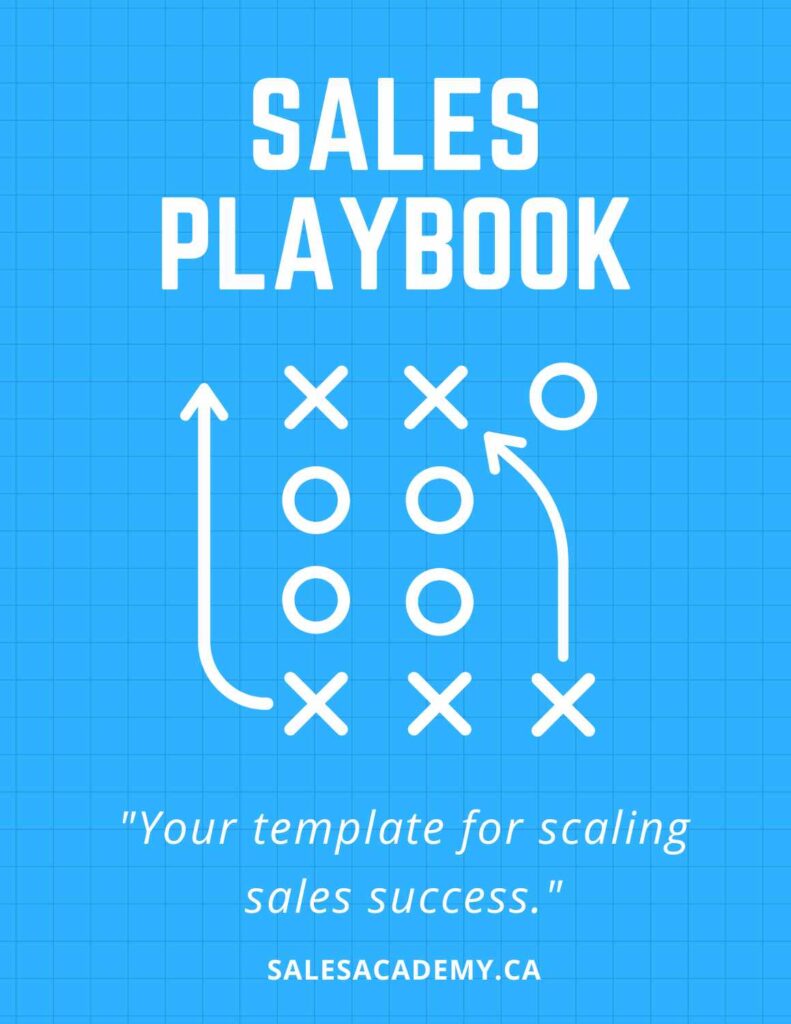
The post Sales Podcast: How to Build a Lean Sales Playbook appeared first on Shane Gibson's Podcast – Social Selling – B2B Sales and Influence.
How do I conduct powerful sales discovery calls? 11 May 2022 10:40 AM (2 years ago)
Keenan in his book GAP Selling says it well when he talks about where most salespeople fail. Many focus on closing better but the big issue is that they’re failing to “open” effectively. Opening is about conducting a really effective discovery call. Effective discovery calls are one part needs analysis and one part leading a new thought process.
Move from explaining value to being a person that partners with others to create value for them.
When I talk about leading a new thought process it’s about asking your prospect or client questions that get them to expand their thinking and look at their situation in a different context. Hearing their story and getting them to expand their story is vital – if we are going to move from explaining value to being a person that partners with others to create value for them.
Understanding your customer’s story through discovery calls
Here’s a video excerpt from one of by B2B selling keynotes talking about the power of understanding the your customer’s story:
The key take-away here was well summarized by Jon Ferrara when he said “people buy better future versions of themselves or their company.” Tapping into their desired future state or helping them see what powerful future state they could have is vital. Great questions and focused conversations can do this.
On qualifying prospects…
Too many sales discovery calls focus on qualifying the customer. Qualifying is a bit of a joke in most cases. Qualifying assumes the client knows the root of their problems, is ready to deal with them, and sees the importance and the value of creating a better future. Most don’t come to the table with a fully aware, ready to buy mentality. In many cases you have to create such a compelling desire and business case that they are motivated to sell to solution and go find the budget internally. That’s your job as a sales professional and it’s a process, not a magical close or a script of 8 questions we ask.
If you’re looking for more detailed direction on the order, cadence and type of questions you can ask in a discovery call or needs analysis I cover it in detail in my podcast episode “Sales Questions that Close Deals.”
The post How do I conduct powerful sales discovery calls? appeared first on Shane Gibson's Podcast – Social Selling – B2B Sales and Influence.
Digital Sales Podcast – Growing Your Business in a Digital-First Economy 10 May 2022 3:10 PM (2 years ago)
This podcast is based upon my recent digital-reinvention keynote for the World Trade Center Vancouver’s export awards. I had a number of attendees want my notes and slides and I thought a better way to share them is through my social selling and influence podcast!
In this podcast we discuss:
- 2022 remote and hybrid selling trends
- Remote work and recruitment trends
- Technology shifts that will impact your business in 2023 and beyond
- How leaders can become digital reinvention leaders and profit from these shifts
Following is my slide deck (Click on the image to download)

The post Digital Sales Podcast – Growing Your Business in a Digital-First Economy appeared first on Shane Gibson's Podcast – Social Selling – B2B Sales and Influence.
Social Selling Podcast: A Day In the Life of a Successful Social Seller 18 Mar 2021 6:09 PM (4 years ago)
Today’s Podcast is about daily social selling disciplines. Social selling success isn’t about going viral or adding thousands of LinkedIn connections. Social selling success boils down to key daily disciplines or KPI’s (Key Performance Indicators).
One of the first pieces of advice I can give on using social media and social networks to attract, sell and grow new accounts is…. DON’T QUIT.
Having a plan and process that we follow daily is going to help keep us on track, long-after social selling is no longer new and exciting. It takes work and consistency to win, this is a long game that pays big dividends if we do it right.
In this podcast I listed 12 Daily Disciplines for Social Sellers, this of course is just an example and you’re going to need to refine it and make it yours. Here are they are (deeper explanation in the podcast):
12 Social Selling Daily Disciplines
- Check for signals
- Visit “top client / top prospect” profiles for opportunities.
- Look for trigger/life events
- Thank / follow-back / connect
- Add offline connections and cross-platform connections
- Curate or create 1-2 pieces of great content daily.
- Ask for introductions
- Do something community focused – give back
- Engage with key influencers
- Send content to key accounts for lead nurturing
- Pro-actively reach out to new prospects with context
- Get Sociable! Daily
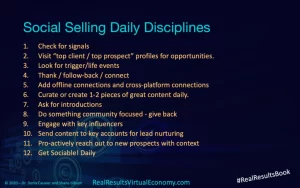
As I mention in the sales podcast, none of these activities are complicated. The magic is in combining them and doing it daily, making it part of what you do and who you are as a salesperson!
The post Social Selling Podcast: A Day In the Life of a Successful Social Seller appeared first on Shane Gibson's Podcast – Social Selling – B2B Sales and Influence.
Social Selling Podcast – Selling on Digital Platforms to Invisible B2B Customers 1 Mar 2021 6:49 PM (4 years ago)
B2B selling leveraging social media and digital platforms has now become a primary method of driving sales and engaging customers. Today’s podcast focuses on key trends for B2B buyers (hint: they like buying remote and digitally) and how to leverage platforms and influence channels to find them.
The challenge for many of us is traditional face-to-face methods of lead generation, networking and buyer engagement are largely gone.
In October 2020 McKinsey released a report called “Global B2B decision-maker response to COVID-19 crisis,” where B2B buyers stated the following:
“Don’t count on returning to a pre-COVID-19 level of in-person sales coverage, as only 20–30% of B2B buyers want to ever interact with reps in person even in their ideal/post-COVID-19 model…
90% of B2B decision makers expect the remote and digital model to stick around for the long run.
Videoconference connections are critical and are preferred over audio/phone by almost 80% of B2B buyers”
Stats like this make it clear that in order to drive commerce and business success we need to successfully engage these remote digital-first buyers where they are… which is on digital platforms and networks.
The challenge is also that traditional social media metrics such as clicks, likes and comments are not necessarily signs that what we are doing is working. Lack of “engagement” with our content is also not a sign that we are failing. Many senior executives and ideal prospects lurk, they consume our content and evaluate us silently – they’re an invisible B2B customer. In the podcast I dig deeper into this subject and also provide a few tactical steps to help you put together a B2B social selling strategy that works. Enjoy!
P.S. Don’t forget to subscribe to my sales podcast on Apple Podcasts and Spotify!
The post Social Selling Podcast – Selling on Digital Platforms to Invisible B2B Customers appeared first on Shane Gibson's Podcast – Social Selling – B2B Sales and Influence.
Sales Podcast – Avoiding Burn-out and staying productive while working remote and digital 8 Feb 2021 10:15 PM (4 years ago)
As leaders, sales professionals and solo-preneurs this new market reality of digital-first and remote work has added a lot of stress and imbalance for many of us.
I personally have my good days and bad days. Leaders who used to lead teams in the cubicles and offices around them have had to deal with a new challenge of motivating, and keeping their teams on-track remotely. For us salespeople we started off by over-functioning, churning out the results but doing it by spending too much time in front of the screen and allowing very little time for ourselves.
January 1st 2021 was a reality check for many of us. The remote only, largely isolated, digital-first work environment is likely here to stay for the next 12 months. The data also shows that many of our client interactions will stay remote and many of our staff will want to keep it that way as well.
We need to adjust, but we also need to optimize and approach our time, energy and mental health. As leaders we need to take the lead and do this for ourselves and our teams. Today’s podcast is about that.
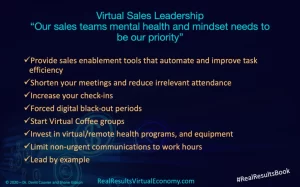
The post Sales Podcast – Avoiding Burn-out and staying productive while working remote and digital appeared first on Shane Gibson's Podcast – Social Selling – B2B Sales and Influence.
Social Selling Podcast – The 9 Elements of Power Networks and Networking 5 Feb 2021 2:47 PM (4 years ago)
Today’s podcast is about how to build a powerful network. Adding numbers or just posting content is not enough. We need to think beyond the transaction or loosely connecting. I geek a bit on how you can measure and improve on the value of your personal and business networks.
I identify 9 Elements or Key Performance Indicators of a powerful network and networking in this podcast. There are 8 listed below… #9 is “Consistency” in our network and value building activities.
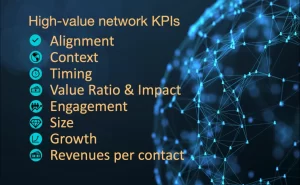
The post Social Selling Podcast – The 9 Elements of Power Networks and Networking appeared first on Shane Gibson's Podcast – Social Selling – B2B Sales and Influence.
Sales Podcast – 2021 Sales Trends Podcast 26 Jan 2021 12:51 PM (4 years ago)
Where do you go from here? In this podcast we talk about what 2021 has in store for sales organizations and sales professionals. I also discuss key stats from organizations like Gartner and dig into market shifts we need to be aware of. We are now in a digital-first virtual selling environment. With that said it is just the beginning of a permanent and accelerated redirection in sales and commerce.
Dr. Denis Cauvier and I sat down together (virtually over Zoom) in August 2020 – November 2020 and wrote our new book “Real Results in a Virtual Economy – How to Future-Proof Your Business.” For my contribution to the book I focused on how sales leaders and sales professionals need to shift their thinking and their skill-sets to digital-first selling. Many people are holding their breath, waiting for things to go back to the way they were in 2019 – but the reality they’re not going back. This new redirection and reality provides many opportunities if we are willing embrace them.
Here are the stats from Gartner on the outlook of CSO’s in 2021:
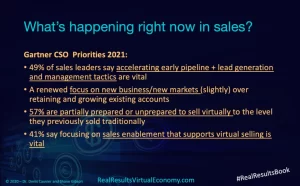
Here are some of the key trends and shifts to focus on for digital-first selling in 2021:
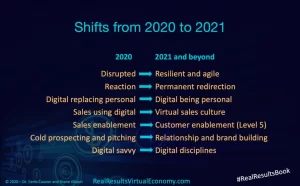
Check out our new book:
The post Sales Podcast – 2021 Sales Trends Podcast appeared first on Shane Gibson's Podcast – Social Selling – B2B Sales and Influence.
How to Succeed and Drive Revenues in Turbulent Economic Times (Updated for 2022) 6 May 2020 4:37 PM (5 years ago)
Updated May 11th 2022:
In two short years we have seen much of what was discussed in this post happen. We did in fact rebound rapidly with massive rallies in the stock markets, ecommerce grew by over 30 million new online shoppers in 2021 and many industries from tourism and hospitality to cloud computing solutions had massive gains.
Once again we are into another downturn. The invasion of Ukraine, skyrocketing oil prices and massive inflation driven by supply chain inefficiencies and large scale money printing by central banks. This too shall pass, the question is how do we calibrate and prepare for the future?
Original post from May. 6th 2020:
I originally produced this blog post in 2008 at the bottom of the economy. My late father Bill Gibson shared this economic cycle model with audiences across Canada during the crash in the early 80’s. I have done some minor edits to update for the past decade. This is not a “silver lining” post, it’s intended to be a historical look at economic downturns, crisis and how resilient you and I can be.
I too am very worried about the health and well being of my family, friends, clients and community. It’s easy to just freeze. I am doing my best not to read hourly updates in the news or go down any Facebook debate “rabbit holes.”
We have arguably shot to the bottom of an economic cycle at an unprecedented velocity, but we have actually been here before. I don’t think we have reached “the bottom” yet from an economic standpoint, it is likely months before things will level out. Things will also never be the same.
While people are still in shock and crisis it is probably not the time to make cold calls or launch your next product, BUT we need to be prepared to pivot, sprint and put the hard work in as soon as we see the proverbial light at the end of the tunnel.
I thought I would share this post from my archives in hopes that my readers can see that once we get through this tough period things will get better (if we are ready to navigate a new sales landscape).
I also delivered a Webinar on the topic for the Canadian Professional Sales Association called “Selling and Succeeding in Turbulent Economic Times” in 2020. (Full 45 minute webinar + Q&A)
Here’s the October 17th 2008 post updated:
Many sales professionals and entrepreneurs are concerned about how they are going to weather today’s global financial storm. We are clearly in turbulent economic times, but not universally tough times. The rules of the game have changed with the advent of a multitude of shifts including the introduction of disruptive technologies to almost every industry, along with true globalization and the meltdown in the banking sector.
As sales professionals we have to realize that it is not the events in our lives, but our interpretation and response to those events that will impact our level of success. John Maxwell goes further than this to state: “A leader is defined by the size of the crisis.” The core message here is that almost anyone can captain a ship in fair weather, but during a storm or turbulent conditions it becomes obvious which people truly should be wearing the rank of Captain.
As the storm hits the shores of our industries and communities many people will begin to jump ship, looking for safe harbors or metaphorically tying themselves down and just waiting for the storm to pass.
It is impossible to write on this subject without reflecting on the millions of people whose lives have been affected by what is going on in these turbulent economic times. It is equally clear that this is also a time of immense opportunity to define ourselves in this crisis as leaders in our industries and respective professions. You can succeed in this present state. In fact, in many industries this is a time of unparalleled opportunity.
Many businesses have already successfully pivoted on online platforms and ecommerce channels to survive and thrive.
What I do know is that in North America alone there have been major recessions or turbulent times approximately every 7 years since 1900. In each of these instances there were people who panicked, froze, or opted out of society in general and some never recovered. On the other side there were people who prospered; in fact there was more new wealth created coming out of the great depression than any other time in history. If you’re in the profession of selling, turbulent times can be a gift. This represented a major shift in the world power base from an economic standpoint as well.
Just to illustrate this point here’s a run down of the level of turbulence in the economy over the past 90 years, look at these trends and you decide when the best time to be selling or marketing. I personally think it’s not about the environment but our reaction to it that determines our destiny.
There’s always a reason not to sell, market or lead. It’s up to us to find the opportunity and put the work in. Sometimes it feels futile but even while our business is not developing, we are.
An overview of turbulent times in the past 80 years.
1930’s
- 1929 Wall Street Crash
- 1934 Depression
- 1935 Spanish civil war
- 1937 Recession
- 1938 War clouds gather
- 1939 War in Europe
1940’s
- 1940 France falls
- 1941 Pearl Harbour
- 1942 Wartime price controls
- 1944 Consumer goods shortages
- 1945 Post-war recession predicted
- 1946 Dow tops 200 – “too high“
- 1947 Cold war begins
- 1948 Berlin blockade
- 1949 Russia explodes A-bomb
1950’s
- 1950 Korean War
- 1951 Excess profits tax
- 1952 U.S. seizes steel mills
- 1953 Russian H-bomb
- 1954 Dow tops 300 – “too high”
- 1955 Eisenhower ill
- 1956 Suez crisis
- 1957 Russia launches Sputnik
- 1958 Recession
- 1959 Castro seizes power
1960’s
- 1960 Russia downs U-2 plane
- 1961 Berlin Wall erected
- 1962 Cuban missile crisis
- 1963 Kennedy assassinated
- 1965 Civil rights marches
- 1966 Vietnam War escalates
- 1967 Newark race riots
- 1968 USS Pueblo seized
- 1969 Markets fall
1970’s
- 1970 Cambodia invaded
- 1972 Record US trade deficit
- 1973 Energy crisis
- 1974 Nixon resigns
- 1977 Market slumps
- 1978 Interest rates rise
- 1979 Oil prices skyrocket
1980’s
- 1980 Interest rates at all-time high
- 1981 Steep recession begins
- 1982 Worst recession in 40 years
- 1983 US Marine barracks bombed
- 1984 Record federal deficits
- 1985 Economic growth slows
- 1986 Dow nears 2000 –”too high”
- 1987 Record market fall
- 1988 Junk bond scandal
- 1989 October “Mini-Crash”
1990’s
- 1990 Persian Gulf crisis
- 1992 Riots sweep Los Angeles
- 1993 Bombing of World Trade Centre
- 1994 Rising U.S. interest rates
- 1995 Oklahoma City bombing
- 1997 Collapse of Thailand economy
- 1998 US impeachment proceedings
- 1999 Y2K
2000’s
- 2000 Internet stocks plummet
- 2001 September 11
- 2002 Corporate earnings scandal
- 2003 Iraq war
- 2004 Oil price rockets
- 2005 Oil price rockets further
- 2006 Emerging market sell-off
- 2007 Sub-prime crisis
- 2008 – 2009 Declaration of “The Great Recession”
- 2020 – Covid-19 Pandemic – Global Recession Declared
- 2022 – Russia invades Ukraine, Oil Prices Skyrocket, Inflation hits a 20-year high
We have so many dichotomies in the marketplace because this is not just about an economic downturn. This global event will likely permanently impact how we work, travel and plan strategically. We are no longer economic islands, our collective health is vital (literally and economically) and those that realize that and embrace the new landscape can win, just like the legions of millionaires created during the great depression.
There are a few things we can count on at the bottom of an economic cycle:
- You will have fewer competitors during turbulent times than you did during easier times. Many will go out of business, or pull back any proactive efforts that cost money.
- It is easier to find talented staff and it’s easier to retain them
- Those competitors that are left will be less motivated. Most will make fewer calls, prospect for new business less, spend more time watching negative news, and lack the confidence they had when getting orders was easy.
- Your competitors will spend less on advertising and training. There will be less noise in the marketplace and they will also stall in the areas of personal and professional development.
- Your competitors will pull back and isolate themselves, becoming self-focused, further spiralling their motivation level and reducing their networking, selling, and community connections.
- Many people will resist trying new things and getting creative, sticking with what has always worked. The problem is, of course, that what got them here, is not what is going to get them to where they want to go. A new economy needs a new playbook. This real-world challenge requires rapid virtual and digital adoption.
Stay pragmatic about what’s going on, be conservative until this hits the bottom and then… put on your running shoes and focus on what you can do.
And right now… thank a health care worker you know for their incredible service during these challenging times.
The post How to Succeed and Drive Revenues in Turbulent Economic Times (Updated for 2022) appeared first on Shane Gibson's Podcast – Social Selling – B2B Sales and Influence.
What’s the definition of Social Selling? 28 Jan 2020 12:27 PM (5 years ago)
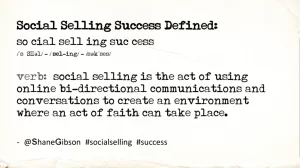
Definition of Social Selling
What is Social Selling and do I really have to do this social selling thing?!?
I often have one or two people approach me after a seminar and they ask me “Do I really have to do this social media thing? Is social selling really necessary for an experienced [insert profession: realtor, financial advisor, banker, car dealer, engineer etc.]?” I started getting this question in 2009 when Stephen Jagger and I just launched our first book on social media for sales professionals and entrepreneurs (called Sociable!). 7 years later and 1.5 billion more people on social media and I still get the question.
My answer is still the same:
If you have all the business you can handle for the next 24 months and plan on retiring after that, and you have succeeded so far without the internet – then just retire and don’t worry about it. – On the other hand if you intend on being in business for the next 3,5,10 years or more, social media and social selling are not optional tools and strategies, they will become increasingly vital to your success. Before I go any further into why you need to make social media and social selling a top priority lets really look at what “social selling” is.
What is social selling?
It’s important to look at social selling as a layer of technology embedded into every aspect of what you do. It doesn’t live in one particular stage of your sales funnel, it’s connected to everything and everyone. Great social sales people learn how to use social media and social networks to be present and relevant in every step of their buyer’s journey.
In our book Closing Bigger the Field Guide to Closing Bigger Deals, Captain Trevor Greene and I defined selling as follows:
“Sales is about creating an environment where an act of faith can take place.”
When you define “social” it’s human, emotionally charged and conversational. For social to be effective it has to be a bi-directional communication. They call it “social media” for a reason, it’s about two-way conversations that drive engagement, emotions and deepen relationships.
Putting these two definitions together:
Social Selling: “Social selling is about using online bi-directional communications and conversations to create an environment where an act of faith can take place.”
What Social Selling is Not:
Many marketers see social media as an automated megaphone or billboard where they get to shout at the world for free 24 hours per day and unfortunately many sales people have also fallen into this ineffective spam ridden trap. Yelling louder than your competitors, interrupting your customers and carpet bombing their inboxes with generic pitches are not strategies that create trust and credibility. As my good friend and one of the best sales people I have ever worked with Minto Roy had this to say about these types of approaches in selling “The problem with all of this is most sales organizations are trying to do the wrong thing better than everyone else.”
Social selling is not about automating every customer interaction; in fact the best social sales people understand this key principle that Seth Godin shared at last year’s Guerrilla Marketing Conference in Florida:
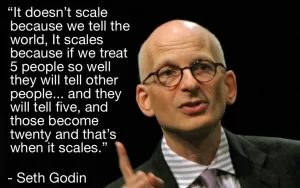
Great Social Sales People
Great social sales people know that the true power of social selling comes from the things that don’t entirely scale, meaningful, customized and personalized one-to-one conversations and interactions. Yes content plays a vital role, but it’s role is to eventually drive that prospect toward a value-added and relevant one-to-one experience. This might not always be true for ecommerce sites but it’s definitely true for sales people, and great sales people understand the power and importance of one-to-one connections and interactions.
Your social selling strategy and daily tactical use should be focused on creating that environment where an act of faith can take place. With over 2 billion people on social media globally, your ability to focus on and understand who your core niche market(s)are will be vital to your success.
Why Social Selling is Vital
Let’s take a look at a specific industry like financial services. A highly regulated industry for sales professionals who want to share insights online. Even with the level of regulation financial advisors are experiencing real ROI from social selling efforts.
Today’s investor is increasingly turning to blogs, online thought leaders, and social networking platforms for investment advice, insights and answers. Financial Advisors that are social savvy are investing in social sales programs and are realizing both profits and competitive advantages.
Putnam Investments did a yearlong study of 817 financial advisors and their social media use in 2015. The average age of these advisors was 44 and their average book of business was $80 million USD assets under management. In order to be included in the study you had to be in the business for a minimum of two years.
In the study they found that “40% of advisors (versus 25% the previous year) are now using four or more networks for business and 69% pointing to social media having a significant role in their marketing efforts — up steeply from the prior year (56%)”
Furthermore 79% (up from 66% the previous year) had gained new clients from social media. The average total asset gain from those 79% was $4.6 million USD. 53% of all advisors gained at least $1 million USD in new business from social selling.
Social media and social selling like any great sales strategy is best applied as a daily discipline and the study confirmed this. 71% of financial advisors who gained assets using social selling and social media were active on a daily basis.
*Social Selling Tip: It’s important to note that often when we enter a new channel or social network we tap into new market segments. Even if you are finding LinkedIn to be profitable it’s still advisable to learn how to leverage tools like Facebook and Twitter. They will likely help you access new markets and increase exposure to existing ones.
Why are the statistics I have shared with you so important? They prove that social media and social selling are not a fad or fringe tool for selling and growing your book of business. The numbers show that adoption of social media use and the rate of success is growing in double digits for socially active sales professionals. That’s a pretty good investment!
Where do we start?
In sales the “warm lead” is a coveted commodity. Warm leads, the people who know us, trust us and understand what we do as a professional are more likely to become great clients and referral sources. They’re also more likely to be focused on value instead of price when making a decision.
To be great social sales people we have to be great personal marketers and storytellers. Social media and social networks actually allow us to create warm leads in a very leveraged fashion. This leverage however requires that you move from pitching and focusing on clicks to creating great content and focusing on building relationships and community online (the click-throughs and selling come later).
Essentially salespeople that have mastered the art of online attraction have elevated themselves to the status of “Thought Leader” in the eyes of their specific target market/niche.
Your goal is to be a Thought Leader in your industry and area or expertise. This will not only warm up leads for you, it will pull them in. I also like to call “Thought Leaders” Magnetic Marketers because their trusted advisor status brings business and referrals to them.
Sales has changed. Today the customer owns your brand, their tweets, blog posts, online reviews and Facebook shares collectively impact your brand and your industry. This online conversation can be seen as a risk BUT it’s a huge opportunity if you’re willing to wade in and interact – or even better, start conversations and lead them.
If you’re looking to gain more insights, strategies on social selling and check-out my Social Selling Course.
The post What’s the definition of Social Selling? appeared first on Shane Gibson's Podcast – Social Selling – B2B Sales and Influence.
Sales Podcast – The Right Brained Sales Revolution 7 Jan 2020 1:30 PM (5 years ago)
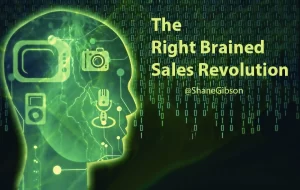
Today’s podcast is about “The Right Brained Sales Revolution.” In an era of increased automation and advancements in AI (Artificial Intelligence)/Machine learning, sales as a career is rapidly changing. I believe that most sales jobs today will be completely automated or at least partially automated and assisted by AI within the next 36-48 months. In order to survive and prosper sales professionals will need to make themselves indispensable with right brain (creative, innovative, non-linear) sales skills, competencies and behaviours.
In today’s podcast I talk about the 8 rules that will help you understand the Right Brained Sales Revolution:
- If you commodify your clients they will commodify you
- Don’t aim to fit the sales culture, aim to be indispensable
- If it’s predictable, duplicable and repetitive it will be automated
- People skills eat sales hacking skills for breakfast
- Stop doing the wrong things better
- Relationships scale sales followers don’t
- Left brain qualifies the buyer, right brain qualifies the seller
- No leapfrogging, once you have invested 10,000 hours in right brain selling there is no hack to catch up
In addition to this I discuss 27 Right Brain Sales Skills:
- Rapport Building
- Listening
- Social Intelligence (Sales EQ)
- Presentation Skills
- Objection Handling Skills
- Negotiations
- Hobnobbing
- Online social interaction and engagement
- Innovating
- Problem Solving
- Detecting Lies
- Reading and Adjusting for Style
- Contextualizing Offers and Solutions
- Breaking the Rules
- Humour
- Giving
- Managing Complex Business Relationships (Selling to multiple stakeholders)
- Phone Skills
- Dealing with Upset Customers
- Motivating Team Members
- Going Off Script
- Needs Analysis Selling / Discovery Selling
- Authentic Relationship Development (NOT ABM or lead nurturing)
- Content creation
- Networking in Real Life
- Curious Prospecting (Motivated lateral thinking)
- Personal Branding and Reputation Building
In the podcast I wrap it up talking about “Why you want right brained sellers on your team:”
- They are proactive, not reactive button pushers
- They are action not entitlement focused
- They are adaptable
- They improve products and processes
- The lead customers versus take orders
- They close more business
- They grow accounts through focused relationship and credibility building
- They use technology but are driven by principles
- They come with a network and credibility (from their past successes)
I hope you enjoy this podcast and find it thought provoking and useful. I’d love to hear your thoughts in the comments below or feel free to reach out to me directly at shane@closingbigger.net.
Photo credit Jejimenejlc
The post Sales Podcast – The Right Brained Sales Revolution appeared first on Shane Gibson's Podcast – Social Selling – B2B Sales and Influence.
Key Sales Strategy – GIVING 18 Jul 2019 9:41 AM (5 years ago)
Giving is a core business principle of success. In order to get, you must first genuinely give value.
Very simply, give more than your competitors think is necessary and connect deeper and more often than your competitors are comfortable with.
If your competitors share a sound byte daily then share a full blog post or report. If they require an email address, phone number and an opt-in to get business information then ideally you should make your information or insights available with one click.
If your competitors generically send thank-you’s to new connections then you should take the time to read about the person and customize a response. “Thanks for connecting, how are things in Austin Texas?” is a lot more powerful than “Thanks for adding me on LinkedIn” Push your own comfort zone on giving and caring more.
Here’s a quick Instagram Sales Video minute on Giving:
View this post on Instagram
The post Key Sales Strategy – GIVING appeared first on Shane Gibson's Podcast – Social Selling – B2B Sales and Influence.
Enterprise Sales Success Keynote by Shane Gibson 15 Nov 2018 9:09 PM (6 years ago)
Here’s a quick preview of the type of content audiences can expect when they attend one of Shane Gibson’s Enterprise Sales Success keynotes. Check out his next event “The Sales Performance Summit” presented in partnership with The Greater Vancouver Board of Trade and sponsored by The Canadian Professional Sales Association.
Shane Gibson delivers his Enterprise Sales Success keynote seminar to the Greater Vancouver Board of Trade on November 21st. Shane is a Canadian Professional Sales Association Accredited Sales Trainer and has delivered sales seminars over the past 25 years in Chile, Canada, Colombia, Brazil, South Africa, USA, India, Dubai, Zimbabwe, and Malaysia.
The post Enterprise Sales Success Keynote by Shane Gibson appeared first on Shane Gibson's Podcast – Social Selling – B2B Sales and Influence.
Sales Podcast – Sales Questions that Close Deals 12 Jun 2017 9:30 PM (7 years ago)
The Art of Asking Questions that Close Sales
Today’s podcast is about how to use questions to close the deal. It’s not about gimmicky questions or easy closing techniques, it’s actually about using needs analysis selling to build rapport, deepen understanding from both parties and establishing genuine trust. While many “disruptive” sales techniques today want to show you how to hack your way to sales success the art of asking questions is still a very high paid sales skill that will still be in style decades from now. In this podcast you will learn:
- How to elevate yourself from order taker or pitch artist to trusted advisor
- Three powerful questions every needs analysis needs to include
- The one thing that will increase sales conversions that most people fail to do after a customer conversation
- Tips on how to build a client needs assessment that flows like a natural conversation
About Your Podcast Host Shane Gibson
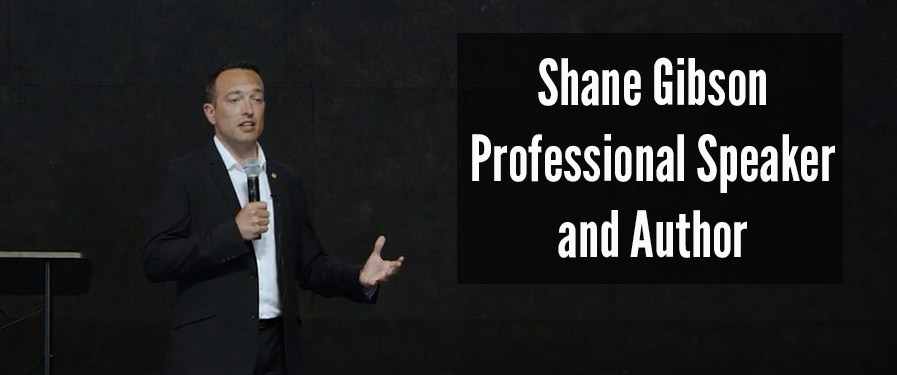
Shane Gibson is an international speaker, and author on social media marketing, social selling and sales performance who has addressed over 100,000 people on stages in North America, Southern Africa, India, Malaysia and South America. He is in high demand as a keynote speaker on the topics of social media and sales performance. Shane Gibson is #5 on the Forbes.com list of the Top 30 Social Sales People in the World.
Shane Gibson’s profile on LinkedIn
Shane Gibson is the author of Closing Bigger: The Field Guide to Closing Bigger Deals, Sociable! a book about how social media is turning sales and marketing upside down and Guerrilla Social Media Marketing. He is also a certified Master Trainer and contributing author in the Complete Sales Action System , and it’s supplementary program Managing Complex Business Relationships.
, and it’s supplementary program Managing Complex Business Relationships.
Scrabble Photo Image Credit speedpropertybuyers.co.uk/
The post Sales Podcast – Sales Questions that Close Deals appeared first on Shane Gibson's Podcast – Social Selling – B2B Sales and Influence.
Social Selling Keynote “The Exponential Influencer” by Shane Gibson 19 Dec 2016 2:59 PM (8 years ago)
This social selling keynote seminar is from a talk I did at the Social Media Mastery conference I did a few months ago. The premise of the talk is focused on helping people shift from being pitch artists and outbound sales people and marketers to becoming Thought Leaders who attract the business they want. This is a more condensed version of my one-hour keynote and full-day social selling bootcamps.
Social Selling Keynote Video “The Exponential Influencer”
“The Exponential Influencer” Seminar Slides:
The post Social Selling Keynote “The Exponential Influencer” by Shane Gibson appeared first on Shane Gibson's Podcast – Social Selling – B2B Sales and Influence.
Sales Podcast Interview: Anthony Iannarino on “The Only Sales Guide You Will Ever Need” 10 Nov 2016 11:21 AM (8 years ago)

I had the opportunity to interview Anthony Iannarino on his new book “The Only Sales Guide You Will Ever Need,” we can even cover how he went from Metal Band rock band artist so top producing sales leader and author. Anthony is also the founder of “The Sales Blog,” one of the world’s top ranked sales blogs in the world.
Some of the topics we cover in the interview include:
- Sales management
- Sales coaching
- Sales automation
- Social selling
- Sales process
- Sales leadership and more…
You can learn more about Anthony Iannarino here and more about “The Only Sales Guide You Will Ever Need here.”
The post Sales Podcast Interview: Anthony Iannarino on “The Only Sales Guide You Will Ever Need” appeared first on Shane Gibson's Podcast – Social Selling – B2B Sales and Influence.
Podcast Interview: Millionaire Marketing on a Shoestring Budget with Debra Jason 28 Oct 2016 5:26 PM (8 years ago)

Today’s podcast guest is Debra Jason author of Millionaire Marketing on a Shoestring Budget. I met Debra at the Guerrilla Marketing Global Summit last year and have been following her updates and insights ever since. In this interview we talk about low budget yet highly effective approaches to marketing you and your business. Some of the key areas we focus on in the interview with Debra are:
- Social media marketing
- Press Releases
- Public Speaking and Seminar Selling
- Copy Writing
- + Many more insights on Millionaire Marketing on a Shoestring Budget
The post Podcast Interview: Millionaire Marketing on a Shoestring Budget with Debra Jason appeared first on Shane Gibson's Podcast – Social Selling – B2B Sales and Influence.
Shane Gibson with Louise Uwacu on U&I Talk Show on Shaw TV 22 Jul 2016 5:07 PM (8 years ago)
I was interviewed by Louise Uwacu for her U&I Talk Show, we talked about the Professional Sales Certificate Program, becoming a professional speaker, social selling and more. So if wonder what the path could look like to become a sales trainer, speaker and author this is a good start. Enjoy!
The post Shane Gibson with Louise Uwacu on U&I Talk Show on Shaw TV appeared first on Shane Gibson's Podcast – Social Selling – B2B Sales and Influence.
Successful Selling Strategies (Online Course) Starts May 2nd 26 Apr 2016 10:25 AM (9 years ago)

Hello Sales Pros! My next online sales training course (Part 1 of The Professional Sales Certificate Program) starts on May 2nd.
If you or one of your team members is looking to take their sales career or business to the next level this one month long “learn at your own pace” program may be ideal. These are the same sales processes and principles that Bill Gibson and myself have implemented into major sales organizations on four continents over the past 2o+ years.
In this course you will develop a framework for organizing, managing, and implementing your sales process and strategy. We will cover a proven systematic approach to prospecting, targeting clients, managing your sales pipeline, gathering data, team selling, and processes for keeping your most valuable and lucrative customers. Compared to most sales training, this system enables you to gain more clients while leveraging your time, energy, and money. In this online course you will:
- Define your core market and customer personas for better account based marketing and selling
- Learn how to find mountains of qualified profitable prospects
- Discover how to systemize and develop your sales process
- Learn the The “Frequency Selling System” that converts competitors clients into your loyal customers
- Develop your own personal customized sales strategy upon completion
- Be shown top tactics and strategies to land large and complex deals!
The post Successful Selling Strategies (Online Course) Starts May 2nd appeared first on Shane Gibson's Podcast – Social Selling – B2B Sales and Influence.
The 9 Immutable Rules of Social Selling (Video Series) for 2016 #socialselling 21 Dec 2015 10:34 PM (9 years ago)
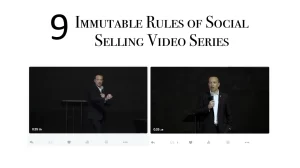
Following are nine “30-second” videos I recently published on Twitter they’re quick, to the point principles that if combined properly, can produce amazing results in your social selling. Enjoy!
Rule #1 in Social Selling: Stop Pitching
Immutable Social Selling Rule #1: Stop Pitching and Start Connecting (via https://t.co/Rp88tc1BCI) #socialselling pic.twitter.com/pORWVEfmL7
— Shane Gibson (@shanegibson) December 22, 2015
Rule #2 in Social Selling: Doers Win in Social Sales
Immutable Social Selling Rule #2: Doers Win in Social Sales (via https://t.co/Rp88tc1BCI ) #socialselling #sales pic.twitter.com/8jlmdRGwfI
— Shane Gibson (@shanegibson) December 22, 2015
Rule #3 in Social Selling: It’s Not About You
Immutable Social Selling Rule #3: It’s Not About You! (via https://t.co/Rp88tc1BCI) #socialselling #sales #video pic.twitter.com/sswgt5GgrD
— Shane Gibson (@shanegibson) December 22, 2015
Rule #4 in Social Selling: Be Fearless
Immutable Social Selling Rule #4: Be Fearless! #socialselling #sales #video (via https://t.co/Rp88tc1BCI) pic.twitter.com/RxzRT0CbEB
— Shane Gibson (@shanegibson) December 22, 2015
Rule #5 in Social Selling: Don’t Be a Social Spammer
Immutable Social Selling Rule #5: Don’t be a Social Spammer (via https://t.co/Rp88tc1BCI ) #socialselling #sales pic.twitter.com/U2punZ0L5d
— Shane Gibson (@shanegibson) December 22, 2015
Rule #6 in Social Selling: Be Authentic
Immutable Social Selling Rule #6: Be Authentic (via https://t.co/Rp88tc1BCI ) #socialselling #sales #branding pic.twitter.com/DVLzH3qk07
— Shane Gibson (@shanegibson) December 22, 2015
Rule #7 in Social Selling: Be Consistent
Immutable Social Selling Rule #7: Be Consistent (via https://t.co/Rp88tc1BCI ) #socialselling #sales #branding pic.twitter.com/fT4OIry80I
— Shane Gibson (@shanegibson) December 22, 2015
Rule #8 in Social Selling: Amplify Through Community
Immutable Social Selling Rule #8: Amplify Through Community (via https://t.co/Rp88tc1BCI) #socialselling #influencer pic.twitter.com/ElSGpUoWwM
— Shane Gibson (@shanegibson) December 22, 2015
Rule #9 Get Sociable!
Immutable Social Selling Rule #9: Get Sociable! (via https://t.co/Rp88tc1BCI) #socialselling #influencer #offline pic.twitter.com/fTXxRTJwj8
— Shane Gibson (@shanegibson) December 22, 2015
The post The 9 Immutable Rules of Social Selling (Video Series) for 2016 #socialselling appeared first on Shane Gibson's Podcast – Social Selling – B2B Sales and Influence.
Podcast Interview with Sanjay Mehta, Joint CEO of Mirum India – Social Media Agency 16 Dec 2015 10:14 PM (9 years ago)

Today’s podcast is an interview with Sanjay Mehta, Joint CEO of Mirum India. The digital space in India represents over 300 million connected citizens and 100 million active social media accounts. In 2012 when I was in India speaking at the World Brand Congress I met Sanjay Mehta who at the time was CEO and Co-founder of Social Wavelength. Since then they have grown to over 170 staff and were recently acquired by Mirum (becoming Mirum India).
As a social media trail blazer and digital marketing thought leader Sanjay Mehta offered a wealth of insights into social media and major trends that will impact us in 2016 and beyond. Some of the key topics covered in this podcast were:
- The digital marketing landscape in India
- Best practices and creative social media campaigns
- How digital transformation can revive traditional industries
- How social media monitoring can be used for deep insightful business intelligence
You can follow Sanjay Metha on Twitter at @sm63 or visit Mirum India here to learn more
The post Podcast Interview with Sanjay Mehta, Joint CEO of Mirum India – Social Media Agency appeared first on Shane Gibson's Podcast – Social Selling – B2B Sales and Influence.
Podcast Interview with Jim Keenan Author of “Not Taught” 14 Dec 2015 8:46 AM (9 years ago)

Do you ever wonder if you’re missing some of the insights around success in today’s very digital and social business climate? This week’s guest Jim Keenan claims if you’re over 30 there are many things you have likely not been taught about the new rules of success and prosperity.
Jim is one of my favourite social selling thought leaders and long time friends in the business – although we have yet to meet in person! I had an opportunity to read Jim’s new book “Not Taught – What It Takes to be Successful in the 21st Century that Nobody’s Teaching You” and asked him to be on the show. Here are five of my favourite quotes from the interview:
“Your social presence has to be 6 months to year ahead of where you are today.”
“You don’t have to take 6 months to find a new job or wait for a publisher to give you permission to publish your own book anymore (if you get good at creating content).”
“We have moved from experience to an expertise based economy.”
“Social media gives you the ability to demonstrate expertise.”
“Employers don’t want your time, they don’t care how hard you work, they care what you have done.”
To listen to the entire podcast you can click the play button on this post (above) or find it on iTunes here.
The post Podcast Interview with Jim Keenan Author of “Not Taught” appeared first on Shane Gibson's Podcast – Social Selling – B2B Sales and Influence.
Vote on the next #SalesTribe Twitter Chat Topic 2 Dec 2015 5:08 PM (9 years ago)
Our last #SalesTribe Twitter chat with 40+ sales experts and authors generated over 12 million online impressions on twitter with 100’s of participants from around the globe. We are gearing up for our next Twitter chat and wanted your feedback on which topic you want us to cover. The #SalesTribe Twitter Chat will be on December 10th 2015 at 11:00 am PST / 2:00 pm EST. You can tick more than one box, try to stick to a maximum of 5 topics!
Thank-you for your help.
The post Vote on the next #SalesTribe Twitter Chat Topic appeared first on Shane Gibson's Podcast – Social Selling – B2B Sales and Influence.
Sales Podcast: The 9 C’s of Social Sales Success 28 Nov 2015 11:19 AM (9 years ago)
Today’s blog post and podcast is about the 9 C’s of Social Sales Success. There are many attributes, attitudes and strategies required to effectively harness the power of online social networks for sales and relationship building. I have taken them and broken them down under 9 core areas that start with the letter C.
Following are the 9 C’s of Social Sales Success:
1) Curiosity
Those that are successful in social sales are always looking for new ways to succeed and improve. They see obstacles and problems as pathways to opportunity and are inquisitive and investigative in nature.
2) Curation
Great sales people and entrepreneurs understand that Mind Share = Wallet share. They become a resource through curation and sharing of relevant content for their target market.
Through the act of evaluating and sifting through content they also improve their industry insights daily.
3) Creation
Is the next step where we move from resource to social selling thought leader in our industry vertical. As a social sales person your goal it to develop magnetic content that is value specific to your audience. Creation or value can also be creating events or pulling people together offline or online.
4) Collaboration
Great social salespeople strive to move beyond cooperation to collaboration with their team members within all departments of their organization. They also use relevant online collaboration tools like slack, hangouts, Slideshare, and mobile CRM apps to leverage their efforts and the expertise of their network. Great social sales people foster partnerships that amplify their work and help them reach new markets.
5) Community
As a salesperson your community is your long-term financial security. What your community says about you sells. Your community can also be your partners in innovation and product creation. Tools like HeroX can help you innovatively partner with your community.
6) Combination
It’s not LinkedIn versus Twitter, cold calling versus email or online networking versus in-person. If you’re successful in sales you are most likely combining it all to maximizes your success.
7) Calendar Driven
Motivation and inspiration are temporary, calendars keep you consistent in your activity and results. Prioritize your social sales activities based upon ROI. Plan out your social/content media calendar a month in advance so that you have your social sales content and communications strategy broken down to daily disciplines.
8) Commitment
Gary Vaynerchuk’s big success came after video blogging 5 days a week until he hit video 148 and then he kept going! 81% of the time you convert a competitors client it happens after 5 to 12 value-added contacts, follow-up and then follow-up some more. And remember… It’s not over until 11:59:59 on the last day of the month.
9) CRM
Use Customer Relations Management tools like Nimble CRM or SalesForce. Your CRM organizes and aggregates all of your communications channels. CRM gives you feedback, it’s a dashboard that maps all of your sales data helping you make better decisions. If used successfully your CRM tells you exactly where you are on your road to success. It also enables you to collaborate with your team and manage an infinitely larger number if relationships than previously possible.
If you can apply all 9 C’s of Social Sales Success you will be well on your way to building a magnetic personal presence that naturally drives new business to you.
If you’re looking to improve your sales performance, you and/or your team member may want to check out my sales training programs at the Professional Sales Academy.
The post Sales Podcast: The 9 C’s of Social Sales Success appeared first on Shane Gibson's Podcast – Social Selling – B2B Sales and Influence.
How to Run Profitable B2B Influencer Engagement Programs #Podcast 16 Nov 2015 8:04 PM (9 years ago)
Today’s podcast (download here) is focused on why Influencer Engagement programs are vital and how to run one effectively in the B2B sales and marketing space.
Following is brief abridged version of what I cover in the podcast:
In a recent study (by Augure) of over 600 B2B marketing professionals 93% of them stated that they considered influencer engagement as an effective strategy to build brand awareness. 75% cited influencer engagement as an effective in lead generation. In my opinion Influencer Engagement (which is really building a community of leaders) is a highly overlooked or misunderstood discipline that can pay dividends for months or even years after you start using this strategy effectively.
Over the past few years I have had the opportunity work on influencer engagement programs (in partnership with great people like Mitch Ballentine) and events for major brands such as Paladin Security, Make-a-Wish Foundation, Toyota, various Comicons. I have also successfully used these processes for product launches and major events such as Social Media Week Vancouver, the Dragons Den Social Summit, the Sales Tribe social chat and all three of my books.
Although Influencer engagement is a hot topic many organizations are struggling to see real results from it.
Where most strategies fall short is they fail to identify the right influencers, and even when they do identify them they fail to develop a real relationship. Furthermore, even for those that develop a real relationship with the influencer; very few create a situation where the influencer is compelled to authentically talk about their brand, their organization or their products and services. The goal is not to get them to tweet about your brand, the goal is to turn these influencers into brand advocates and partners for your organization.
Following is a visual representation of what motivates today’s influencers:
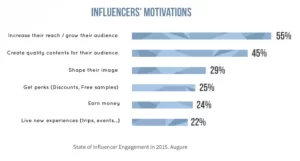
A Simple but effective event / project based B2B Influencer Engagement program may look and sound like this:
(Program will include some or all of these events and projects)
- Build a Top 50 List of Influencers to be published and promoted through social media, online news sites and directly by influencers.
- Collaboratively work with 10-20 of the influencers on several online Twitter chats. Check out this report to see the online impact of just one #SalesTribe twitter chat had this past June 2015.
- Launch and host a webinar series with influencers as participants.
- Develop, produce and promote a white paper or how-to guide sourcing content from 10-20 influencers.
- Develop a series of interviews with high profile clients (who are influencers) that are using your solutions and/or who your target market can relate to.
These 5 engagement strategies are simple and cost effective to implement. To enlist the help of these on-line thought leaders, start by promoting them, helping them and collaborating with them. You’ll notice nowhere have I mentioned getting them to do a product review or demo yet. This is all about building a board community of thought leaders and influencers first. After that it’s easy to move them into engaging directly to work more proactively with your brand.
Those key areas of influencer motivation mentioned earlier are a great reminder for when you’re approaching and interacting. If you can connect your program with the top influencer motivations you have a good chance of getting a significant number of them on-board.
If you liked this social sales podcast you may want to check more episodes by clicking through to iTunes.
The post How to Run Profitable B2B Influencer Engagement Programs #Podcast appeared first on Shane Gibson's Podcast – Social Selling – B2B Sales and Influence.
Social Selling Podcast: Using Thought Leadership to Fill Your Social Sales Funnel 12 Nov 2015 10:18 PM (9 years ago)
Today’s social selling podcast is focused on the new sales funnel. Sales for many of us is now more about getting buy-in versus pitching our wares. This 15 minute sales and social selling podcast introduces the new sales funnel “The 5 Stages of Consent” and also dives into how content creation is not enough to get noticed – you need to have a thought leadership strategy to truly fill the new sales funnel.
The success strategies covered in this sales podcast include:
- How to move your prospects from “hello” to permission to sell
- How to establish yourself as a thought leader
- The role content curation and creation play in sales success
- Why content is king and connection is queen
Click the images below to enlarge the Social Selling Infographics:
The 5 Stages of Consent (The Social Sales Funnel)
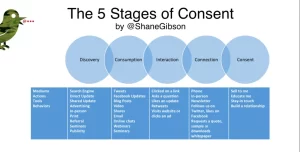
Thought Leadership in Social Selling Venn Diagram
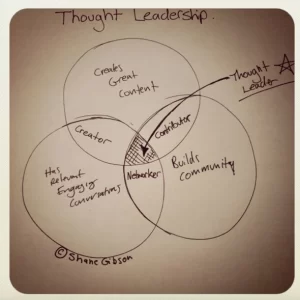
The post Social Selling Podcast: Using Thought Leadership to Fill Your Social Sales Funnel appeared first on Shane Gibson's Podcast – Social Selling – B2B Sales and Influence.
Guerrilla Social Selling 4 Nov 2015 3:42 AM (9 years ago)

Hello Guerrillas! It was great to spend 3 days with you at the Guerrilla Global Summit in Orlando Florida! As promised I am including my presentation deck from my seminar on Guerrilla Social Selling. Remember if you want to take apply to take part in the the Social Media Director program you need to apply by clicking here before 11:59 pm on Friday November 6th.
If you’re looking for a potential speaker for your next conference you can find my bio and speaking topics here. For joint ventures, consulting and partnerships you can contact me direct here.
Here are a few links to key resources I discussed:
The 9 Immutable Rules of Engagement in Social Selling
The Online Professional Sales Certificate Program
My FREE Social Media and Sales Podcast
Here’s the presentation deck:
The post Guerrilla Social Selling appeared first on Shane Gibson's Podcast – Social Selling – B2B Sales and Influence.
Social Selling and The Art of Failing Forward (Seminar Notes) 6 Oct 2015 3:35 PM (9 years ago)
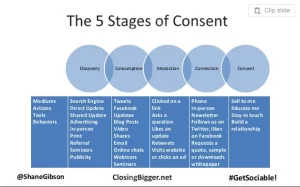
A big thanks to the BCITMA for inviting me to speak at your event this evening. I know I covered a lot in our brief time together so I thought I would post my slides and some links for your reference.
Here are some quick links for you:
Shane Gibson’s Online Professional Sales Certification Program
The Vancouver Sales Performance Meetup
The 2014 Sales Quota Attainment Study by A Sales Guy Inc. and Kitedesk
The Rules of Engagement InfoGraphic
The post Social Selling and The Art of Failing Forward (Seminar Notes) appeared first on Shane Gibson's Podcast – Social Selling – B2B Sales and Influence.
Online Sales Certification with Shane Gibson Starts September 8th 2015 30 Aug 2015 9:11 PM (9 years ago)
In order to win in today’s sales environment you need to stay ahead of your competitors and in-sync with your customers. Sales skills, training and strategy play a huge role in your success BUT for most people being tied up in a classroom or conference is too time consuming.
My goal was to make to create a world class sales course that was accessible and affordable to individual sales people, sales leaders, entrepreneurs and anyone else who wants to learn about selling.
With the help of Langara College and their D2L online learning system we have achieved this goal. Working with Langara College Continuing Studies and Knowledge Brokers International (Bill Gibson) we put together a four part Professional Sales Certificate Program that is completely online.
Our methodologies have been used and implemented at the enterprise level by Siemens, BMW, Ford, CMHC, HUB International, Zurich Life, SAB Miller and dozens of other organizations globally.
Following is a brief video that explains step-by-step what the course entails:
Each course is 18 hours in duration held over a six week period and consists of weekly reading, presentations, group discussions and live webinars. If participants can’t make the date and time of the live-webinar there will be an opportunity to watch a recorded version. All courses have testing built-in and each participant must have a passing grade in all courses to be eligible for the certificate.
- Successful Selling Strategies
- Persuasion, Communication & Relationship Building
- Motivation, Closing & Keeping Clients
- Sales & Planning Toolkit
About your Instructor and Trainer Shane Gibson
Shane was named on Forbes.com as the 5th most influential social sales professional in the world. Shane is an international speaker, and author on social media marketing and sales who has addressed over 100,000 people on stages in North America, Southern Africa, India, Malaysia, Dubai and South America. He is in high demand as a keynote speaker on the topics of social media and sales performance.
He is also the facilitator for the Langara College Professional Sales Certificate Program.
Shane’s books include Sociable! How Social Media is Turning Sales and Marketing Upside Down. Closing Bigger the Field Guide to Closing Bigger Deals and Guerrilla Social Media Marketing, co-authored with Jay Conrad Levinson.
Shane’s speaking and training clients that he has worked with include: Ford, CMA Canada, The Vancouver Board of Trade, Ford Motor Company, HUB International, Canaccord Financial and hundreds of entrepreneurs, individual sales people and marketers over the past 16 years. When he’s not working or tweeting you can find Shane hiking or skiing in British Columbia’s Coast Mountain range with his family.
The post Online Sales Certification with Shane Gibson Starts September 8th 2015 appeared first on Shane Gibson's Podcast – Social Selling – B2B Sales and Influence.
#SocialSelling at The Sky Hangar with The Andrew Westlund Group 9 Jun 2015 2:44 PM (9 years ago)

Thank-you to the Andrew Westlund Group for inviting me out to The Hangar today to address your group of companies for your monthly meeting. Social Media and sales were once thought of as separate disciplines yet today they are inseparable tools for business.
Here are some quick links for you:
The 2014 Sales Quota Attainment Study by A Sales Guy Inc. and Kitedesk
The Rules of Engagement InfoGraphic
Following is my PowerPoint Posted on SlideShare:
The post #SocialSelling at The Sky Hangar with The Andrew Westlund Group appeared first on Shane Gibson's Podcast – Social Selling – B2B Sales and Influence.
The 9 Immutable Rules of Engagement in #SocialSelling 11 May 2015 2:03 PM (9 years ago)
After working with sales people, social media marketers, community managers, entrepreneurs, charities and many other professionals on five continents I have had the opportunity to see the Rules of Engagement implemented (and ignored) in almost every environment.
Stephen Jagger and I sat down and penned these rules in 2008 when we were writing Sociable! – the tools have since evolved but the rules are even more relevant today then they were back then. We started with 7 rules and recently I added two more which I will share with you today. Before reading the rules I’d like to bring a couple things to your attention:
Firstly these rules aren’t negotiable. I have had all kinds of people that either claim to be too busy or too smart to follow the rules; they of course then complain about lack of results or lack of ROI from social media. I liken this to wanting to be in the Olympics but training and eating like you’re going to play in a beer league baseball tournament. These are simple rules but it takes work to implement them – you can attempt to outsource, automate or ignore these rules – in most cases this will end in failure.
Secondly – I don’t make the rules I just observe them. In short… don’t shoot the messenger.
Lastly – I do break the rules from time-to-time, in fact that’s how I discovered them. You can roll the dice and break the rules, just be prepared for the downside.
So if you want to rise above the crowd in social selling and social communications here are the 9 Rules of Engagement you will want to follow:
The 9 Immutable Rules of Engagement in Social Selling
#1 Stop pitching and start connecting
This one act can elevate you above the masses and establish life long relationships. Ignoring this can immediately get you forever categorized along with the used car sales people/get rich quick in MLM crowd. When someone connects with you on LinkedIn, Twitter or Facebook they’re often hoping to improve the quality of their network and expand their relationships in the marketplace.
Your first few interactions can build trust and lay the foundation for a win/win relationship. Too often it immediately becomes obvious that the sales person or entrepreneur connecting with you actually doesn’t care about you at all. They just want to sell something NOW. Resist the temptation to send a well-crafted marketing message via LinkedIn after connecting in fact just don’t do it at all. If you can’t take the time to truly customize your message to the person you’re addressing you’re most likely going to repel them permanently and destroy your credibility. Instead ask how you can help and show genuine interest in the other person’s business and life goals. Take your time getting to know someone, comment on their updates, ask them questions and add value regularly – do this well and people will look for reasons to do business with you.
#2 Doers win in the game of social media
Social media is more like a telephone than a billboard or a banner ad. It’s also about creating and curating great content. Great content in social media often comes in the form of conversations and sequences of updates that collectively tell a story. You can’t just lurk or put your big toe in the water and “test it out.” In order to win and gain mind share with your market you need to get in the game and create great content, tell amazing stories and have positive engaging conversations constantly.
#3 It’s not about you
Jay Levinson the father of Guerrilla Marketing used to like to label bad marketing content as “Me marketing.” Hop onto Twitter and you will notice that even most social media gurus and large enterprises are guilty of this social media sin. Most of their updates are about “my products, my press release, my customer praise, my opinion, etc.” No one cares. When I figured this out and I changed my focus my engagement, followers and opportunities doubled over night. Stop talking about your products or tweeting up your latest success, start sharing your customers content and ideas and stories that will help your target market succeed. This will make you worth following and your content worth sharing.
#4 Be fearless in your contribution to community
When you don’t feel like you have enough you tend to give very little to other people. This attitude feeds a downward spiral in sales and business. In order to get, you must first genuinely give value.
Very simply, give more than your competitors think is necessary and connect deeper and more often than your competitors are comfortably with. On giving more: if your competitors share a sound byte daily then share a full blog post or report. If they require an email address, phone number and an opt-in to get business information then ideally you should make your information or insights available with one click.
If your competitors generically send thank-you’s via Twitter then you should take the time to read about the person and customize a response. “Thanks for the share, how are things in Austin Texas?” is a lot more powerful than “Thanks for the share!”
If you’re content is truly great and your intent is good you won’t need to trick or manipulate people into giving up their contact information – they will come find you.
#5 Don’t be a social spammer, engage
The Internet especially the social networking part, is very, very noisy. It’s full of people yelling at their customers, mass emailing and messaging thousands of people in hopes of converting 1% of the people while they alienate the other 99%.
I recently received a really nice LinkedIn message from a LinkedIn expert asking how they could help me out. It was a nice gesture. Then the let down… their coworker sent me the exact same message – verbatim. When you send generic messages to your entire list it makes them feel like a number, not a valued connection. Avoid this type of messaging.
This also applies to your Twitter stream or Facebook page. When someone follows you ideally your content should be 90% value added updates, customer focused content and value added interactions. The other 10% can be well-timed marketing and sales content. When 90% of our updates are generic, broad pitches people feel spammed – and in many cases they disconnect from us or mute our updates.
#6 Be authentic
Information and truth always seems to eventually find a way to get on the internet. Even with iron clad legal agreements, aliases, and basic common sense, everything eventually is shared. There is no such thing as a private message. Once you send it, it is recorded and stored somewhere.
If you don’t want a picture of you drinking a beer posted on the internet; stop drinking beer. Everyone is afraid of “Big Brother” but the biggest risk to your privacy is a random stranger with a cell phone camera.
The same goes for business. If you make promises, promote your values and strong character on the internet and then don’t deliver or even worse – make false claims – don’t be surprised when it ends up on the internet.
This doesn’t mean you can’t make mistakes or have to have a perfect product or service. What it does mean is: only make promises and claims you can back-up, and if you make a mistake own up to it fast.
#7 Be consistent
Consistent presence on social networks will do more for your credibility and trust than a brilliant marketing promotion or groundbreaking report. You don’t have to tweet 30 times per day or write 6 blog posts a week, but you need to commit to a reasonable amount of meaningful daily activity and stick to it.
Imagine if your favorite TV show only played once in a while and constantly varied their format, length and time of day they aired. It wouldn’t be your favorite show too long. Imagine if you favorite coffee shop randomly closed for days without notice or indication when they would open again. Be dependable and be present consistently, this one habit will make gaining momentum and growth in social selling a lot easier.
#8 Amplify through community
One of my favorite leadership quotes comes from John C. Maxwell where he shared that “One is too few a number to achieve greatness.” This is a foundational social communications and social selling truth. In order to build a powerful presence and reputation you need a community that trusts you. You may never have 10,000 Twitter followers, but you can build strong relationships with 10 people that each have 10,000. You may never have the credibility of the CEO of a major tech start-up BUT you can build alliances with those CEOs.
Genuine relationships with people will give you leverage for your message and your mission. Invest in building relationships with the communities and influencers that can help amplify your personal brand and give you access to networks beyond your personal circle of influence.
#9 Get Sociable!
Social media is not a video game or a popularity contest, especially for sales people who are responsible for generating revenues. Getting Sociable! is about using the internet to get off of the internet and connect in person. Very few things drive more ROI from social selling activities than old-fashioned face-to-face meetings. When I connect with someone on Twitter or LinkedIn my intent is to eventually meet them face-to-face, and if that’s not possible than via Skype Video or Google Hangout.
When you meet in person you quickly learn the truth about a person and an opportunity. Once someone has met you in person they will most likely trust you more and pay more attention to your online activities as well. Make it a goal to connect weekly with at least one online connection and take them offline. This one activity will accelerate sales cycles and build trust fast.
So there you have it. The 9 Immutable Rules of Engagement in Social Selling. These aren’t short cuts or a magic bullet BUT if applied effectively and wholeheartedly they will bring you long-term success in social selling.
The post The 9 Immutable Rules of Engagement in #SocialSelling appeared first on Shane Gibson's Podcast – Social Selling – B2B Sales and Influence.
The Single Biggest Mistake Salespeople Make in Social Media #SalesTribe 30 Apr 2015 9:51 AM (10 years ago)
Last week I hosted a #SalesTribe twitter chat with 30 sales thought leaders and authors. Social selling and social media use by salespeople is a hot topic. Many people who use Twitter and Facebook shun their use for sales, a lot of this can be attributed to poor practices and lack of skill on the behalf of motivated yet often tactless salespeople. I asked the experts what they think the single biggest mistake is that sales people make using social media and here’s what they said:
The post The Single Biggest Mistake Salespeople Make in Social Media #SalesTribe appeared first on Shane Gibson's Podcast – Social Selling – B2B Sales and Influence.
What does the sales manager of the future look like? #SalesTribe 23 Apr 2015 9:21 AM (10 years ago)
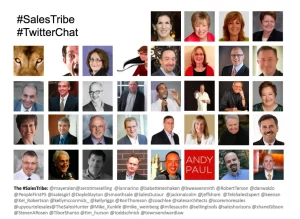
Sales management and sales leadership in the near future will look very different from the way it looks today. Every day there’s a new gadget, widget, crm and sales guru touting groundbreaking methodologies. The question is what skills does the sales manager and sales leader of the future really need? I asked this question of 30 sales authors and sales thought leaders during our #SalesTribe twitter chat and here’s what they had to say:
The post What does the sales manager of the future look like? #SalesTribe appeared first on Shane Gibson's Podcast – Social Selling – B2B Sales and Influence.
The Future of Selling #SalesTribe Twitter Chat April 21st! 10 Apr 2015 2:10 PM (10 years ago)
Join us on April 21st to talk about the Future of Selling
I’m honoured and excited to be part of a Twitter chat on this month along with over 30 leading sales authors and thought leaders. It will be held on April 21st 2015 10 am Pacific / 1 pm Eastern
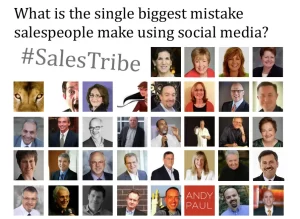
The future of selling Twitter sales chat.
For the first time we are bringing together over 30 leading sales authors and thought leaders to share their insights on the future of selling. This fast paced hour long Twitter chat will discuss:
- How to Win with Social Selling
- The latest sales apps and tech tools
- Is Cold calling really dead?
- Tips, hacks and sales principles for succeeding in 2015 and beyond
I will be moderating the Twitter chat (@ShaneGibson) posting questions and attempting to engage in what will be an enormous conversation on the future of selling. Follow the #SalesTribe hashtag to get involved in the conversation. See you on April 21st!
The post The Future of Selling #SalesTribe Twitter Chat April 21st! appeared first on Shane Gibson's Podcast – Social Selling – B2B Sales and Influence.
LinkedIn For Business 14 Jan 2015 6:43 AM (10 years ago)
A big thanks to the BMO Financial Group for inviting me to speak at your business development conference. LinkedIn as I mentioned is not a strategy, it’s a great tool IF you have the right processes and disciplines in place.
The key components of a great LinkedIn in strategy includes:
- Having a complete profile with a current professional looking picture. (No phantom hands on your shoulder from the person you cropped out of your photo)
- Include as much of your work history, personal interests, memberships and rewards as possible – people buy from real people and also want to see you have a track record and some depth.
- Ask for and give written recommendations
- Embed relevant rich media like photos, video and slideshare presentations to turn convert your profile from boring online resume to an engagement page.
- Register for LinkedIn publisher and create unique content that speaks to your audience
- Curate and share great content daily to stay on the radar of your connections “Mindshare = Wallet Share”
- Make a habit of visiting LinkedIn daily
- Reach out and ask for new connections and introductions daily
- Lastly this is not a video game – don’t just collect contacts, use the internet to get off of the internet and build real relationships (that’s how you create social media ROI).
Here’s my presentation deck:
The post LinkedIn For Business appeared first on Shane Gibson's Podcast – Social Selling – B2B Sales and Influence.
How Intent Can Empower Your Sales Conversations 21 Jul 2014 2:39 PM (10 years ago)
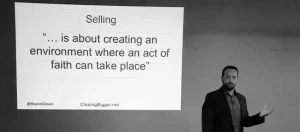
Many variables can impact our chances of closing a deal, they include but are not limited to: industry, geography, financial situation of the customer, product quality, the customer mood or sentiment and a variety of other influences.
When comparing sales people within the exact same company very few things influence the level of one person’s success over the other more than the quality of conversations they have with future and existing customers.
Too often sales training is focused on telling people what to say. What we need to really focus on is how to think and have great conversations. Those people who can have great conversations rarely are thrown off-guard by customer questions, objections or complaints – they’re not afraid to hand the reigns over to the customer. There are several key competencies to being a great conversationalist. The first most important one in my opinion is a positive intent.
Before awareness, asking great questions or listening I truly believe intent comes first. It’s the pillar of your sales strategy. When you pick up the phone or step into a client meeting your intent will frame what you hear, the words you use and even your tonality, body language and pace of conversations.
An sales person answering customer inquiries could have the intent to “get an order” or “sell something from my product line.” This intent limits the customer experience in many cases and also misses larger opportunities. “Get the order” often translates to being an order taker, we ask fewer questions and the questions we ask are about driving the person to a predetermined product or service. If it’s not an ideal fit we often have to rely on hard closes, discounting and heavy objection handling. In this situation our closing ratio is low and the potential for negative customer feedback is high.
For instance if you work in sales at a an insurance company your intent could be “to sell the people one of our insurance products.” With this type of intent we will tend to ask questions that push people toward a narrow selection of products and if they don’t want that product the conversation can end quickly. This type of conversation can often degrade to a price only conversation or miss opportunities you had not considered. A more powerful intent that would build stronger relationships and create a better customer experience could be: “to guide my customers to invest in insurance products that give them peace of mind and take care of them in their times of need, now and in the future.”
This intent immediately expands our awareness, it changes the questions we will ask the customer and also will expand the product offerings we will talk about. All of a sudden we are having a conversation about where they want to retire, their 3 children that they want to take care of and what kind of legacy they want to create. We have laid the foundation for a lifetime customer. We also move the conversation to a place where it’s less price focused and more about the true underlying needs and motivations of the customer.
Positive intent is a conscious act that we need to commit to on every call and interaction. When the phone rings consciously state your intent to yourself before you answer the call. It’s a great way to focus and heighten our level of empathy and engagement on the phone (or in-person). When the our sales process starts with the intent to empower people to succeed it adds immeasurable value to the customer experience and it inevitably makes our job as a sales person more rewarding, personally and financially.
Next steps
- Create a statement of intent: In two sentences or less state what your intent is going to be on each and every call moving forward.
- Type this up, print it out and put it somewhere near your phone where you can see it and recite it before each call.
- Be aware over the next several days of the impact this has on your calls.
The post How Intent Can Empower Your Sales Conversations appeared first on Shane Gibson's Podcast – Social Selling – B2B Sales and Influence.
Living with F.E.A.R 26 Jun 2014 10:39 AM (10 years ago)
Fear can often be our friend. It’s what has kept us alive as humans for many millennia. We are wired to be full of fear when we sense a threat in our environment. It’s what makes us think twice about climbing a rock face without a rope or jumping off a bridge just for the fun of it. As a sales person, a little bit of fear can give you an edge and make sure you prepare for your big presentation or pitch. Being afraid is natural part of life. In many cases it’s healthy, but fear can also burn up a lot of energy and stop us from realizing our true potential.
A number of years ago I found myself driving late at night from Johannesburg to Bloemfontein South Africa with my father Bill Gibson and my friend and mentor Jim Janz. It was the late 90’s and at that time violent carjackings were happening multiple times daily in the country. While the new ANC government had ushered in an era of unparalleled freedom and opportunity – crime also filled the vacuum that the previous regime had left.
One particularly heinous approach to carjacking was being employed frequently on the highways. These criminals would drag an old wrecked car onto the road and set it on fire – then they would lie on the road and often hide in the ditch as well. When you stopped on the side of the road to help they would rush out of hiding with assault rifles firing and take the victims vehicle by force. They would often kill the people in the car.
Before leaving Johannesburg that night we discussed this threat but didn’t ever think that it could be us that would be faced with a highway full of fire. We were well into Vrystaat (The Free State). It was around 1:00 am and we hadn’t seen another car, person or sign in quite a while. The Free State in many places quite closely resembles the Canadian Prairies – farm land as far as the eye can see and one very straight road that disappears into the horizon.
We were climbing a slight incline on what was otherwise a flat straight road. As we were climbing this hill I began to see an orange glow in the distance – the orange glow grew brighter and we could smell smoke coming into the vehicle. Cresting the hill we could see down the other side. Directly in our path was a raging fire at the bottom of the hill.

I began to slow down but my father quickly reminded me that often the carjackers would hide where people stopped and attempted to turn around. With only a couple hundred meters before we got to the fire on the road we discussed our options: we could slow down and still do a u-turn, we could stop and just wait, or we could step on the gas and hopefully drive around the blockade by using the gravel shoulder of the highway. We decided on option 3.
I put the pedal to the floor accelerating as we approached the fire. Jim placed his hand on my shoulder from the back seat as we uttered mutual “I love you man”s with our hearts pounding. I prayed that somehow we would make it around or through the fire without getting shot or having to harm another human being. We picked up more speed and Dad and Jim were now bracing themselves for a potential impact.
Suddenly I found myself slamming on the breaks and gearing down as the road turned to the left with no warning. The wheels chirped and hopped a bit but we stayed on the road. There was no burning car or carjackers – just a burning farmer’s field being razed to make room for new crops. The fire wasn’t blocking the road – the road did a quick hairpin turn around the farm and then continued on it’s original route. Our tears of fear quickly turned to tears of laughter as we literally belly-laughed for 10-minutes afterward.
What a neurotic bunch of Canadians! For me this experience is an amazing metaphor around a certain type of fear or F.E.A.R. This stands for:
False
Evidence
Appearing
Real
We can often see evidence of a potentially bad experience, are faced with the unknown or a new business challenge – and begin to start telling ourselves the story of what could happen. We use incomplete or false evidence and work ourselves up to a point to complete anxiety. This type of F.E.A.R. can drain our energy, rob us of opportunity and take us away from our purpose.
We can worry about changes in our business model, our next meeting with a boss or colleague or about our next sales call. This worry rarely solves any problems or contributes to our success in these situations.
As sales leaders, entrepreneurs, executives and community leaders it is vital that we challenge our own F.E.A.R. and help our people to do the same. The key is to start telling stories where we win in the end.
Next Steps:
- What F.E.A.R.’s have you recently entertained that turned out not to be real?
- How much time, money, energy and opportunity was wasted as a result of this F.E.A.R.?
- What can you do to break this cycle and make sure you are focused on more empowering outcomes?
The post Living with F.E.A.R appeared first on Shane Gibson's Podcast – Social Selling – B2B Sales and Influence.
11:59:59 – The Will to Win 26 Jun 2014 10:26 AM (10 years ago)
This weekend I watched my girlfriend’s all women’s team play in a baseball tournament. I sat on the sidelines (not the easiest thing for a guy who likes to be moving constantly) and watched them compete. They played some great ball and ended up 2nd overall in the tournament. What I want to focus on today is something their coach Chad had to say to the team.
One of the players asked what the score was. Chad’s response was “the score doesn’t matter – play like you’re behind by 5 in the last inning.” (The team was leading 12-9 at that point)
That one line resonated with me a lot. The difference between “beer-league” thinking and championship thinking lies within that one line. It’s about intensity and follow-through. It’s not about slightly exceeding the status quo (or our quota). It’s about seeing how far we can take it, competing with ourselves to win as big as we can. (For the record – they played hard until the very last play).
This lesson reminded me of a good friend and mentor of mine Jim Janz, a giant in the direct sales industry. He’s earned and still earns millions of dollars annually as a result of the sales leaders he has developed and helped become successful over the past 40+ years.
The single most important rule Jim shared with me that has helped him and his people succeed is this:
It’s not over until 11:59:59 on the final day of the month.
Success and quota attainment is not linear and it has as much to do with momentum and magnetism as it does with qualified prospects or the perfect sales process.
There is magic in 11:59:59.
Lets look at a typical scenario that I have seen hundreds of times:
A salesperson or entrepreneur sets a goal of $100,000 in sales for the month. By the 15th they are only at $19,000 in sales. At this point their attitude begins to shift and they already decide that the $100,000 is unattainable – in many cases they will also build a long list of reasons why it hasn’t happened. They begin to tell the story of why they can’t and won’t win. They say things like:
- “The leads that marketing is delivering are duds.”
- “The economy is really tight right now.”
- “I don’t have time to make proactive calls – I’m too busy to look for new business.”
- “No one else in the team is winning either – it’s tough out there.”
So on the 15th of the month they go and negotiate with their boss (or with themselves) and decide that $60,000 is a more reasonable goal. They also adjust their attitude, intensity and creativity to match that goal. Their customers can hear that lack of enthusiasm and lack urgency on the phone. At 9:30 am on the final Friday of the month they hit $62,000. They switch to thinking about the weekend, put their brain on auto-pilot and get ready for a fresh new start next month.
They tell themselves that when all that other stuff lines up (better leads, positive economics, fewer admin tasks and evidence that other people have done it) then they will be able to hit that $100,000 goal.
Then of course there are those people that don’t quit on the 15th of the month, or even at 9:30 am on the final day. The numbers don’t matter. They push for the goal.
I worked with a major Board of Trade’s sales team a number of years ago, helping them with their sales process. The sales manager has a diverse leadership style – she’s both highly empathetic and inclusive BUT you better perform if you work for her.
April is year-end for them and at 9:30 am on the final day of the month the entire team was well behind targets. She found them literally mulling about by the water cooler – telling their stories about why things had changed, why all the good prospects had already joined us, and why some people had good reasons for not renewing membership.
The manager pulled her team into their boardroom and gave them the 11:59:59 talk – it was their job to push through with the same intensity they started with month with – and with an expectation that they can still win. She announced a celebration party that night in honor of them meeting and exceeding their quota. Each person was asked to go back and look over their top 20 prospects that still hadn’t signed yet and put together a compelling offer for them – and to continue to call and follow-up until the final hour.
Just after 6:00pm that day, not even 11:59:59 pm, her team had closed the equivalent of a month worth of business – the same day that started with them admitting defeat. It was the single biggest sales day they had on record that year.
They played like they were 5 points behind, but they played to win. Too many of us set a goal to win but will never know what we are capable of because we mentally walk off the field of business in the 4th inning.
One final lesson From Jim. Jim Janz would always tell his people that their job wasn’t to actually hit their BHAG (Big Hairy Audacious Goal) – it was to play to win until 11:59:59 on the final day of the month. At that time they would then take an inventory of their progress, celebrate their efforts, review lessons learned and then set a new audacious goal. Failure is never final or fatal – just work hard and learn from your mistakes.
I have two questions to wrap this up:
- What would happen if you worked and re-worked your plan until 11:59:59 pm on the final day of the month?
- What would happen if you played like you were 5 points behind regardless of how big your last sale was?
The post 11:59:59 – The Will to Win appeared first on Shane Gibson's Podcast – Social Selling – B2B Sales and Influence.
Online Professional Sales Certification Program Launches May 5th 23 Apr 2014 6:47 PM (11 years ago)
On May 5th the next Professional Sales Certificate Program starts. For many of our graduates it has helped boost their company revenues and personal career in a matter of months. It’s said that nothing happens until someone sells something. We may have all kinds of great gadgets and amazing tools like Twitter and LinkedIn but someone still needs to know how to close the business.
Working with Langara College, international speaker Bill Gibson of Knowledge Brokers (South Africa) and myself (Shane Gibson) have put together the ultimate sales training program for new sales professionals and professionals that want to add a revenue generating toolkit to their repertoire. The methodologies in this program have been successfully used and implemented by major sales organizations including BMW, ABSA Bank, Gestetner, Vodacom, Siemens and Ford to name a few.
Our next program starts soon and here are the dates:
Successful Selling Strategies – 60655
May 5 – 28, 2014
Persuasion, Communication & Relationship Building – 60656
June 2 – 25, 2014
Motivation, Closing & Keeping Clients – 60657
July 7 – 30, 2014
Sales & Planning Toolkit – 60658 * Updated with brand new content on social selling
Aug. 5 – 27, 2014
Each course is 18 hours in duration held over a six week period and consists of weekly reading, presentations, group discussions and live webinars. If participants can’t make the date and time of the live-webinar there will be an opportunity to watch a recorded version. All courses have testing built-in and each participant must have a passing grade in all courses to be eligible for the certificate.
- Successful Selling Strategies
- Persuasion, Communication & Relationship Building
- Motivation, Closing & Keeping Clients
- Sales & Planning Toolkit
About your Instructor and Trainer Shane Gibson
Shane was named on Forbes.com as the 5th most influential social sales professional in the world. Shane is an international speaker, and author on social media marketing and sales who has addressed over 100,000 people on stages in North America, Southern Africa, India, Malaysia and South America. He is in high demand as a keynote speaker on the topics of social media and sales performance.
Shane is the in-house Sales Trainer for BuildDirect and also the facilitator for the Langara College Professional Sales Certificate Program.
Shane’s books include Sociable! How Social Media is Turning Sales and Marketing Upside Down. Closing Bigger the Field Guide to Closing Bigger Deals and Guerrilla Social Media Marketing, co-authored with Jay Conrad Levinson.
Shane’s speaking and training clients that he has worked with include: Ford, CMA Canada, The Vancouver Board of Trade, Ford Motor Company, HUB International, Canaccord Financial and hundreds of entrepreneurs, individual sales people and marketers over the past 16 years. When he’s not working or tweeting you can find Shane hiking or skiing in British Columbia’s Coast Mountain range with his family.
The post Online Professional Sales Certification Program Launches May 5th appeared first on Shane Gibson's Podcast – Social Selling – B2B Sales and Influence.
Why Sales People Need to Stop Googling and Start Nimbling 8 Apr 2014 7:25 AM (11 years ago)

Social CRM and social selling are two terms which I have seen go from obscurity to mainstream business topics in the past 24 months. Jon Ferrara CEO and Founder of Nimble, an early innovator in social CRM and social selling technology, took time out of his schedule to share with us the latest innovations in the space.
“Social selling is about inspiring and educating the customer as a trusted advisor.” – Jon Ferrara, CEO and Founder of Nimble
In this podcast Jon Ferrara talks about his new “Nimble Everywhere” plugin and tool for the Chrome browser. This plugin can literally embed rich, relevant data in any cloud based application – it even enhances tools like SalesForce.com or Microsoft 360 and Dynamics.
Some of the key talking points of the podcast were as follows:
- Your contacts are everywhere so your social CRM and prospecting tools should be everywhere as well.
- We need to turn connections into conversations and then those relationships into a measurable mutually beneficial business outcome for your company. This is something we all struggle with in sales and social networking for business and Nimble Everywhere makes this easier to do.
- 60% of your sales time is looking people up, logging what you did. From a social communications perspective your CRM should aggregate these conversations with each contact in an automated fashion.
- The inbox is more and more becoming the ignore box for many people. Social media and social networks give us a way to get around the inbox.
- It’s not about who owns the customer. It’s about the fact that the customer now owns the process.
- When I asked Jon about what his favorite social media tools were he said for him the two primary social selling channels are LinkedIn and Twitter for him and his organization.
If you want to dig deeper here’s a video presentation created by Nimble that shows you how Nimble Everywhere can enhance and streamline your sales process:
The post Why Sales People Need to Stop Googling and Start Nimbling appeared first on Shane Gibson's Podcast – Social Selling – B2B Sales and Influence.
An Edgy Conversation with Dan Waldschmidt on Success 29 Mar 2014 5:26 PM (11 years ago)
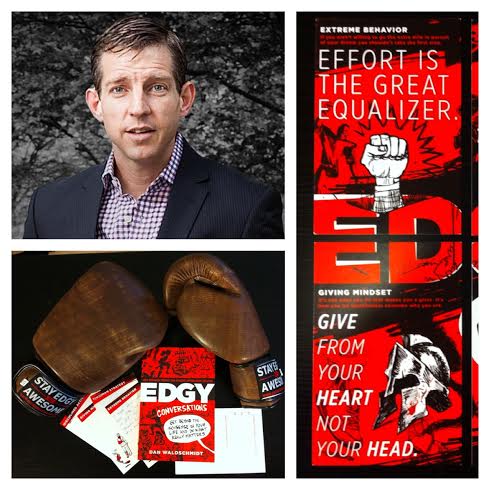
Edgy Conversations – How Ordinary People Can Achieve Outrageous Success is an awesome book that once I picked up I pretty well read the whole thing. I asked Dan Waldschmidt, author of the book to do a podcast interview. In this podcast we really got to dig onto his methodologies and principles of creating a great life and a successful business.
Dan interviewed and researched over 1000 successful people from all walks of life and has managed to distill it down to four key attributes or behaviors that drive success. In our interview we cover this, plus we also dig into how he is able to consistently land multi billion-dollar companies as clients through online thought leadership.
In his book Dan covers four key behaviors and strategies for success:
Extreme Behavior
Disciplined Activity
Giving Mindset
Y(H)uman Strategy
Have a listen to the podcast to and learn Dan’s EDGY approach to success.
Quick Links:
Post an Edgy Comment below!
The post An Edgy Conversation with Dan Waldschmidt on Success appeared first on Shane Gibson's Podcast – Social Selling – B2B Sales and Influence.
The Rules of Engagement for Social Selling and Marketing 18 Mar 2014 8:32 PM (11 years ago)
As a social selling speaker I get a lot of great opportunities to speak globally. One of my favorites is Vegas. CDC Software (Now Aptean) invited me to speak on social crm and social media for sales organization. In this part of my seminar I talk about the 7 Rules of Engagement in social media and social selling:
The post The Rules of Engagement for Social Selling and Marketing appeared first on Shane Gibson's Podcast – Social Selling – B2B Sales and Influence.
Top 5 Social Media Podcasts 17 Mar 2014 8:39 PM (11 years ago)
I have been podcasting since 2004. These podcasts have included guests interviews with Guy Kawasaki on Enchantment and with Jessica Northey on how she become one of the most influential women in social media.With close to 120 podcasts in the archives I thought I would hand-pick some key podcasts that I have produced on social business strategy. Here are my top 5 (or at least 5 you shouldn’t miss):
#1) 10 Corporate Social Media Myths Dispelled
This social business podcast is about 10 social media myths that are commonplace in the companies and organizations that we work with at Socialized! Agency. Many of these misconceptions stop organizations from truly realizing the potential of social media (or even starting).
#2) How to Hire the Right Social Media Manager the First Time
Hiring a social media manager, social media coordinator, chief tweeter or whatever you might call it is a challenging endeavor. There are many brands which have experienced great success and many who have also shot the foot off of their brand on the internet – often due to who they hired or promoted to do so.
#3) What Comes First a Pretty Website of Business Results?
Too many people think a website, Twitter account or well produced video is a strategy — in reality they’re just tools. Before you invest money and time in building a brand new site, or devote more time to your social media efforts, it might be a good idea to have a plan.
#4) Social Media Department Versus Socialized (Social) Business?
As organizations push into the social media space many will start with a social media position, others will have a social media department within their company. This is a great initial step but there are pitfalls and down-sides to seeing social as separate from other business activities. This social business podcast talks about the whether or not we should have dedicated social media silos or fully social companies.
#5) Should You Let Your Sales Team Publish Content Using Social Media?
Today’s podcast answers the question “Should you let your sales team publish content using social media?” I cover 5 reasons sales professionals should not be publishing content on social media and 13 reasons they should be.
Subscribe to the Social Business Podcast on iTunes
Shane Gibson (@ShaneGibson) is a sales and social media speaker who has addressed over 100,000 people on stages on three continents over the past 15 years. He is also co-author of Guerrilla Social Media Marketing and Sociable! How Social Media is Turning Sales and Marketing Upside-down. When he’s not speaking or Tweeting he is in the trenches working with the sales team at BuildDirect as a sales trainer.
The post Top 5 Social Media Podcasts appeared first on Shane Gibson's Podcast – Social Selling – B2B Sales and Influence.
Social Media Podcast: This is Your Permission to Share and Create 17 Dec 2013 11:41 AM (11 years ago)

Todays social media podcast is focused on sharing and creating. Too often we hold back, hide our voice or just never start the process of being creative. We all have something to share. Whether you’re an aspiring writer, an artist or in charge of a social content strategy it all starts with getting in-the-flow of creating and sharing as a discipline and habit. In this podcast we cover following:
- Strategies on becoming creative
- The role sharing plays in successful social media marketing and communications
- How to overcome the fear or rejection so you can share what you create
- Tips on how to get out of a creative rut
- How creating, sharing and contributing build momentum in your business and your life
Shane Gibson (@ShaneGibson) is a social media speaker who has addressed over 100,000 people on stages on three continents over the past 15 years. He is also co-author of Guerrilla Social Media Marketing and Sociable! How Social Media is Turning Sales and Marketing Upside-down. When he’s not speaking or Tweeting he is in the social media trenches working with his clients on their sales and social media strategies.
The post Social Media Podcast: This is Your Permission to Share and Create appeared first on Shane Gibson's Podcast – Social Selling – B2B Sales and Influence.
Tweets and Quotes in Memory of Nelson Mandela 5 Dec 2013 5:17 PM (11 years ago)
“Simunye – we are one.” Is a Zulu word and common blessing and mantra I heard over and over while living in South Africa. I lived in South Africa in 1997-1999 and traveled back and forth to there in the following years another half dozen times. My parents Bill and Beverley Gibson (originally from Nova Scotia) moved there in 1996 and now call South Africa home where my Dad does leadership and sales training for all kinds of South African organizations.
I feel privileged and blessed to have lived there during such an amazing time of transition and reconciliation. At that time Desmond Tutu sightings were a weekly occurrence for me in Sandton. In many instances I witnessed true reconciliation and acknowledgment between people in South Africa that I have yet to see here in Canada or anywhere else I have visited in the world. Here are some great quotes by Nelson Mandela Tweeted out from around – Rest in Peace Madiba:
Thank you for making the world a better place! #RIPNelsonMandela pic.twitter.com/Cc9KTzvKnu
— Rizki Aljupri (@RizkiAljupri) December 6, 2013
No system can never stop the ones determined for change #NelsonMandela #RIPNelsonMandela pic.twitter.com/IcJ6sf0Mpy
— Artsico (@artsico) December 6, 2013
A man whole truly made a difference with his life. #RIPNelsonMandela pic.twitter.com/pJoz6BZpmL
— SoccerGoalieProblems (@soccgoalieprobs) December 6, 2013
Today we honor a great leader who inspired a generation. #RIPNelsonMandela pic.twitter.com/DinxNIHKXX
— Fair Trade Certified (@FairTradeUSA) December 6, 2013
#RIPNelsonMandela pic.twitter.com/42qXSRnb46
— chill tweets (@chilltweetss) December 6, 2013
RIP Nelson Mandela pic.twitter.com/8fbz7fpw7M
— Women's Football (@womensfootie_id) December 6, 2013
He spent 27 years in Jail and had this to say when he walked out. Respect ??
#RIPNelsonMandela pic.twitter.com/dgmGQUNLVi
— Shivneel Chauhan (@Shivneel_dotcom) December 6, 2013
#RipNelsonMandela pic.twitter.com/M5KRE1ND3z
— The Trend Setter (@xtiandela) December 6, 2013
(@xtiandela) December 6, 2013
Today we mourn and celebrate the life of a man who changed the world because he believed in it. #RIPNelsonMandela pic.twitter.com/0WGO1pPwSd
— Kozlovsky Brazil (@KozlovskyBR) December 6, 2013
#RIPNelsonMandela pic.twitter.com/DjkqwIf1sU
— Zendaya Coleman (@Zendaya) December 5, 2013
"To deny people their human rights is to challenge their very humanity." #Quote #RIPNelsonMandela pic.twitter.com/NdQflWsLUL
— Xiluva Nyane (@Xiluvanyane) December 5, 2013
It's in our hands. #RIPNelsonMandela pic.twitter.com/hbPnzyvE9f
— JAI&SKIP REFOLLOW? (@Dailyfangirl) December 5, 2013
Join ONE in honoring #NelsonMandela & the fight against poverty: "Let your greatness blossom"http://t.co/LDj8ZnSQto pic.twitter.com/lTOlQwiP8p
— ONE (@ONECampaign) December 6, 2013
"A good head and a good heart are always a formidable combination." — Nelson Mandela pic.twitter.com/TJZfQuRMsJ
— People magazine (@peoplemag) December 6, 2013
"Overcoming charity is not a gesture of charity. It is an act of justice." –@NelsonMandela #EndPoverty pic.twitter.com/wVEkvxz9wW
— Half the Sky Mvmt (@Half) October 17, 2013
If u want to make peace w/ ur enemy, then u must work with ur enemy. Then he becomes ur partner – Nelson Mandela #quote pic.twitter.com/77H6Kmr0
— Converging Worlds (@ConvergeWorlds) June 25, 2012
The post Tweets and Quotes in Memory of Nelson Mandela appeared first on Shane Gibson's Podcast – Social Selling – B2B Sales and Influence.
Social Media Is Hard – Get Over It! 27 Nov 2013 8:23 PM (11 years ago)

Social media is hard. Success is hard. There comes a point in your business or life when you have to decide if you’re going to hangout by the water cooler with people who are also talking about why they can’t get ahead – or do the hard work that will make you a Linchpin in your office or in your industry.
Social media communications is much the same. It’s not a mystery why Ford crushes their competition in the social media space – they have been doing it for over 5 years. Here in Canada we have been actively training their dealer network since 2010.
In his ground-breaking book “Outliers” by Malcolm Gladwell he talks about in-depth research that points to the fact that it takes 10,000 hours to become a master at a subject or industry vertical. Olympians train for years for their moment of glory. Top performing insurance sales people make 50 calls a day for a decade to get to the top .5% of their industry. Google is an overnight success that was founded in 1998. You get the picture.
Jim Janz, multi-millionaire and direct selling pioneer once told me that it takes 6 months to look like a leader, 12 months to become a leader (in his business) and 18 to 24 months to build a loyal community that trusts you and follows you.
Taking into account what Jim shared with me – I recently had a client tell me they were going to no longer be proactive and invest in their social media efforts. “We have been doing this for months and the ROI isn’t there yet.” Seemingly wise senior executives are doing this en masse – it took them years to build their brand and trust but somehow community building and proficiency in doing so with social media should somehow defy all other conventional business rules – it takes time to build something that will last – they just want to write a cheque (that’s a check in the USA) like they’re buying a TV ad and have instant results – it doesn’t work that way.
There are 1.3 billion people globally using social media to connect, collaborate and yes make buying decisions. It’s hard work to get their attention, add value, build a relationship and convert them to clients. The reality is social media and social networks are here to stay – in fact they are becoming the primary drivers of buying decisions by senior executives and the general public.
1. Consumers are 71% more likely to make a purchase based on social media referrals (Hubspot)
2. Social networks influence nearly 50% of all IT decision makers (LinkedIn – learn more at TechConnect ’12)
3. Out of 53% of consumers who said they use Twitter to recommend companies or products in their Tweets, 48% bought that product or service(SproutSocial)
4. Twitter is the #1 online channel for influencing purchasing decisions surrounding electronics (Mashable)
5. 15,100,000 consumers go to social media channels before making purchase decisions (Knowledge Networks)
6. 49% of consumers use Facebook to search for restaurants (Mashable)
7. 74% of consumers rely on social networks to guide purchase decisions (SproutSocial)
What’s the solution? Eventually you need to become a social business. If your customers prefer Twitter, Facebook and Instagram as communications tools over the phone (as in voice calls) and watching TV – then why force them to use email and the phone? While you’re resisting change your competitors are building community and gaining future customers (some of them yours).
• What’s the natural buying process that my customer follows?
• Where do they get their information?
• Who influences their buying decision?
• How do I get above the noise of my competitors?
• How to I connect with them personally and build real rapport?
Social media and social networks when combined with a solid strategy and plan are the answers to these questions. But it’s a discipline and a shift for many in the way they do business. It’s not a silver bullet, and it’s not an ad campaign you can support for a few months and then move onto something new. It’s about building a community and also building competency in all departments in social media communications.
So here’s my pitch. If you want instant results, with millions of followers and massive brand recognition and no need to engage or empower your staff to be social ambassadors… don’t use social media – BUT realize that that “nice to have” social media competency will at some point become a need at the crisis level.
If you’re willing to pay the price, invest the energy and forge bullet-proof relationships with customers in the next 24-36 months then maybe social media is something you’re ready to invest in. What it isn’t at first it is at last. Investing in building a large community and real relationships online creates an asset that can keep paying for years – but anything worthwhile take effort and discipline.
The post Social Media Is Hard – Get Over It! appeared first on Shane Gibson's Podcast – Social Selling – B2B Sales and Influence.
How Intent and Focus Drive our Success 14 Nov 2013 11:22 AM (11 years ago)
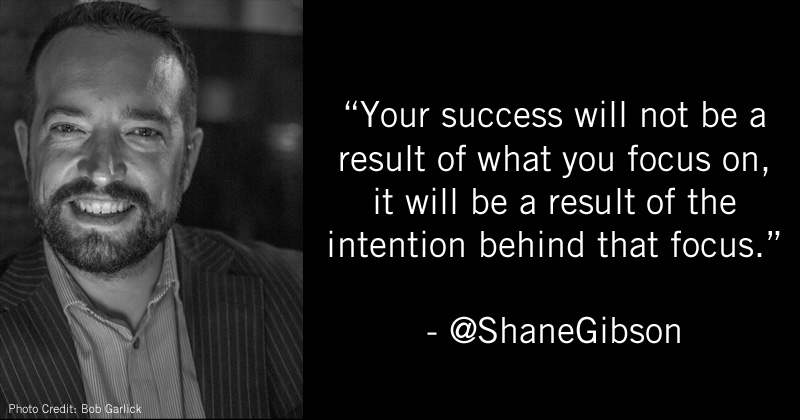
Today’s Podcast is on the power of intent in sales, leadership and marketing. We are being constantly told that what we focus is on is vital, yet the intention behind that focus determines the quality of our results.
In his life-long study of Micro-Expressions Paul Ekman, Ph.D has proven that whether we realize it our not we are constantly telegraphing our intent and emotional state to those around us.
In this podcast I will also talk about the 6 ways you can fine-tune and direct your intent for better results which are:
- Check-in on your emotional state, confidence and outlook
- Start with the receiver in mind
- Be clear on your goal and the benefits
- Set a goal to make your touches and interactions enchanting
- Be totally present when taking these actions
- Be gracious in all aspects of interacting – be unattached to the results
Do you have any great stories about intent? I would love to hear them!
The post How Intent and Focus Drive our Success appeared first on Shane Gibson's Podcast – Social Selling – B2B Sales and Influence.
23 Social Media Tips in 140 Characters or Fewer 25 Oct 2013 5:49 PM (11 years ago)
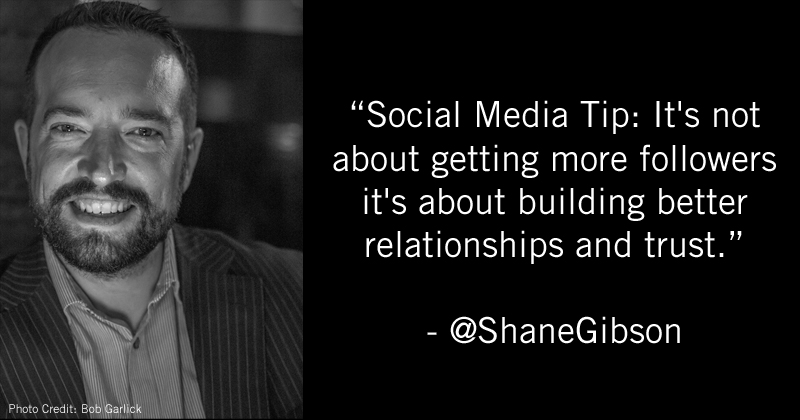
I tweet social media tips daily. I know Twitter is pretty noisy so I thought I would pull some of my most popular and favourite tweets from the past couple months. Which one is your favourite?
Social Media Tip: Behind almost every "small" person on the internet there's a massive influencer one-click or tweet away.
— Shane Gibson (@shanegibson) October 10, 2013
Social Media Tip: Don’t expect people to be generous and share your stuff if you’re stingy with your social media voice and reach.
— Shane Gibson (@shanegibson) October 21, 2013
Social Media Tip: Twitter works really well as a conversation tool IF you talk to people. Less links more hellos! — Shane Gibson (@shanegibson) October 16, 2013
Social Media Tip: Focus more on what motivates and inspires people and less on rankings, ratings, followers and algorithms. — Shane Gibson (@shanegibson) October 4, 2013
Social Media Tip: Want social media ROI? Use the internet to get off of the internet. Book a coffee or meeting with that connection.
— Shane Gibson (@shanegibson) October 2, 2013
Social Media Tip: “Saying you don’t believe in social media is like saying you don’t believe in the internet!” – @garyvee
— Shane Gibson (@shanegibson) October 2, 2013
Social Media Tip: Tell a story bigger than you or your brand. Have a mission bigger than you. Rise above the “me marketing” crowd. — Shane Gibson (@shanegibson) September 23, 2013
Social Media Tip: If you are focusing on monetizing your community at the cost of engaging your community… your community will die – fast. — Shane Gibson (@shanegibson) September 15, 2013
Social Media Tip: The secret to social media success is listening to and talking to customers ==> And then following up
— Shane Gibson (@shanegibson) September 15, 2013
Social Media Tip: Community isn’t always convenient. Succeeding means not selectively engaging when it’s easy.
— Shane Gibson (@shanegibson) September 9, 2013
Social Media Tip: The bigger the reach the more lazy people can get. Remember it’s about building relationships! — Shane Gibson (@shanegibson) September 5, 2013
Social Media Tip: Relationships take time to build. Community takes time to galvanize. There are very few shortcuts. — Shane Gibson (@shanegibson) August 29, 2013
Social Media Tip: Remember if it’s not enhancing your relationships and productivity – you’re using it the wrong way!
— Shane Gibson (@shanegibson) August 26, 2013
Social Media Tip: “Tell stories because stories aren’t boring.” – Jay Conrad Levinson #GuerrillaMarketing #gsmm
— Shane Gibson (@shanegibson) August 8, 2013
Social Media Tip: It’s not over until 11:59:59 pm on the final day of your marketing campaign. Test, adjust, improve – don’t quit. — Shane Gibson (@shanegibson) August 3, 2013
Social Media Tip: The half-life of a Face book post is a few hours, a Tweet – minutes. Blog posts can continue to deliver traffic for years. — Shane Gibson (@shanegibson) July 19, 2013
Social Media Tip: In their race to automate social media most people are taking the social and the relationship out of social media.
— Shane Gibson (@shanegibson) July 19, 2013
Social Media Tip: Use tools like @Tweetreach to identify, quantify and target key contributors to any topic or trend on Twitter.
— Shane Gibson (@shanegibson) June 22, 2013
Social Media Tip: Use tools like @Nimble to bring your sales process up to date and integrate and embed social media in the process. — Shane Gibson (@shanegibson) June 22, 2013
Social Media Tip: Use tools like @Yammer to reduce email volume, increase collaboration and share knowledge across your organization. — Shane Gibson (@shanegibson) June 22, 2013
Social Media Tip: Women share more, they interact more and are the majority on Facebook, Twitter & Pinterest. Does your plan reflect this?
— Shane Gibson (@shanegibson) June 13, 2013
Social Media Tip: Don’t be a social media snob. Thank people. Respond to people. Follow-back. Be real.
— Shane Gibson (@shanegibson) May 31, 2013
Social Media Tip: if your product, culture and attitude are bad.. Social media will only amplify it. It won’t make a bad brand better.
— Shane Gibson (@shanegibson) May 31, 2013
Social Media Tip: “Me Marketing” as in only announcements about you and your company posted to social media will repel the community.
— Shane Gibson (@shanegibson) April 12, 2013
The post 23 Social Media Tips in 140 Characters or Fewer appeared first on Shane Gibson's Podcast – Social Selling – B2B Sales and Influence.
How to Not Lose Yourself or Humanity with Social Media? 15 Oct 2013 12:04 PM (11 years ago)

Have you ever pondered about the negative effects of social media? Today’s podcast is in on the toxic effects of social media use and what you can do to make sure that’s only having a positive impact on your life.
How do you know if you’re suffering from social media addiction or fatigue?
It starts with the odd comment from your spouse about your love affair with your Samsung, or possibly it’s the realization that you tuned out for an entire hour during a boardroom meeting. For others it’s worse – an overwhelming feeling of guilt or anxiety for not being social enough online. Fits of jealousy, defensiveness, elation (overreacting) or over-sharing are all other symptoms that our social media use has gone from empowering to toxic.
Updates ( 11/12/2013):
A study cited by the National Post shows that taking photos at an event (more often than not with a smartphone) actually decreases our ability to recall the event.
An Anxiety UK study found that over half of respondents who regularly use social networking sites saw their behaviour change negatively.
On the extreme side social media abuse and overuse can lead to amplifying and worsening Narcissistic Personality Disorder, lead to lack of intimacy and anxiety disorders. We don’t have to go that far to have social media lose it’s luster. Sometimes we are not even willing to admit that we have lost touch of the goal. Social media is “social” it’s about building real relationships and improving efficiency through collaboration and community.
How do you overcome social media addiction, fatigue or doom scrolling?
In this podcast we discuss many of the route causes and effects of social media abuse and we also discuss 15 Ways to Positively Use Social Media. Here are the solutions in bullet form: (Listen to the podcast for the whole story):
- Start culling your stream – racism, whiners, anti-everything people etc.
- Proactively decide where you want to be, what your values are and build that community
- Share awesome content (passionate)
- Make a calendar, daily activities, limit time
- Social situations – Decide in advance if you should disconnect from the smartphone
- Set a goal when going online
- One network at a time open to reduce distraction
- Use a tool like Hootsuite to manage the noise and filter
- Share who you are (it’s exhausting being someone else)
- Be aware of the emotional impact – extreme good and bad emotional responses – these are danger signs
- No email Fridays – go meet someone, use the phone and avoid the digital
- If it’s your job to do social media, it’s time to set boundaries and get the resources to have digital black out periods
- Map out your vital signs. What makes you healthy and productive? Less is more.
- Set life goals not social media goals.
- Use the internet to get off of the internet
The post How to Not Lose Yourself or Humanity with Social Media? appeared first on Shane Gibson's Podcast – Social Selling – B2B Sales and Influence.
Get Off the Internet – My Thoughts on the US Government, Google, Facebook and Privacy 7 Jun 2013 1:19 PM (11 years ago)
Privacy is a Myth on the Internet
Last week news broke globally that the US Government has unfettered access to most social networks and data stored by them. PRISM is a program/mandate that is supposed to protect the USA from outside threats but Germany and many other members of the EU are deeply concerned. This all began with a leaked PowerPoint outlining PRISM.
My thoughts on the US Government tapping into Facebook, Google, Email etc. I have always assumed that anything I post to the internet and any device I used to access the internet could be compromised by someone either hackers or big brother. (They could also be subpoenaed at any point and many ISP’s etc. are legally required to keep the data for years even if you delete it locally).
Obama’s own blackberry was taken from him when he first came into office. With all of their technology the US Government still couldn’t stop the wrong people from tracking the Commander in Chief – it was a security threat and it took many months before he got it back. If they can’t make it safe for him, it’s not all that safe for us.
As Canadians we can be spied on by foreign governments – this includes the US – and they can (and do) pass this data onto Canadian authorities and this really violates no privacy laws. India by the way has no such laws – and the mobile carriers can track and use the data of subscribers as they see fit, including GPS information to delivered targeted adds and offers.
We have to stop over-sharing our lives and realize that this “social exhaust” as the UN calls it – leaves a trail. One tweet, one Facebook update, the odd “like” doesn’t mean much… but add up hundreds over a lifetime and they tell a very accurate story of who we are. Even digital TV providers like Telus, Rogers or Shaw have the ability record every minute of TV we watch, what ads we skip and when we watch on TV. This says a lot about us.
American Express can tell when a couple is having marriage problems just by the shift in purchasing patterns. Credit reporting agencies are now looking into social media monitoring is a supplementary way to profile us and the risk (and profits) we represent.
I personally got “served” court documents last year at a Christmas Meetup after announcing my whereabouts on Twitter and Meetup. The gentleman had the decency to be discreet – but it could have gotten awkward. I looked at him and said “I’m surprised it took you this long!” he laughed and let me know that he missed me a few times but was following my FourSquare check-ins.
Get off the Internet
There’s this amazing thing called meeting in-person, if it’s really that top-secret then hop on a plane and meet the person if you have to – leave your phone at home and take an electronic holiday. Take a walk in the park and talk to your friend about their marital problems or that business deal that can’t be leaked until the deal is signed.
If you don’t want people to know about it. Don’t post it on the internet. Buy a paper journal, pour your heart out and then lock it in a safe if you have to.
I am a huge social media fan, I have built a career out if it. It’s for being social, building community, growing ideas into movements and sometimes even into revolutions. Just realize that this whole process is done from within a glass house and act accordingly.
The post Get Off the Internet – My Thoughts on the US Government, Google, Facebook and Privacy appeared first on Shane Gibson's Podcast – Social Selling – B2B Sales and Influence.
Why Companies Fail at Generating Social Media ROI 20 May 2013 12:39 PM (11 years ago)
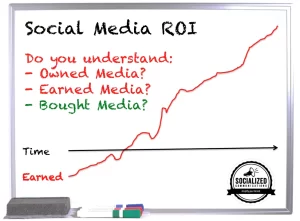
Social Media ROI (Return on Investment), is supposedly a hard thing to prove or measure. The problem isn’t the value of social media, or in many cases our approach to getting results – it’s about commitment – a good old fashion work ethic and focus on the longterm.
Today’s social business podcast discusses the dilema and the needed shift in consciousness required of leaders to win in the social media space.
Social Media ROI takes time and most people – even really smart people in leadership positions (who come from a different era) have a tough time planning more than 3 months into the future these days. When you build a social media presence it becomes an asset, one which increases in value over time but really requires no more input on your 18th month than it does on your first day (solid strategy required of course).
“Social media” as a term sucks. The minute we put the word “media” beside something we start to measure it like our latest newspaper campaign or radio blitz. Most media is disposable and impermanent. The radio ad, print as or email blast has a very finite window for generating results and then that money, well spent or not is gone. We spend our $20,000 for a month long campaign and then to drive more business we have to spend it again next month.
In this podcast we are going to discuss three types of media:
- Bought media
- Owned media
- Earned media
Failing to understand the difference between these three types of media and having the foresight and commitment to build a true media asset for their business is in my opinion one if the single largest roadblocks for most businesses social media success.
The post Why Companies Fail at Generating Social Media ROI appeared first on Shane Gibson's Podcast – Social Selling – B2B Sales and Influence.
Marketing Events Using Social Media #Podcast and #InfoGraphic 11 May 2013 1:08 PM (11 years ago)
Marketing events using social media and amplifying events using social media are two powerful ways to maximize our online and off-line marketing results. In our book Sociable! Stephen Jagger and I talk about the importance of using social media to get off of the internet and build relationships. At Socialized Communications we have developed an entire system and process to do this effectively. We have mapped out the key steps in this social media infographic and podcast to help you succeed at event marketing using social media. If you have some success in applying the steps and principles please let me know! You can download the PDF version of the Infographic here. Please note: LinkedIn events have been discontinued BUT remember to post your event to relevant groups, business pages and the profiles of key people in your organization.
The post Marketing Events Using Social Media #Podcast and #InfoGraphic appeared first on Shane Gibson's Podcast – Social Selling – B2B Sales and Influence.
Influence Marketing Book Interview with Danny Brown 11 May 2013 11:54 AM (11 years ago)
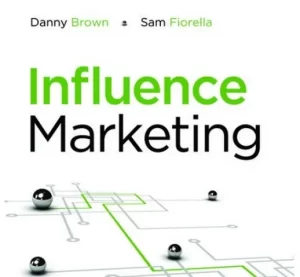
This week I had the great opportunity to interview Danny Brown on his new book co-authored with Sam Fiorella called Influence Marketing. Danny in my opinion is a Thought Leaders’ Though Leader – an awesome no BS resource for what really works in social media marketing.
The book launched yesterday globally and you can get it on Amazon in hardcover or Kindle format. According to HubSpot Danny Brown’s blog (DannyBrown.me) is the #1 Marketing Blog on the planet. Danny and I have been Tweeting and emailing each other for almost four years and we finally got to connect and do this podcast together
Here were some of the key take-aways from the podcast interview with Danny Brown:
- Most concepts of influencer marketing (especially through social media) are incomplete or focused on the wrong audience
- Good influencer marketing doesn’t start with social media gurus or big influencer, it starts with mapping out what your customer persona is and then identifying who impacts your customer buying decisions
- Klout and the many apps like it are great for identifying macro influencers but in many cases aren’t helpful identifying the actual micro influencers that directly impact your customer’s buying decisions
- 5 steps to to start doing your influence marketing right
We covered so much in this podcast that you’re just going to have to listen to it to get all the information.
Here’s a great InfoGraphic on Influence Marketing Sam and Danny just released that really demonstrates how many organizations are struggling with or don’t understand the importance of Influence Marketing (Click here For the High Res Version):
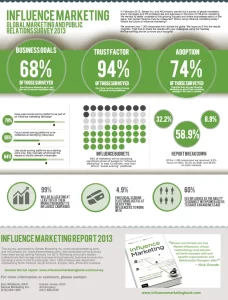
The post Influence Marketing Book Interview with Danny Brown appeared first on Shane Gibson's Podcast – Social Selling – B2B Sales and Influence.
This Week’s Top Tweeted Guerrilla and Ambient Marketing Pictures 25 Apr 2013 8:43 AM (12 years ago)
Guerrilla Marketing as Jay Levinson and I discussed in our book Guerrilla Social Media is defined as achieving conventional marketing goals by unconventional means. Ambient marketing is a spin-off of Guerrilla Marketing – you may spend the same dollars but it involves morphing the media and blending the environment and community blurring the lines between ad and viewer making them active participants in in the marketing activity. A couple of these photos may offend… but remember guerrilla marketing focuses on human emotions and depends upon them to take action.
[View the story “8 Awesome Ambient and Guerrilla Marketing Pictures From Twitter” on Storify]
8 Awesome Ambient and Guerrilla Marketing Pictures From Twitter
Here are a selection of the most popular Guerrilla and Ambient marketing tactics shared on Twitter over the past few days.
Storified by Shane Gibson· Thu, Apr 25 2013 09:39:04
The post This Week’s Top Tweeted Guerrilla and Ambient Marketing Pictures appeared first on Shane Gibson's Podcast – Social Selling – B2B Sales and Influence.
Become a Certified Sales Professional Langara College Online Course 3 Jan 2013 5:07 PM (12 years ago)
I wanted to personally introduce you to a program that can immediately help you boost your company revenues and personal career. It’s said that nothing happens until someone sells something. We teach a lot of companies how to use social media to build brand, community and drive leads to that business… but someone still needs to know how to sell to turn that into revenues.
Working with Langara College, international speaker Bill Gibson of Knowledge Brokers (South Africa) and our team here at Socialized we have put together the ultimate sales training program for new sales professionals and professionals that want to add a revenue generating toolkit to their repertoire. The methodologies in this program have been successfully used and implemented by major sales organizations including BMW, ABSA Bank, Gestetner, Vodacom, Siemens and Ford to name a few.
Here’s a quick video we shot where Shane Gibson (me) facilitator of the program walks you through what you will learn.
Our next program starts soon and here are the dates:
Successful Selling Strategies
(50203) Jan. 14, 2013
Persuasion, Communication & Relationship Building
(50204) Feb. 12, 2013
Motivation, Closing & Keeping Clients
(50205) Mar. 11, 2013
Sales & Planning Toolkit
(50206) Apr. 8, 2013
Each course is 18 hours in duration held over a six week period and consists of weekly reading, presentations, group discussions and live webinars. If participants can’t make the date and time of the live-webinar there will be an opportunity to watch a recorded version. All courses have testing built-in and each participant must have a passing grade in all courses to be eligible for the certificate.
- Successful Selling Strategies
- Persuasion, Communication & Relationship Building
- Motivation, Closing & Keeping Clients
- Sales & Planning Toolkit
The post Become a Certified Sales Professional Langara College Online Course appeared first on Shane Gibson's Podcast – Social Selling – B2B Sales and Influence.
Why Community is Still Number One in Social Media Marketing 13 Nov 2012 8:11 AM (12 years ago)
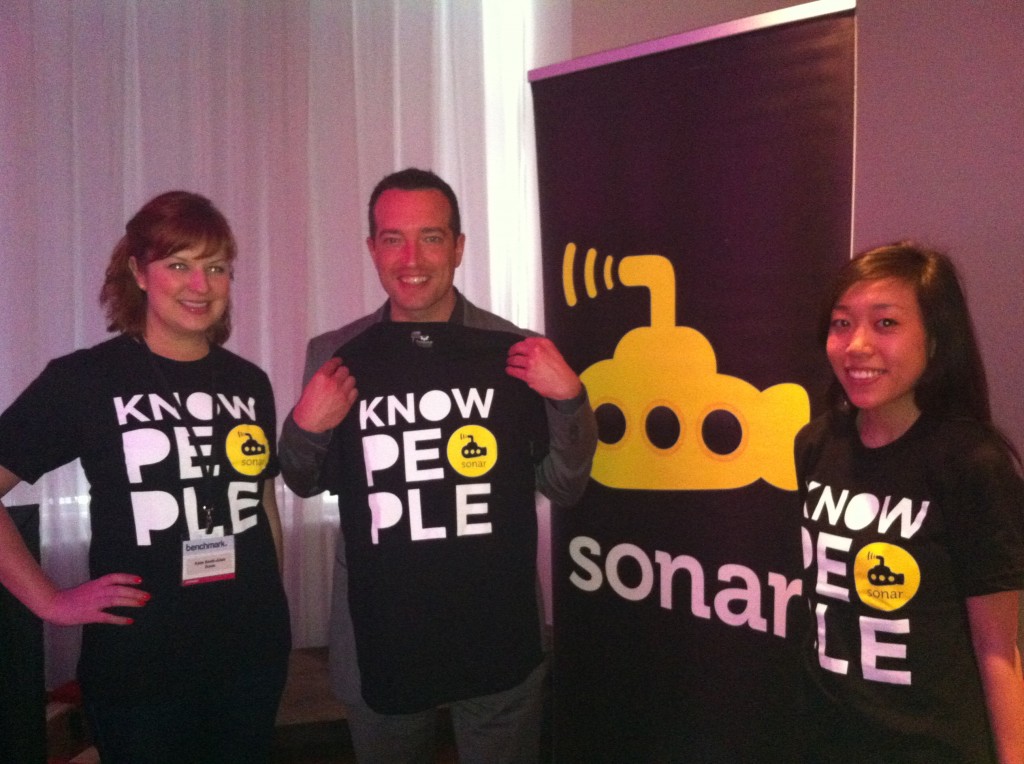
Community in social media is still number one. I posted the following tweet a couple days ago on Twitter and it received quite a bit of feedback and a few retweets:
Social Media Tip: social media scales through community, community grows by relationship building. Focus on people.
I then realized that I needed to expand on the topic. Here’s the basic outline of what I cover in todays podcast:
- Why community is vital if you want to leverage your social media marketing efforts and get your content and marketing to expand well beyond your own sphere of influence.
- Relationships build community, numbers alone don’t make a community. People who have an emotional connection with you and your brand are more likely to share your content and interact with you.
- Focus on people, even PR has changed. Bloggers and community influencers have now become gatekeepers of communities and your content won’t flow into those communities until you connect with those gatekeepers.
The post Why Community is Still Number One in Social Media Marketing appeared first on Shane Gibson's Podcast – Social Selling – B2B Sales and Influence.
6 Reasons You’re Silently Failing in Social Media 23 Oct 2012 11:43 AM (12 years ago)
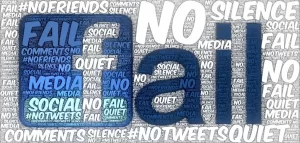
Most social media failures aren’t big public train-wrecks on the internet. They’re silent failures, people and brands that never rise above the noise and get noticed. Today’s podcast focuses on 6 reasons you may be silently failing and what you can do to turn things around.
The 6 Reasons You’re Silently Failing in Social Media:
1) Your content strategy is too safe
2) Your reach is minimal
3) Your conversation strategy is weak
4) The right people don’t know who you are or they don’t care
5) You have no social media plan
6) You’re not integrating social media
The post 6 Reasons You’re Silently Failing in Social Media appeared first on Shane Gibson's Podcast – Social Selling – B2B Sales and Influence.
7 Steps to Building a Social Business 8 Oct 2012 10:35 PM (12 years ago)
I have been a little too busy over the past 3 months. 20 seminars and training sessions, a half-dozen new clients for our social media agency and of course family time! I have a number of new podcasts in the que for you over the next 60 days but I thought I would re-ignite my blogging efforts by sharing a new video I just posted called “7 Steps to building a Social Business.” Also you can also check out our Socialized! Agency Blog for new and breaking news on the social media space. Enjoy!
Also Consider Gannon University Online MBA Programs as another way to build success in the business world. Before you get social a business foundation really helps.
The post 7 Steps to Building a Social Business appeared first on Shane Gibson's Podcast – Social Selling – B2B Sales and Influence.
5 Social Media Lessons From Wizard World Comic Con 2 Jul 2012 1:18 PM (12 years ago)

At Socialized! our Social Media Agency we have had some incredible opportunities over the past year to work with brands such as the Ford Dealers Association of BC and Alberta, the Certified Management Accounts, CGA BC, CGA Canada and the Make-a-Wish Foundation. However…even producing the week long event “Social Media Week Vancouver” did not prepare us for the passionate, loyal and often opinionated fans at Wizard World Comic Cons. This is a relatively new adventure for us but this podcast reviews 5 social media lessons I have learned (or re-learned) so far:
5 Lessons (Listen to the podcast for a full explanation):
- Tapping into a Tribe is much better than building one
- When people know you’re listening they talk, share, tweet, like and follow
- Amplify the moment
- Run contests to find influencers
- Partner to expand influence
Here are some of the links and resources mentioned in the podcast:
Wizard World Comic Con Sites and Resources
- Wizard World Event and News Site
- Wizard World Comic Con Blog
- Wizard World Facebook Page
- Wizard World on Twitter
Social Media Monitoring:
Socialized! Social Media Agency
- Socialized! Blog
- Socialized! Team on Twitter
- Shane Gibson – Chief Social Officer on Twitter
- Tris Hussey – Chief Geek and Pixel Washer on Twitter
- Anthony Caridi – President on Twitter
The post 5 Social Media Lessons From Wizard World Comic Con appeared first on Shane Gibson's Podcast – Social Selling – B2B Sales and Influence.
Ford Dealer Social Media Success Story – Lebanon Ford Podcast 5 Apr 2012 1:23 PM (13 years ago)

Social Media Podcast: Ford dealers across North America are executing some amazing social media strategies. While catching up on my reading and best-practices I stumbled across a great case study on how Lebanon Ford (Ohio) has had some incredible success. They don’t just have a great social media team, they have built a truly social culture in their dealership that has resulted in a 260% year-on-year increase in Internet sales of vehicles and a significant increase in walk-ins and revenues overall.
I asked Zack Bello, Marketing and Communications Manager at Lebanon Ford to share with me how they have built such a great social enterprise that drives real business results using social media.
Quick Links:
The post Ford Dealer Social Media Success Story – Lebanon Ford Podcast appeared first on Shane Gibson's Podcast – Social Selling – B2B Sales and Influence.
10 Corporate Social Media Myths Dispelled 28 Feb 2012 2:53 PM (13 years ago)
Today’s podcast is about 10 social media myths that are commonplace in the companies and organizations that we work with at Socialized! Agency. Many of these misconceptions stop organizations from truly realizing the potential of social media (or even starting). Below I have listed the myths. Have a listen to the podcast and let me know what you think.
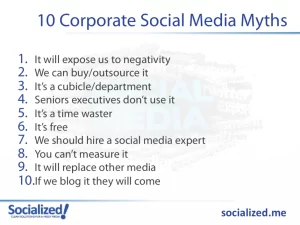
The post 10 Corporate Social Media Myths Dispelled appeared first on Shane Gibson's Podcast – Social Selling – B2B Sales and Influence.
11 Social Media Trends for 2012 27 Jan 2012 2:32 PM (13 years ago)
Today’s podcast is on 11 Social Media Trends for 2012. Here’s the outline for my podcast – I would love your feedback and thoughts:
Key trends
- How not if
- TV on everything and social on everything (Major adjustments for broadband providers will need to be made to keep pace with this multi-screen universe)
- Location based marketing will continue to grow
- Social cultures will evolve out of social use
- Social CRM will move mainstream
- India is rising
- A return to engagement
- Rewards versus contests
- Filters will dampen the noise
- Social networks will become more fluid and mobile
- Corporate social intranets
Potential pitfalls
- App overload
- Lack of conversation management
- No policy, training or identity management
- Lack of true internal social culture
- Domestic focus and culture
- Competitors get better at local, mobile and intimacy
- No follow-up after the contests (see engagement)
- Hard push back for no engagement
The post 11 Social Media Trends for 2012 appeared first on Shane Gibson's Podcast – Social Selling – B2B Sales and Influence.
Vancouver Too Many Band-aid Solutions for Systemic Problems 3 Jan 2012 11:25 AM (13 years ago)
No problem can be solved from the same level of consciousness that created it. – Albert Einstein
This is not my typical post. It consists of more questions than answers and what I really want to know is how you feel about these images.

This is today’s 24H News frontpage. It seems that what makes the headlines is not food shortages at the food bank or that we have the most chronically destitute skid row on the planet. It’s about the fact that we have an abundance of crack users and not enough crack pipes. We have a systemic problem not just and addiction problem. Paraphrasing the Einstein quote above – the people and the thinking in the system that have allowed this social disease to propagate are very unlikely to be able to solve the problem.

8 Blocks away from Canada’s poorest postal code where thousands drug users live in 3rd world conditions I snapped this picture. It’s from boxing day. Seems people waiting to get into the Best Buy Boxing Day Sale felt it was okay to pile their empty cups and garbage on top of two news stands instead of (gasp) holding onto them and disposing of them in an ethical way. My hypothesis: these consumer drones were so fixated to their big screen TV’s they couldn’t make the right decision in their trance. In addition to this… everyone else was doing it. (similar logic for the riots).

Lastly I think that this image sums it up. We should be reaching for this button more often than the “Easy Button.” Our thinking and level of personal responsibility on all fronts needs to be adjusted. What has to change? I think as we discard our garbage while we buy new “things” and hope that big brother will take care of all of our problems we will be doomed to propagate these social sicknesses and to a greater level. The solution isn’t more money from government or more “things” – it’s a new consciousness. What has to change on a individual level to make this happen?
The post Vancouver Too Many Band-aid Solutions for Systemic Problems appeared first on Shane Gibson's Podcast – Social Selling – B2B Sales and Influence.
How to Hire the Right Social Media Manager the First Time 21 Dec 2011 9:08 PM (13 years ago)
Hiring a social media manager, social media coordinator, chief tweeter or whatever you might call it is a challenging endeavor. There are many brands which have experienced great success and many who have also shot the foot off of their brand on the internet. Social media is not a department or a cubicle, it represents the most powerful word of mouth (or word of mouse) channels that have ever existed. Too many organizations aren’t strategic about who they hire internally or how they intend on implementing social media and integrating it into their business processes. Today’s podcast covers four major areas you need to look at (there are many more) before hiring.
The post How to Hire the Right Social Media Manager the First Time appeared first on Shane Gibson's Podcast – Social Selling – B2B Sales and Influence.
The New Rules of Engagement in Social Media 28 Nov 2011 8:35 AM (13 years ago)
These are the 7 Rules of Engagement from Sociable! (http://fb.me/sociablebook) that Stephen Jagger and I developed almost 2 years ago… and the rules are now more important than ever! Enjoy! – Shane Gibson.
The post The New Rules of Engagement in Social Media appeared first on Shane Gibson's Podcast – Social Selling – B2B Sales and Influence.
How to Make a Facebook Like Box 17 Nov 2011 9:06 AM (13 years ago)
Many people ask us how to do this. Here’s the answer:
The post How to Make a Facebook Like Box appeared first on Shane Gibson's Podcast – Social Selling – B2B Sales and Influence.
Community Engagement Infographic for Associations and Non-Profits 21 Oct 2011 6:10 AM (13 years ago)
Today as associations, non-profits and any other member based organizations we need harness the power of community to grow our member base. This infographic is a work in progress but I wanted to post it and get your feedback. What are your thoughts?
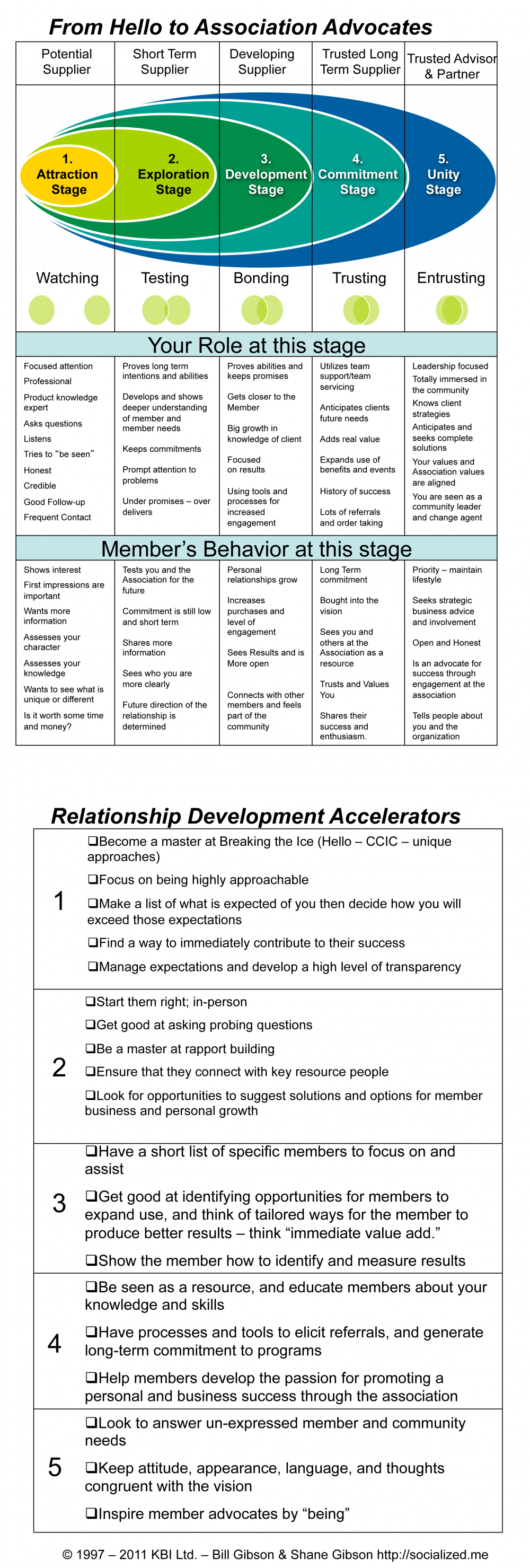
The post Community Engagement Infographic for Associations and Non-Profits appeared first on Shane Gibson's Podcast – Social Selling – B2B Sales and Influence.
Social Media Marketing for Hotels and Resorts 20 Oct 2011 2:33 AM (13 years ago)
Social media use by hotels for their marketing, service and branding initiatives is growing rapidly. Today a tweet posted by a customer from a hotel front lobby can reach more people than an ad in Air Canada’s in flight magazine. In addition to this we have all witnessed the havoc that a Twitter influencer can have on a brand after the broadcast their disdain for the bad service they have received to their 20,000 followers.
Social Media Tools and Networks are a significant force that is growing. We cannot afford to avoid using them. The truth is in the numbers:
•Facebook: 800 Million People
•Linkedin: 100 Million Professionals representing every company on the Fortune 500
•Twitter: 250 million status updates per day and Twitter search is now the second most used search engine on the planet
•Youtube: 2 Billion Views Per Day
A recent study released by AirPlus International Travel on business travelers has a also cited a significant spike in social media use and stated the following:
“83 percent of respondents indicated they participate in social media sites this year, as compared to 77 percent last year. When delving into specific platforms, LinkedIn users, which held virtually steady in 2009 (58 percent) and 2010 (59 percent), jumped to 74 percent this year. Facebook also grew from a low of 45 percent in 2009 to 55 percent in 2010 and to 62 percent this year.” – Travelpulse.com
This all adds up to one important conclusion. It’s not a question of whether or not your customer uses social media or social networks. The question is are you fully prepared to profit from it?
Progressive marketers such as the Palms Resort and Casino in Las Vegas have seen the rise of the social customer and have responded proactively. Using the industry leading social media influence ranking index Klout.com the Palms will upgrade and roll-out the red carpet for big influencers. They also provide some basic perks for those of us that are social regardless if we rank high – a thank-you for connecting with them socially. Palms calls it their “Klout Klub.”
Before using social media we need to understand some core principles:
#1) Social Media messaging is not produced solely by a marketing team.
Expand marketing roles to everyone possible, taking the number of marketing messages and multiplying them significantly online. In addition to this realize that any customer facing staff need to be well versed in your Facebook, Twitter or Foursquare promotions. Nothing is worse than investing in a brilliant online marketing campaign that your front office doesn’t deliver on.
#2) Provide social media training to all staff.
More important than training on the tools is training on the principles of using the tools. There is a specific etiquette to engaging people in each of the major networks.
#3) Have a social media policy and process that outlines how to engage customers online, and how to deal with influencers in-person.
This should include guidance on how to deal with negativity, social events, and clients. Important note: If your guidelines are too stringent and you take the fun out of Twitter or blogging don’t be surprised if your efforts fall flat.
#4) Listen and Engage in Real-time
Social media is about listening, community, adding value and entertaining people. It’s about a dialogue. It is a two-way communications medium. “Talking at” people or “blasting updates” is not true engagement and it’s not good for your brand either. The biggest opportunity in social media in in the “now.” It’s about instantly engaging the influencer who has announced to Twitter that they are in your lobby, or thanking the person who took the time to check-in on Foursquare while attending a conference at your hotel. That instant feedback and dialogue is what builds brands and lets the customer you care on a very personal level.
#5) Get Local
Every hotel group should have a Twitter and Facebook account but I don’t believe that you should stop at a nationally operated profiles. Go the next step and empower your front line marketing and sales teams to engage with customers on a local level using Twitter, Facebook and any other platforms your customers use. This will give you an advantage over marketing generalists that have not gone hyper-local with their social media efforts.
This blog post was adapted from an article written for the Cdn Hotels Marketing & Sales Executives.
Shane Gibson (@ShaneGibson) is a sales and social media speaker who has addressed over 100,000 people on stages on three continents over the past 15 years. He is also co-author of Guerrilla Social Media Marketing and Sociable! How Social Media is Turning Sales and Marketing Upside-down. When he’s not speaking or Tweeting he is in the social media trenches working with his clients as Chief Social Officer for Socialized! Ltd. (http://socialized.me)
The post Social Media Marketing for Hotels and Resorts appeared first on Shane Gibson's Podcast – Social Selling – B2B Sales and Influence.
ERDI Fall Conference: Social Media in Schools 14 Oct 2011 1:59 PM (13 years ago)
Today’s podcast and blog post are a result of some great dialogue, ideas and amazing research findings that were unearthed at yesterday’s panel at the ERDI conference here in Calgary, Alberta.
The panel I sat on was on “Technology Implementation over the last 20 years in our schools. The panelists were: Michael Goldberg, Economist, Marty Keast, President of the School Division for Pearson Education, Linda Fabi, Director of Education for the Waterloo District School Board and the panel was kicked off by a very engaging and insightful talk by Thomas Greaves.
Thomas who is the co-author of “America’s Digital Schools” spearheaded an in-depth research project called Project Red, of which he shared key findings with us. They did an in-depth study of 997 schools (K-12) in the USA and looked at 136 different variables in regards to technology and it’s impact on student engagement, drop rates and even the positive economic impacts and savings associated with schools that are digital.
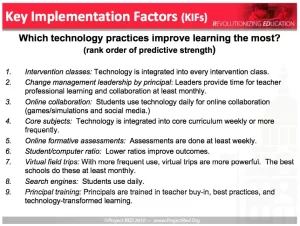
The schools that had some or all of the above 9 factors implemented effectively outperformed comparable schools that had not embraced technology. Very few schools (I believe only 1 if my notes are correct) apply all 9 strategically and comprehensively.
The one thing that really stood out for me is that fact that students that were allowed to regularly use search and social media in the classroom outperformed those that didn’t. One big question from the audience of over 100 school superintendents, directors and technology partners is: “Where a how do we start with social media?”
My thoughts would be to do the following: (which is expanded upon in this podcast):
#1) Start with a social media policy for district staff from senior executives to principles and teachers. Then expand that to a policy for students, volunteers, parents and any other stakeholders.
#2) Have a series on initial buy-in sessions for staff at all level to help see the scope of social media and it’s impact and relevance in education. This is vital as so many people have varied knowledge and assumptions about social communications. The biggest barrier to implementation is often misinformation and/or politics.
#3) Put together a step by step strategy to implement social media at the school board level. (If leadership isn’t using it how can they tell principals and teachers to do it?
#4) Collaboratively work with Principals and Teachers to build an implementation plan at the school level. (Start with a few pilot schools)
#5) Each plan should involve training in both policy, the rules of engagement, online learning best practices, and in the key tools used by today’s digital citizens (including but not limited to Facebook, LinkedIn, Twitter, YouTube and social search/monitoring) Some of this training can be done by student leaders.
#6) Develop curriculum to help get students social media literate. This educational component must address online etiquette, safety, and the value of collaboration and positive social communications.
#7) Reward collaborators and contributors at all levels.
There is a lot more to this process but the key opportunity and core ingredient for success in using social media for learning is the bi-directional communications and collaborations. It’s no longer about talking at kids in the classroom, it’s about engaging them in two-way dialogue and creating an environment where a network of students (and their teachers) can learn together through networked intelligence.
One statement that was made over and over was that collectively the computing power of smartphones that people bring to school far out-powers what is in the average school computer inventory/labs. The educational environment of the very near future is highly networked, always on, and very mobile. Those organizations that apply all 9 Factors indicated above can prosper in this new environment.
The post ERDI Fall Conference: Social Media in Schools appeared first on Shane Gibson's Podcast – Social Selling – B2B Sales and Influence.
Double Double by Cameron Herold – Book Interview (Podcast) 20 Aug 2011 11:41 AM (13 years ago)
Today’s podcast is an interview with Cameron Herold on his brand new book “Double Double – How to Double Your Revenue and Profit in 3 Years or Less.” I read this book twice I found it so valuable and so I reached out to Cameron and asked him to come on the show.
If you’re a business leader, entrepreneur or business builder you need to read this book. It’s packed with usable real-world advice and success strategies.
The post Double Double by Cameron Herold – Book Interview (Podcast) appeared first on Shane Gibson's Podcast – Social Selling – B2B Sales and Influence.
The Role of Psychology and Community in Guerrilla Marketing 15 Aug 2011 1:45 PM (13 years ago)
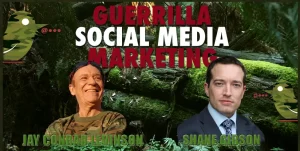
Psychology in marketing is still a rather untapped landscape. Since I stepped into the ring and became a guerrilla author in writing Guerrilla Social Media Marketing with Jay Conrad Levinson I have come across all kinds of misunderstanding, misuse and abuse of the term guerrilla marketing. Today’s podcast was inspired by what I can describe as a well meaning (or possibly not) but off-base commenter on the Creative Guerrilla Marketing blog.
I decided instead of just replying in the comments section that I would take the time to respond in the form of a podcast. Why? It’s so vital to understand the role of psychology and community in Guerrilla Marketing.
I also think it’s important to establish that Guerrilla Marketing is well defined, and it’s body of wisdom and definition that is widely accepted and used by over 20 million readers of the Guerrilla Marketing Series of books. Some people will take pieces of the body of wisdom and use them to suit their outlook on marketing but the whole is greater than the sum of the parts. In addition to this just because you slap the term guerrilla on a book, blog post or marketing campaign it doesn’t make it guerrilla.
Here are the facts:
- The term “guerrilla marketing” was coined by Jay Conrad Levinson and popularized by his best selling book that was released in 1983. Guerrilla Marketing uses unconventional means to achieve conventional goals, it relies on time, energy and imagination rather than a big marketing budget. (We added community on-top of time, energy and imagination for Guerrilla Social Media Marketing because of the vital role it plays in social media marketing).
- Since then over 20,000,000 (that’s twenty million) books have been sold and read in Jay Levinson’s Guerrilla Marketing series of books making it the #1 best selling series of marketing books in history. Jay’s definition is the original and most widely accepted definition and grows by 1million readers and fans per year.
- Guerrilla’s apply and use the 19 Guerrilla Marketing Secrets (Principles).
Instead of paraphrasing why true guerrillas must understand and depend on psychology, I have posted in Jay’s own (timeless) words the importance:
Guerrilla marketing does not rely on guesswork because wrong guesses are so darned expensive. Instead, it relies upon psychology as much as possible. Psychology used to be a body of theories. Today, many of those theories have been debunked while others have been transformed into laws, actual laws of human behavior. Guerrillas lean on these laws because they want certainty to be a hallmark of their marketing.
There are 15 things that all guerrillas know about psychology as marketing is slowly transforming from guesswork into science:
- Purchase decisisons are made in the unconscious mind. People may say the words consciously, but they process the data in their unconscious.
- We now know how to access the unconscious mind. The way to do it is with repetition. Put these two thoughts together — purchase decisions are made in the unconscious, and you can access the unconscious with repetition, and you begin to understand the entire process of marketing.
- People are either left-brained or right-brained. Left-brained people respond to sequential, logical reasons and love marketing that gives ten reasons to buy. Right-brained people respond to emotional, aesthetic appeals and love marketing that looks stunning and tugs at heartstrings. Guerrillas are sure to hit both left and right-brained people.
- Businesses that succeed are those that form two bonds with all customers: the human bond and the business bond. The stronger the human bond, the stronger the business bond. Connect up as two human beings before you connect up as buyer and seller.
- All marketing has two messages — the stated message and the metamessage. The stated message is what you say. The metamessage, often stronger than the stated message, is what your marketing looks like, feels like, where it appears, what size it is, and how professional it appears.
- If you’re interested in increasing your share of market, the way to do it is to first increase your share of mind. If you go only for the share of market, don’t expect much customer loyalty — or even many customers.
- There are two schools of marketing hard at work in America these days — Freudian marketing, which is based on Sigmund Freud’s work and aims for a change of attitude — and Skinnerian marketing, based on B.F. Skinner’s proof of the power of behavior modification. Which does a guerrilla choose? Both. Guerrillas constantly implant attitudes while peppering their prospects with special offers that require instant action.
- During a recession, the tactics that generate sales are: leaning on current customers, enlarging the size of each transaction, offering a guarantee, and showing that high prices are an assurance against making a purchase mistake — something nobody wants to do during a recession.
- Realize that people hate taking the hard step of buying something, so guerrillas use soft steps to make the hard step a little easier. Soft steps include things like free consultations, free seminars, brochures, videos, demonstrations, and free samples.
- Full color marketing materials increase retention by 57% and increase inclination to buy by 41%. And the cost of full-color drops dramatically if you tell the printer you have the patience to wait for a gang run.
- Use as much non-verbal communication as you can. There are only about 250,000 commonly-used words in the English language, but there are 600,000 non-verbal gestures. They are more potent than the spoken words.
- You can gain guerrilla marketing power if you blend customer insight with product insight. The more your insight, the better your marketing.
- The way guerrillas view their marketing is as an opportunity to help their customers succeed. If you do the same, your profits will show it.
- A key to successful marketing is making each of your customers feel a special way. The way they should feel is unique. Not easy, but necessary.
- It is essential that you constantly feel a sense of dissatisfaction with your marketing and try to improve it without changing your identity. This personality trait will fare you well in the marketing wars.
So I have a challenge when someone (for their own self-interest) tries to redefine Guerrilla Marketing. Add to it? Great! Innovate? Great! But don’t negate, shrink, or dilute it. Back off. It is a timeless body of wisdom that has grown to be mainstream but it is more relevant than today than it was 20 years ago. It works, it’s simple, and it’s time tested.
Guerrilla Marketing is a body of wisdom and movement. It’s bigger and more important than campaigns, tricks, or tactics. To learn more about the book that started the movement (and continues to grow daily and globally). You can visit http://gmarketing.com.
Have a listen to the podcast and tell me what you think!
Like our Facebook Page
The post The Role of Psychology and Community in Guerrilla Marketing appeared first on Shane Gibson's Podcast – Social Selling – B2B Sales and Influence.
How to Build a Massive Online Identity – Interview with Patrick Schwerdtfeger 27 Jul 2011 12:22 AM (13 years ago)
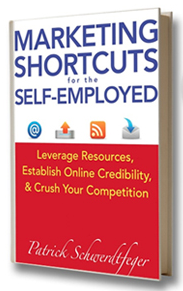 Today’s podcast is an interview with Patrick Schwerdtfeger author of the new book “Marketing Shortcuts for the Self-Employed” (2011, Wiley) and a regular speaker for Bloomberg TV.
Today’s podcast is an interview with Patrick Schwerdtfeger author of the new book “Marketing Shortcuts for the Self-Employed” (2011, Wiley) and a regular speaker for Bloomberg TV.
We talked about how you can take one blog post and repurpose it in at least seven different ways. Patrick shared with us a few simple tips, that can build a MASSIVE online identity while working less than most of our competitors competitors.
We also covered some important social media how-to’s:
1. Five places to get great content ideas.
2. Seven ways to repurpose your content online.
3. The reality behind blogs, content and getting found online.
4. The three-part “winning formula” for social media success.
For more information on Patrick’s book and a free gift visit http://www.80shortcuts.com/gifts
The post How to Build a Massive Online Identity – Interview with Patrick Schwerdtfeger appeared first on Shane Gibson's Podcast – Social Selling – B2B Sales and Influence.
Social Media Speaker Video: Going Social with CRM #SCRM 41:28 14 Jul 2011 3:23 PM (13 years ago)
I recently delivered the keynote speaker address to CDC Software’s CRM conference in Las Vegas. This is one of the most recent social media for sales professionals talks I have done and it’ not just a promo clip. Here’s the full 41 minutes on “Going Social with CRM – How Social Media is Turning Sales Upside-down:
Here are the slides to go with the presentation:
Shane Gibson (@ShaneGibson) is a sales and social media speaker who has addressed over 100,000 people on stages on three continents over the past 15 years. He is also co-author of Guerrilla Social Media Marketing and Sociable! How Social Media is Turning Sales and Marketing Upside-down. When he’s not speaking or Tweeting he is in the social media trenches working with his clients as Chief Social Officer for Socialized! Ltd. a social media agency and training organization.
The post Social Media Speaker Video: Going Social with CRM #SCRM 41:28 appeared first on Shane Gibson's Podcast – Social Selling – B2B Sales and Influence.
Social Media Week Vancouver Registration Get Involved! 6 Jul 2011 8:29 PM (13 years ago)
Today’s podcast is a little different than most. It outlines the upcoming Social Media Week in Vancouver that my team and I at Socialized! are putting together (with some massive help from our community, sponsors and our advisory board). I will posting a full text outline of this as well on the Social Media Week Vancouver blog shortly. In the meantime, have a listen and if you’re anywhere near Vancouver we would really like to have you attend, sponsor or even speak.
The post Social Media Week Vancouver Registration Get Involved! appeared first on Shane Gibson's Podcast – Social Selling – B2B Sales and Influence.
Assessing Defining and Measuring Your Social Media Influence 30 Jun 2011 6:35 AM (13 years ago)
Today’s podcast is on defining and measuring your social media influence. Dave MacDonald who is an integral part of our team at Socialized! works on our social media assessment process with our clients. Recently he suggested we add a component to our assessment that measures how well the client we are working with is engaging and connecting with influencers in social media.
The question of course is what makes someone influential? Should we look at the Klout score of the people they interact with? Possibly the number of important bloggers that write about them? Or is it simply how viral or broad their message gets shared? As a guerrilla social media marketer I measure success in profit and net-action or results. For this podcast I want to focus on a section right out of our Social Media Rules of Engagement training module. Here is the basis for what we consider influential:
John C. Maxwell said it best when he said “Leadership is Influence.”
He didn’t say leadership is a good idea, a vision or a title. He said influence. Influence can be defined for our purposes as causing someone to take action (internally as and personal growth or externally as in doing something). So we can imply the following:
Influence = Action
Following are some examples of action:
- Message gets passed on
- Get linked to
- Changing or molding views
- Registering and attending events
- Solving problems
- Getting feedback
- Listening and creating brand and relationships
- Generating dialogue
- Getting press
- Capturing an e-mail address or contact info
There are many more. The important factor here is to go beyond the Klout score mentality and realize that people are not an algorithm. I check my Klout on a regular basis, but it’s value of the actions we create determine if we are truly influential. So to summarize this:
Leadership = Influence = High Value Action
The post Assessing Defining and Measuring Your Social Media Influence appeared first on Shane Gibson's Podcast – Social Selling – B2B Sales and Influence.
Social Media Monitoring Strategy Podcast and InfoGraphic 26 Jun 2011 12:17 PM (13 years ago)
Today’s podcast is on social media listening, monitoring and strategy. I have also done a quick infographic / flowchart on the process and key points from the social media monitoring podcast. Have a listen and let me know what you think.

The post Social Media Monitoring Strategy Podcast and InfoGraphic appeared first on Shane Gibson's Podcast – Social Selling – B2B Sales and Influence.
The Seven Sins of Social Media Citizens 24 Jun 2011 12:04 PM (13 years ago)
This podcast was one I was apprehensive to post. I’m not angel — but I thought I would share this perspective — possibly as a social media penance. Here’s a quick list.
The Seven Sins of Social Media Citizens
- Entertaining Rumor
- Forgetting Where You Started
- Joining Community Solely for Personal Growth
- Disengaged Once We Are Launched
- Repurposing Without Credit
- Using Your Voice to Bully Other Opinions
- Building Blockades Offline (Being a two-faced Tweeter)
I have broke most of these rules (it was a learning process) and they were hard lessons. Hopefully this podcast will help you shorten your learning curve. Did I miss anything?
The post The Seven Sins of Social Media Citizens appeared first on Shane Gibson's Podcast – Social Selling – B2B Sales and Influence.
The Origins and Evolution of Social Media Consultants (Podcast and InfoGraphic) 24 Jun 2011 11:04 AM (13 years ago)
No this is not a post ranting about social media experts and who does or doesn’t qualify to teach and implement strategy. Today’s podcast was inspired by a sketch I did recently, attempting to map out the origins of the now burgeoning social media consulting industry. We all come from different places and have different strengths. Check out the cryptic drawing below and listen to this podcast. What are your thoughts? Did I miss anything? (Click on image to see larger one on Flickr)
The post The Origins and Evolution of Social Media Consultants (Podcast and InfoGraphic) appeared first on Shane Gibson's Podcast – Social Selling – B2B Sales and Influence.
#CanucksRiot, Social Media and Crowsourced Policing 21 Jun 2011 10:20 AM (13 years ago)
My friend and associate Kemp Edmonds who heads up Hootsuite University asked me an interesting question at a barbeque last weekend. He asked me what I thought about the crowdsourced policing that had occurred during the Vancouver Canucks Riot last week. I personally see it as a fact of life. Anything you do can end up on the internet and then on CBC or CNN or BBC — in seconds. The question of “should we be monitoring” each other is a tough one. The same people who think that citizens shouldn’t be monitoring each other are the same people who cry foul when a police officer objects to being recorded by a passerby’s cell phone camera during an arrest. Corporate accountability, the move toward open government, and citizen journalism (Even Yelp) has put us all under a microscope. Have a listen to today’s podcast and let me know your thoughts on the issue. Here’s the gist of my opinion:
If you don’t want it on the internet – DON’T DO IT – and if you do it and it ends up on the internet it’s not the crowd’s fault or the the social media communities fault — the responsibility is yours. This goes for executives, public figures and teenagers at a riot. We are humble today or we will be humbled tomorrow.
What are your thoughts?

The post #CanucksRiot, Social Media and Crowsourced Policing appeared first on Shane Gibson's Podcast – Social Selling – B2B Sales and Influence.
